EXTREMELY RARE! WWII SECRET October 1944 Battle For Leyte Gulf Headquarters of the Commander in Chief Military Intelligence Report

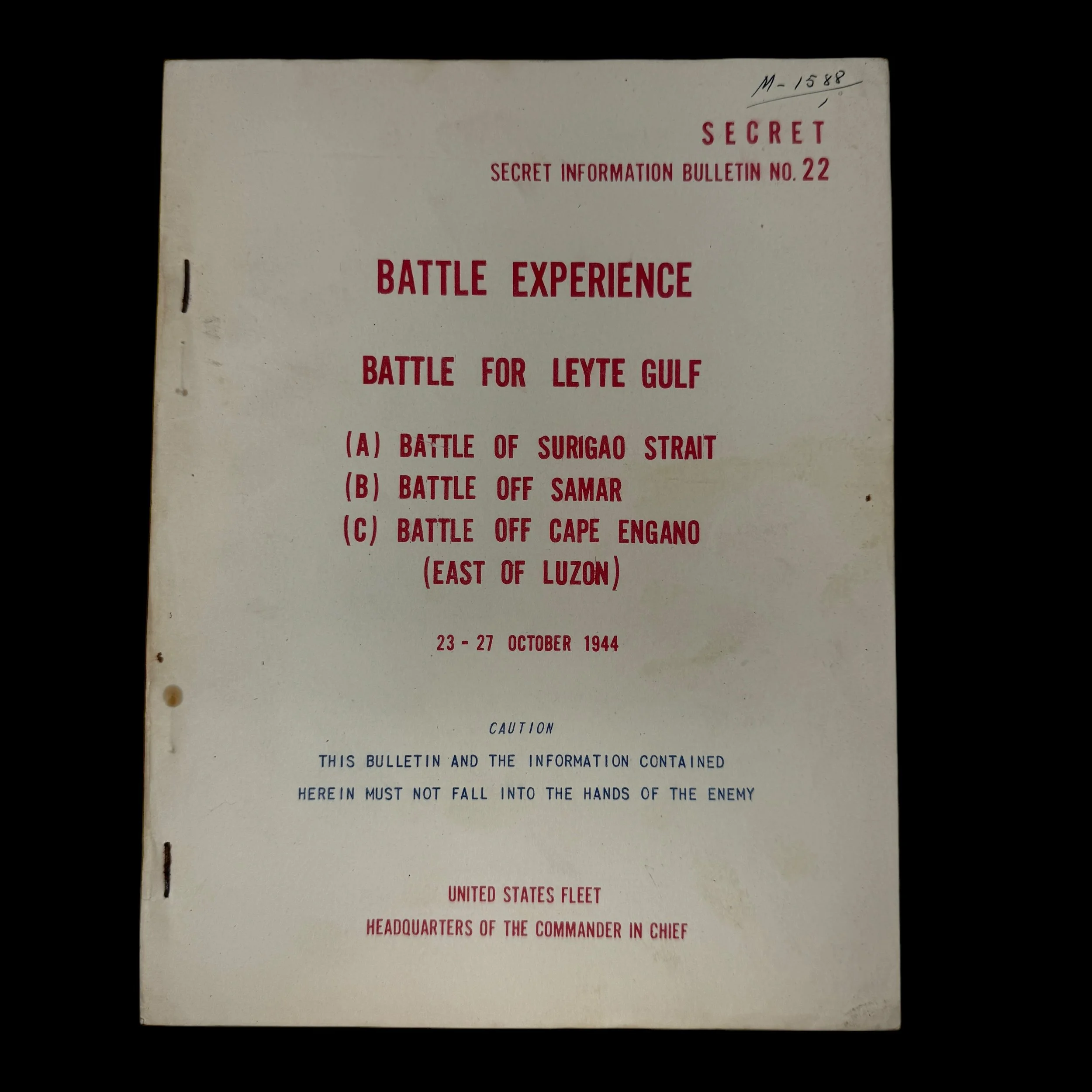
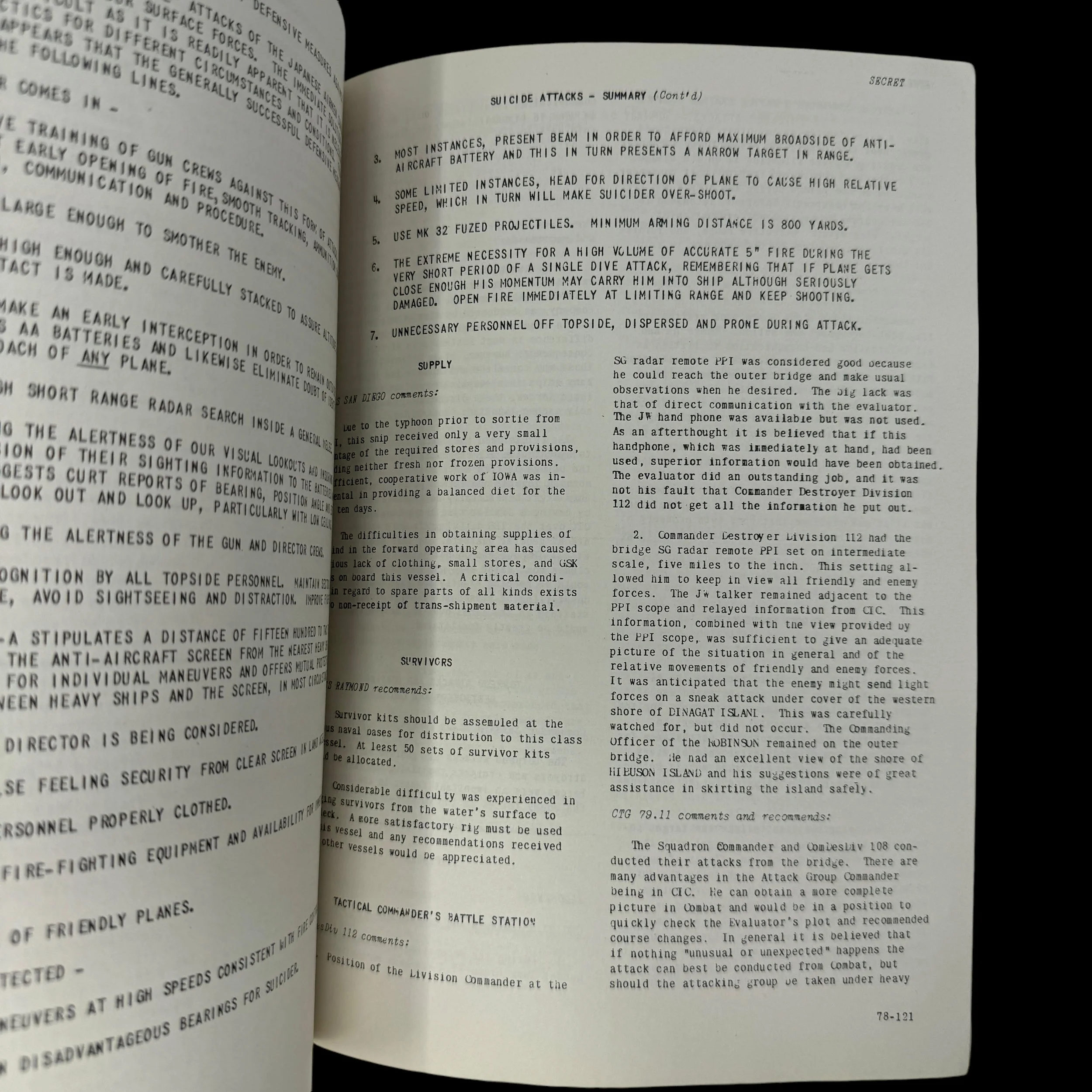
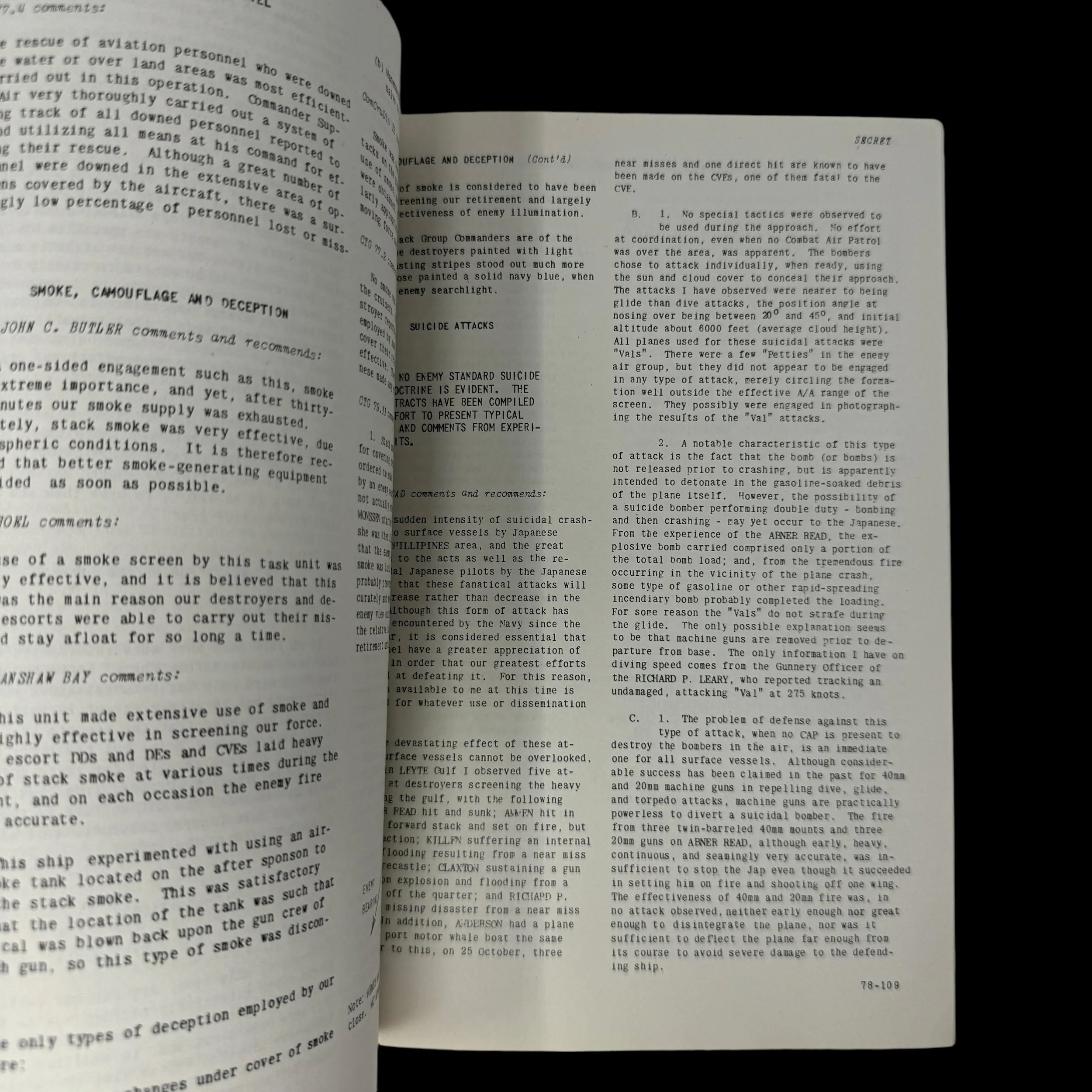
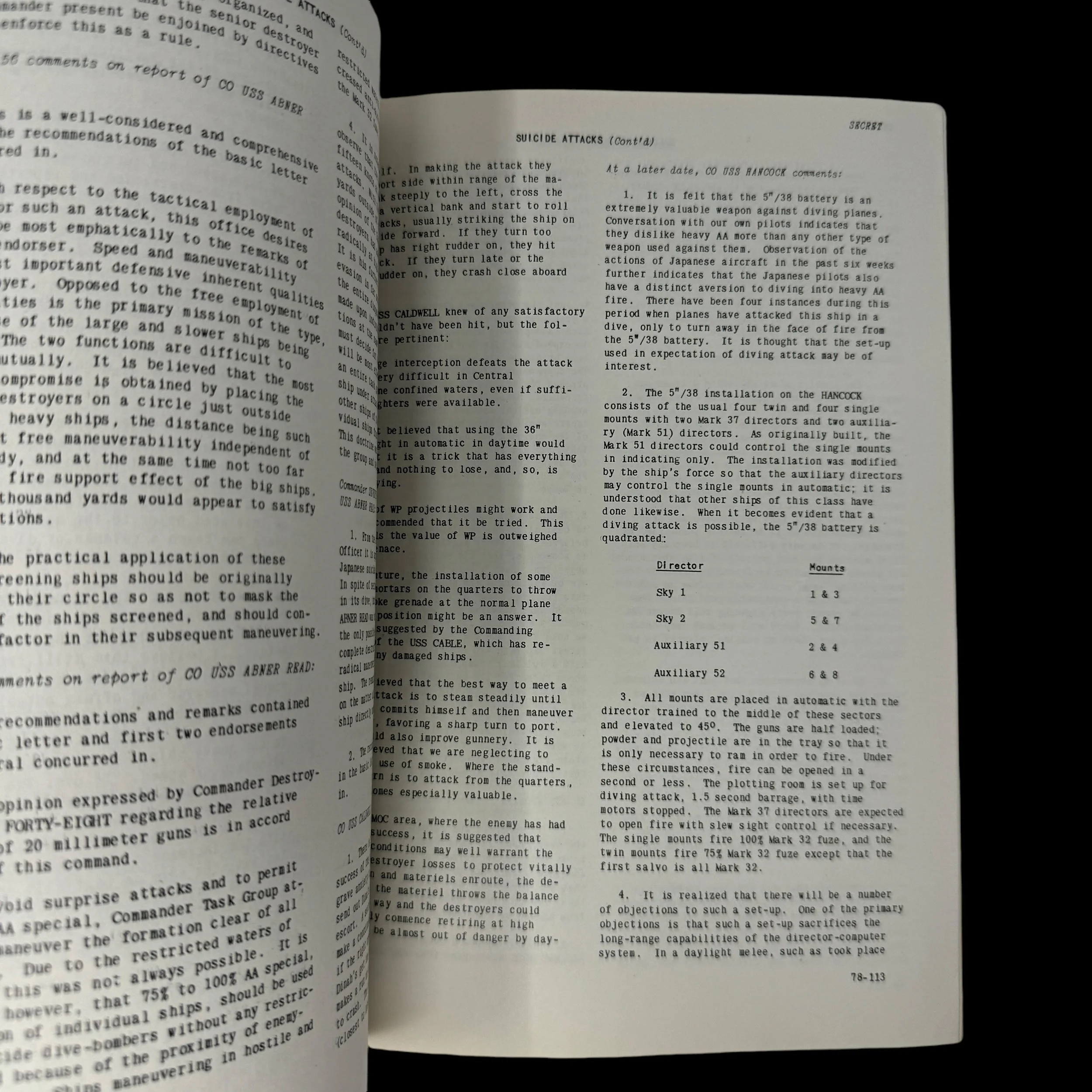
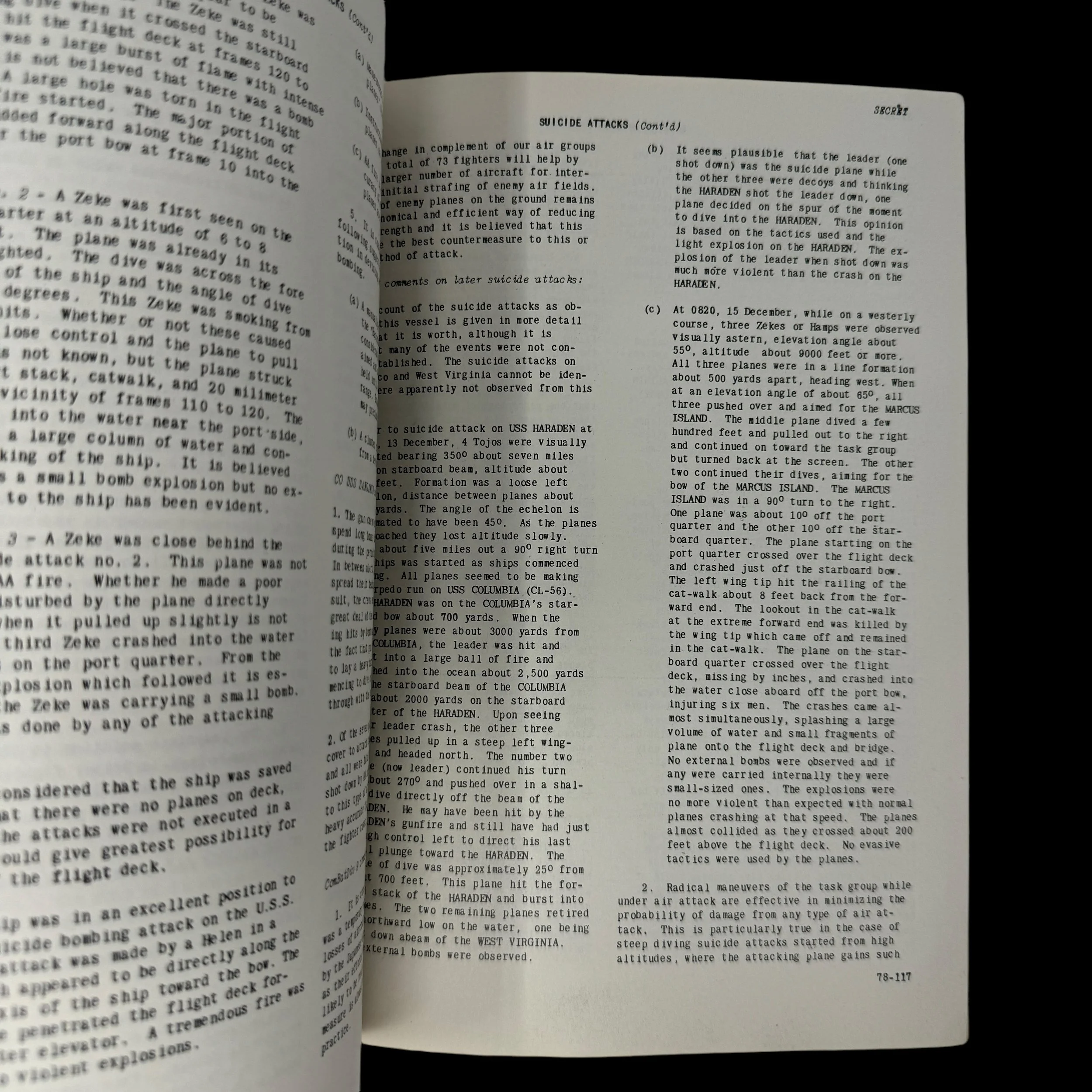
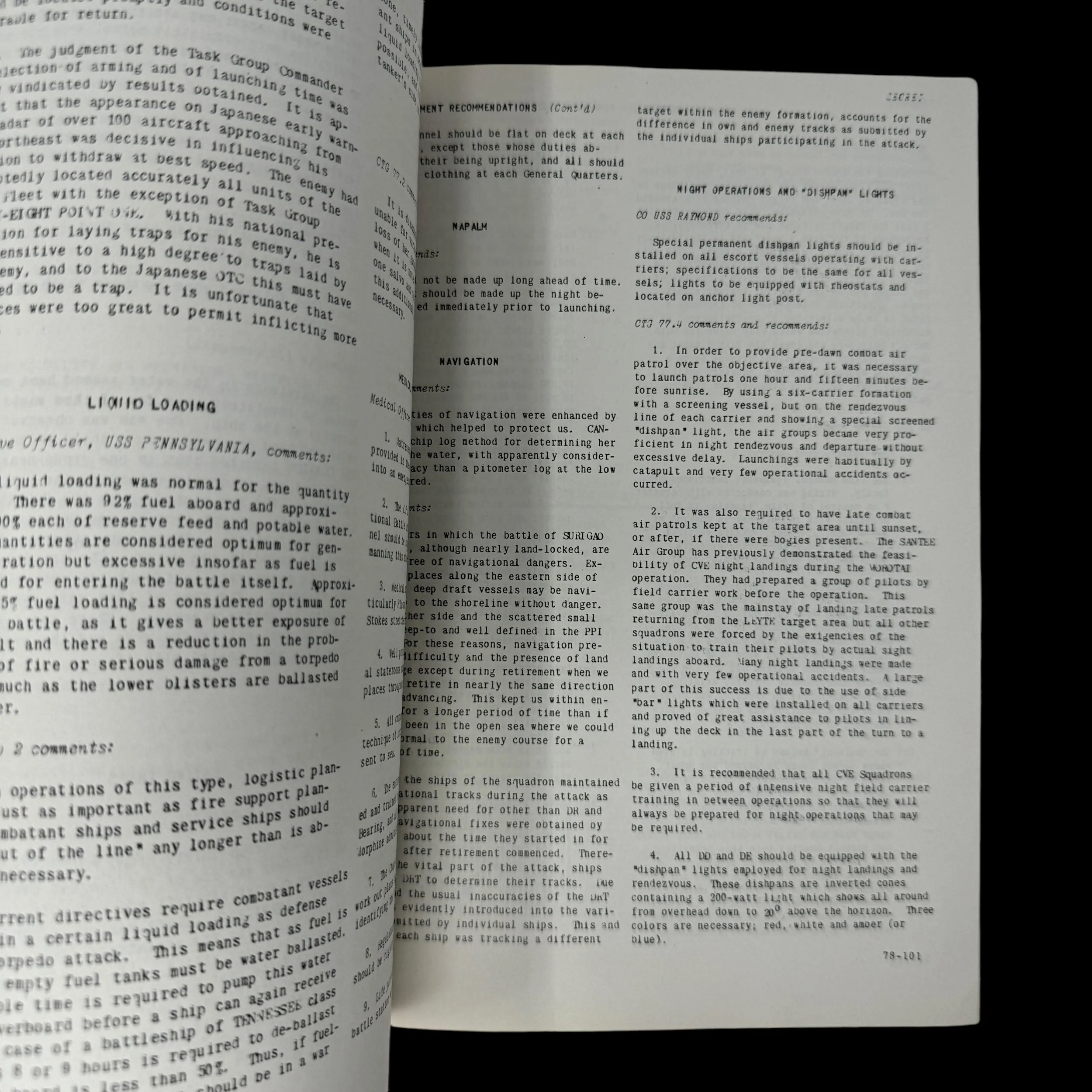
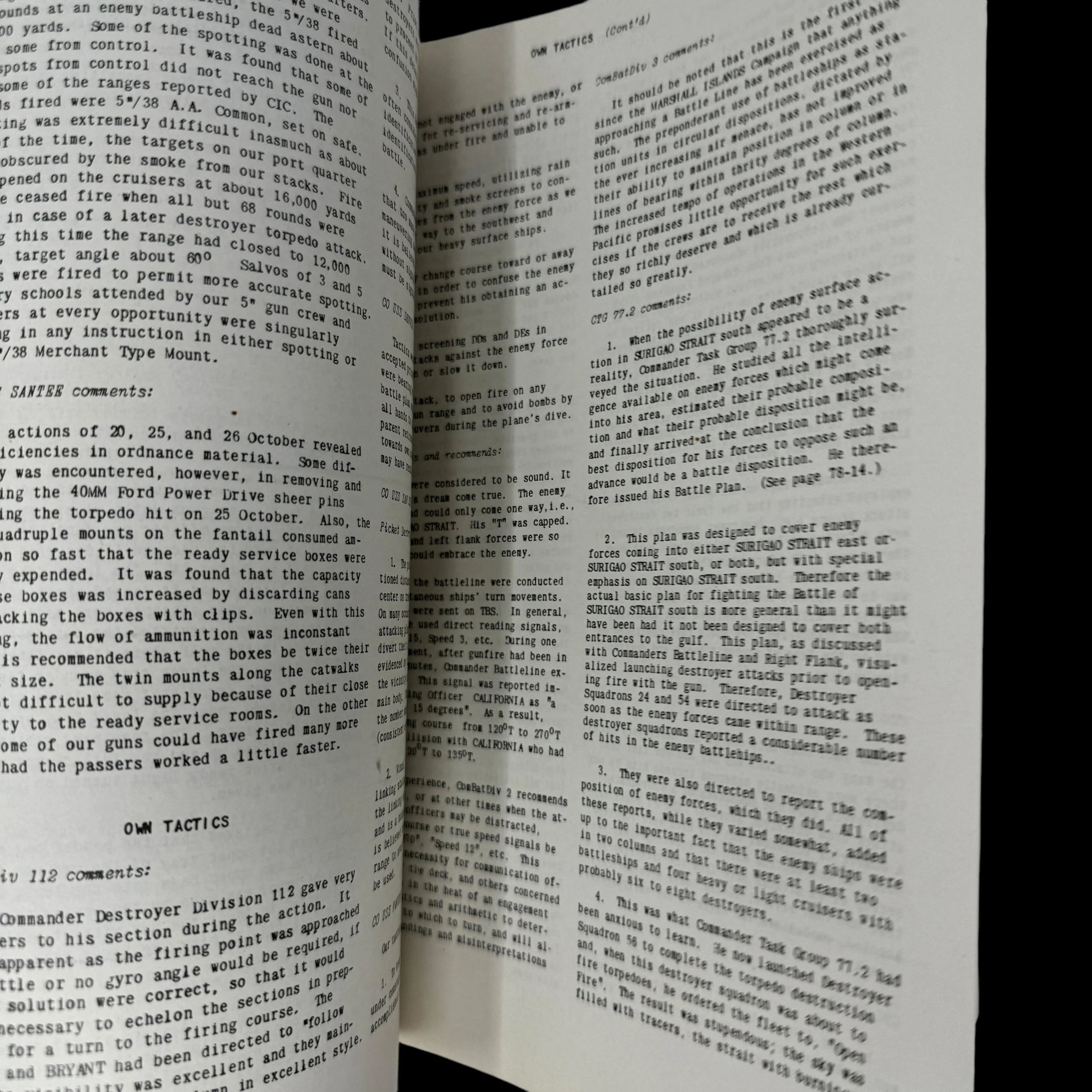
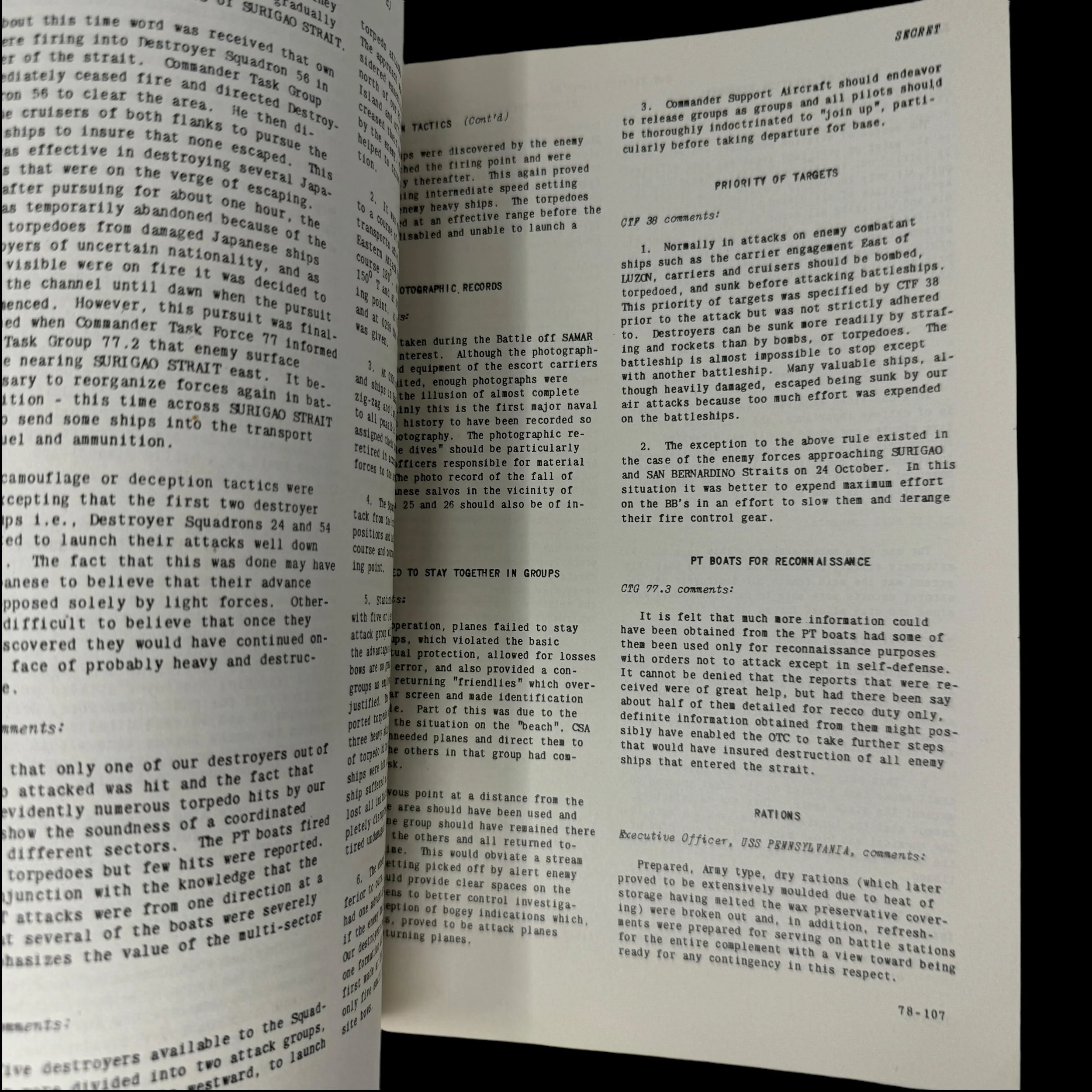

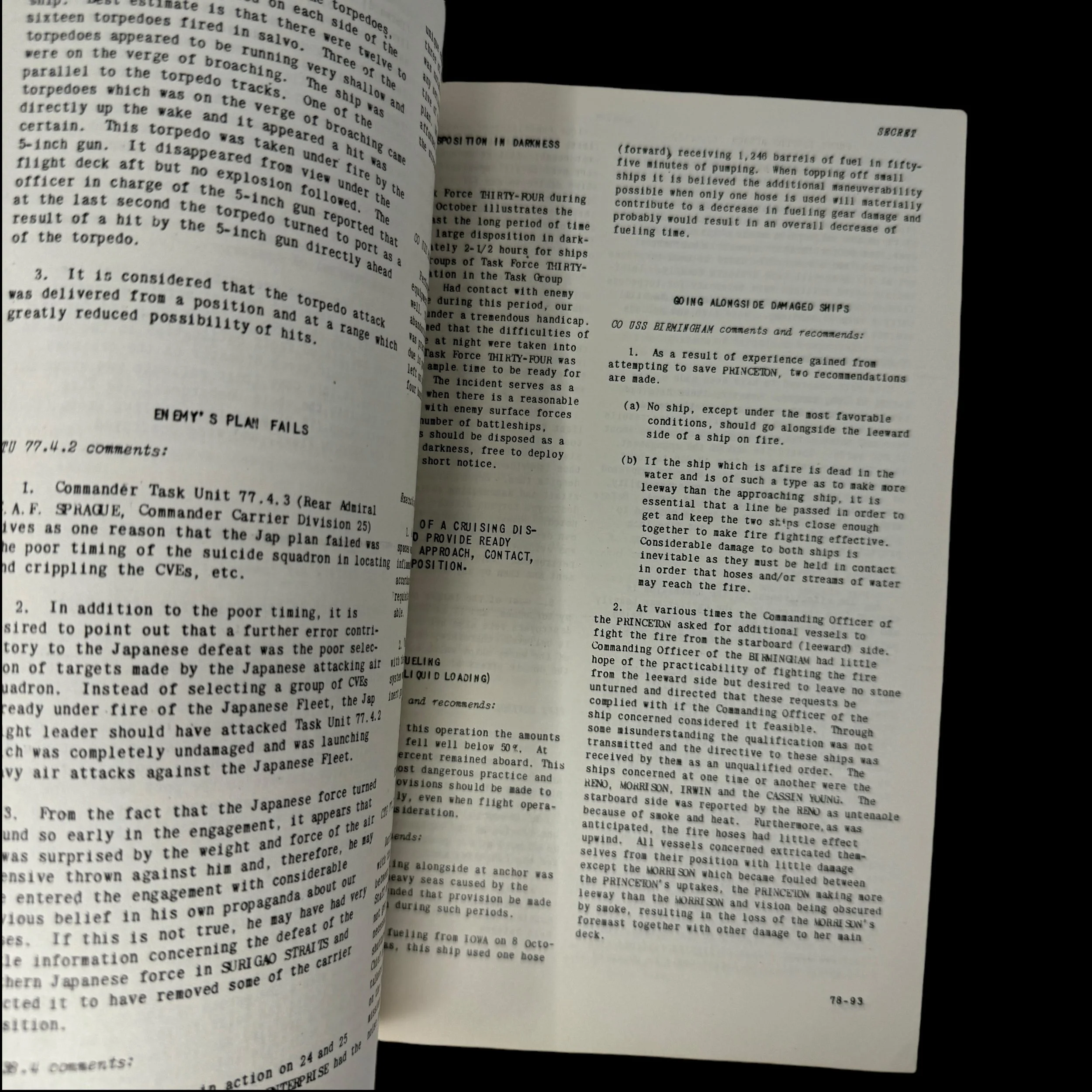
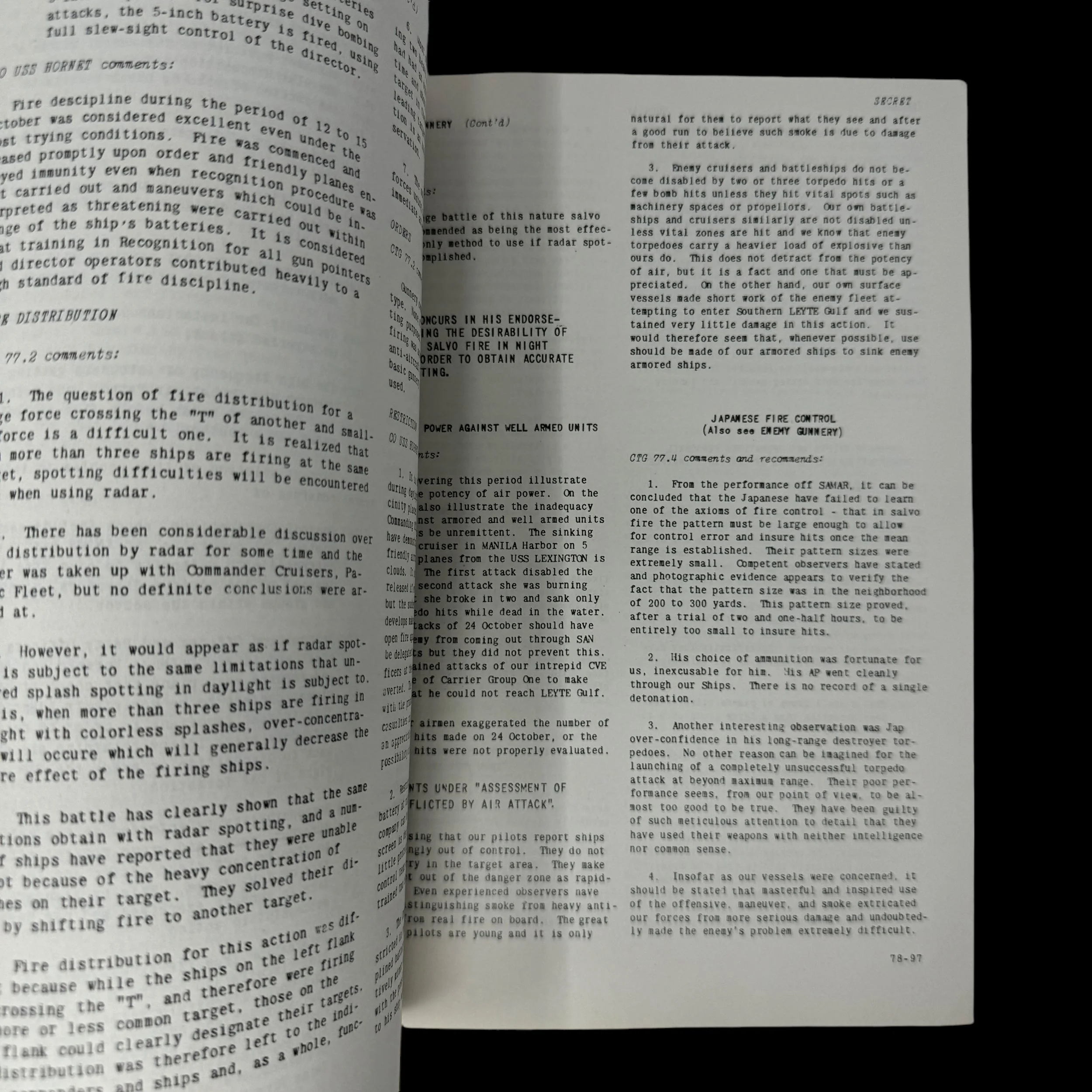
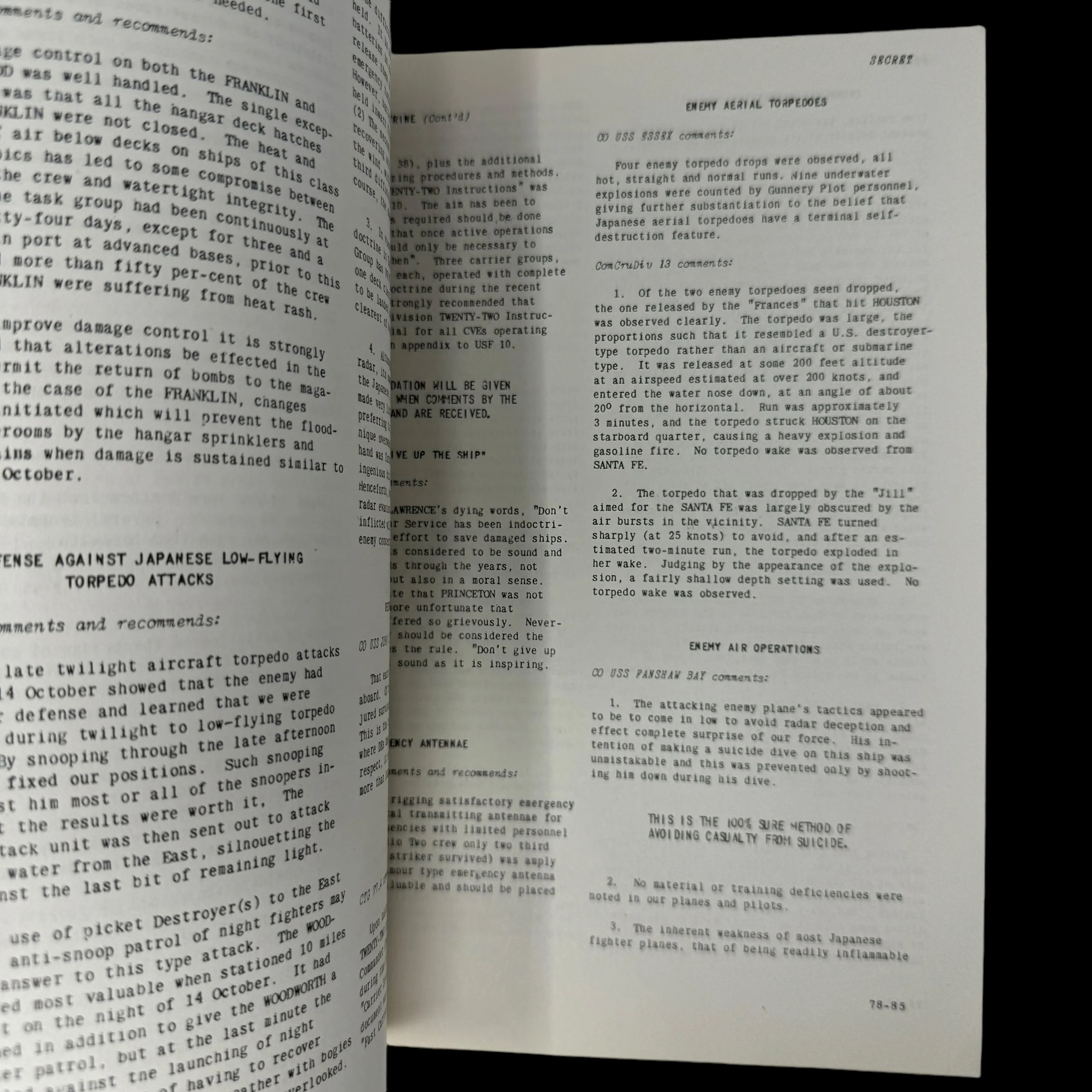
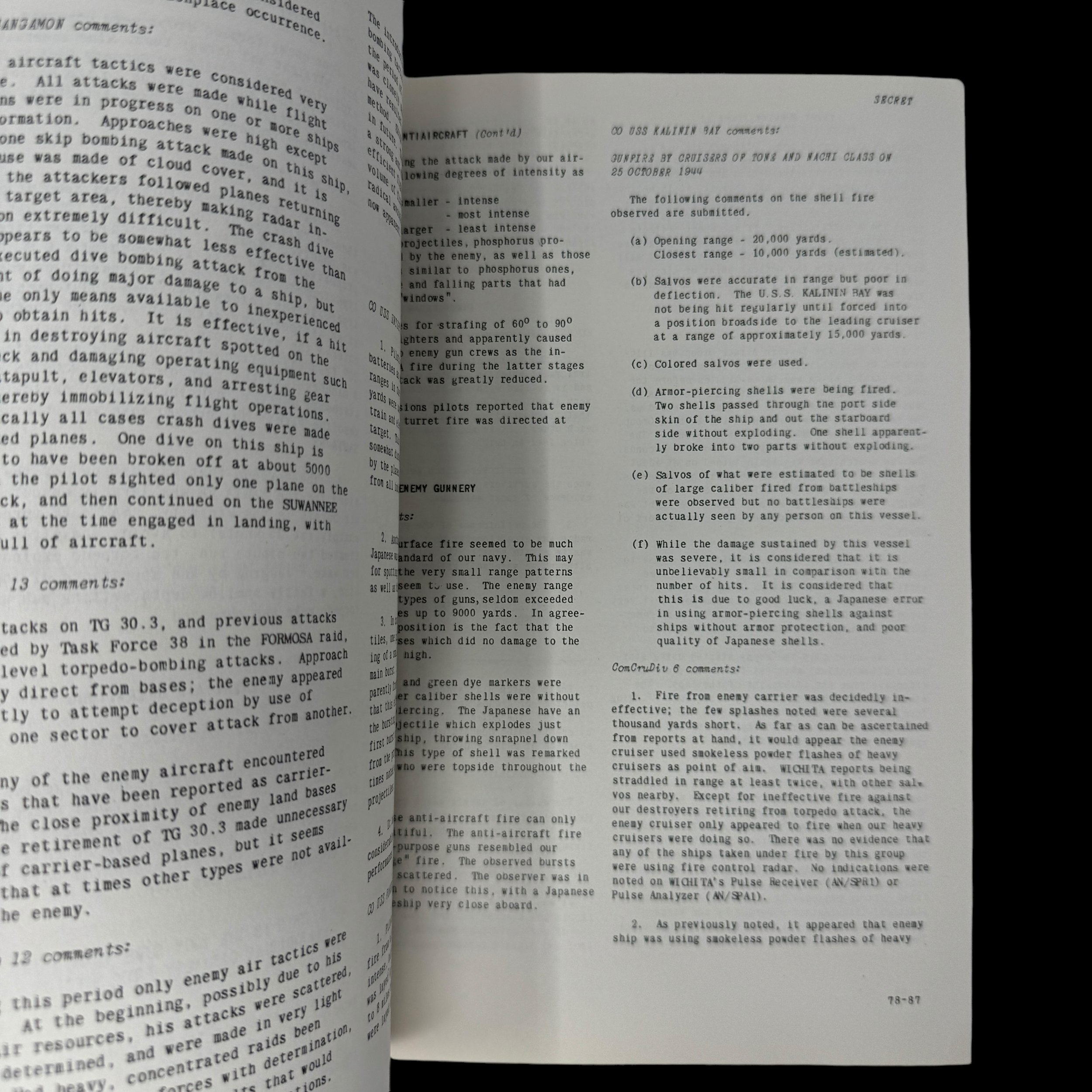
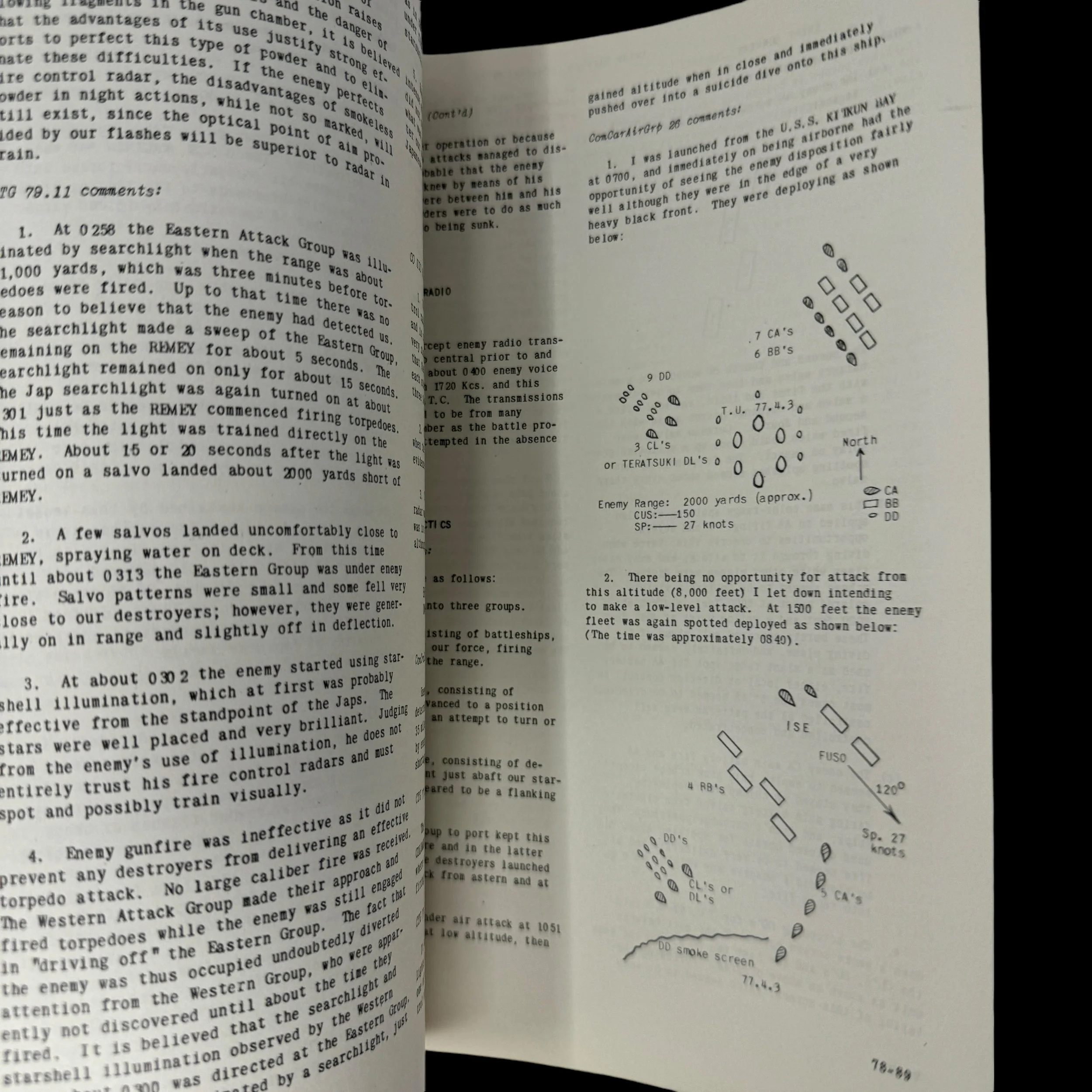
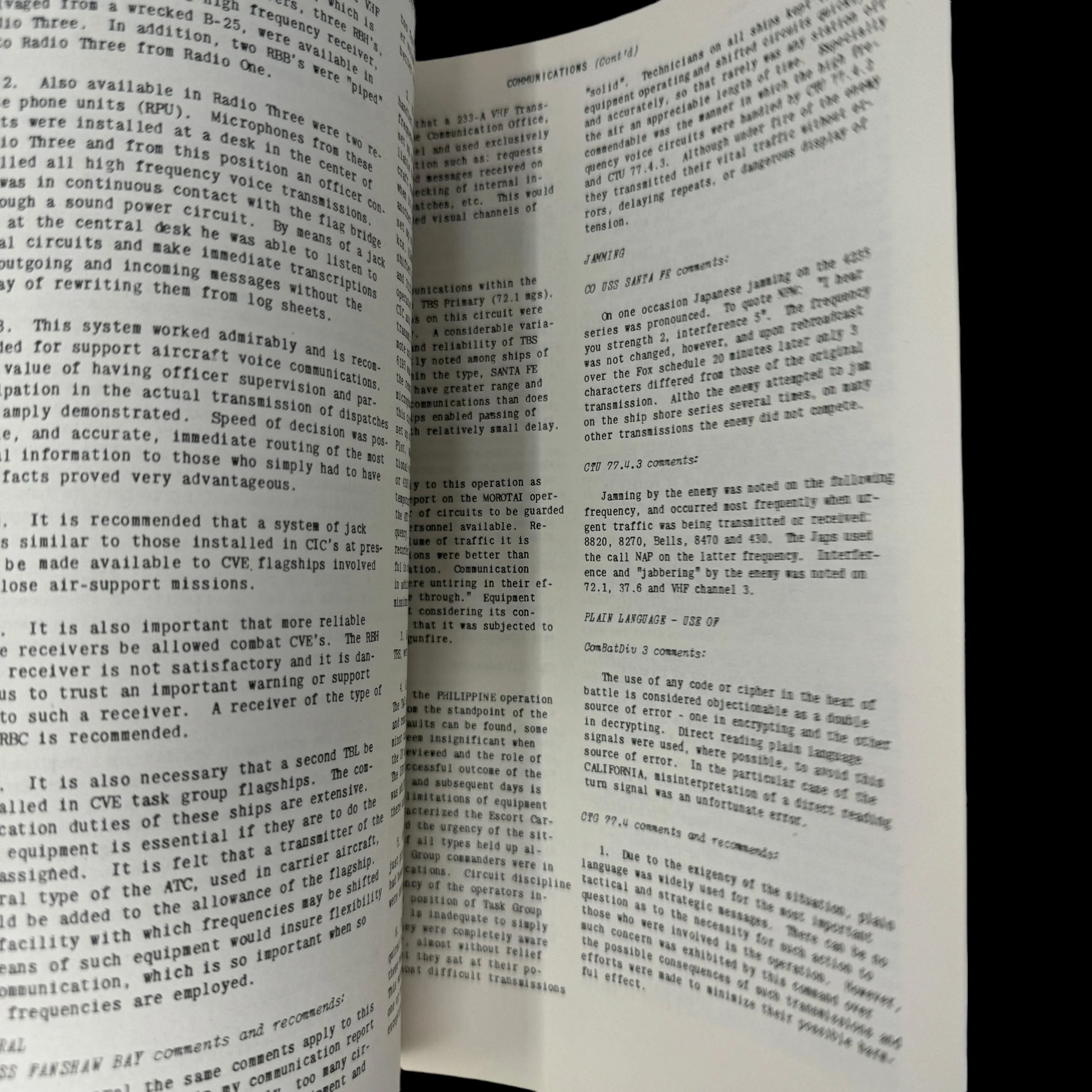
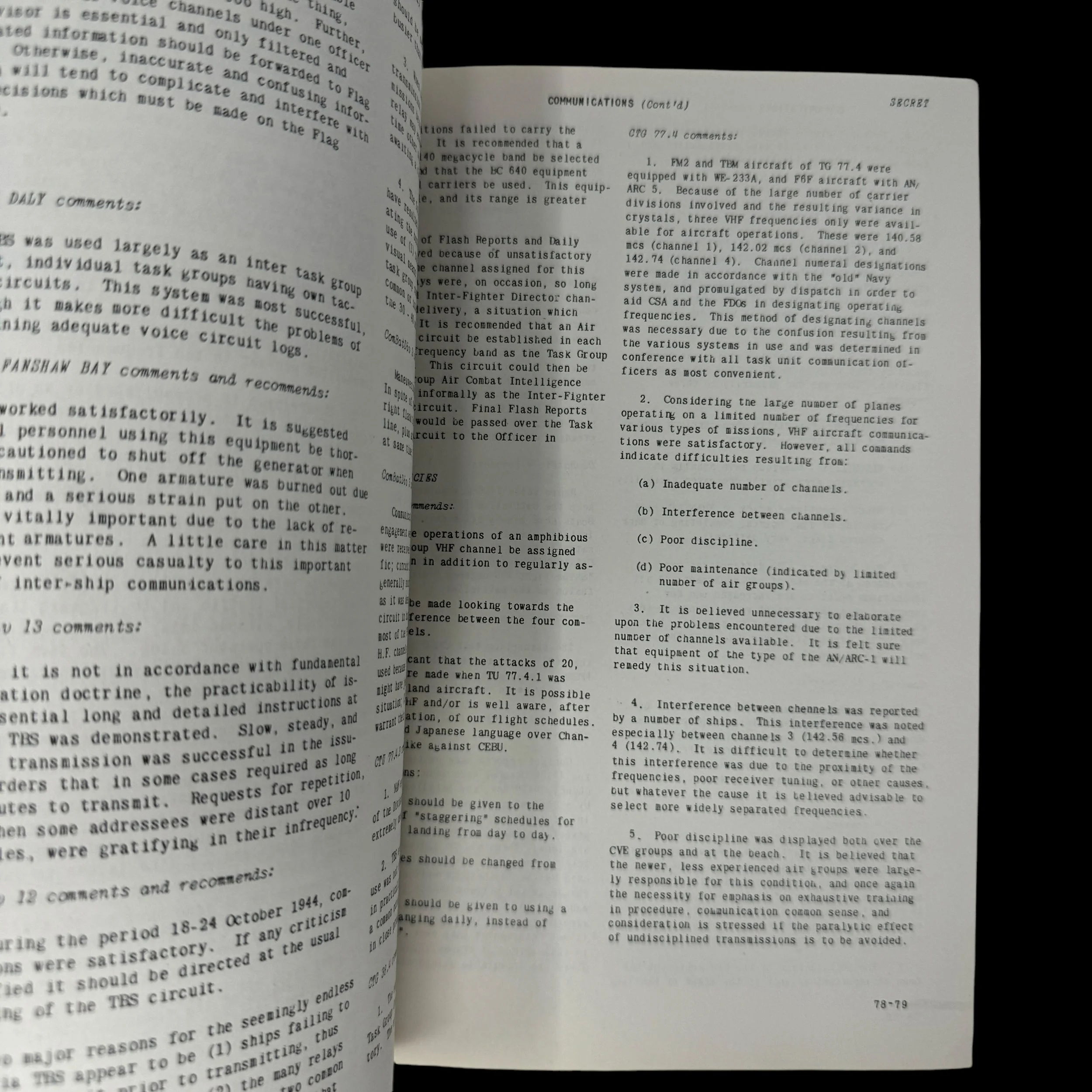
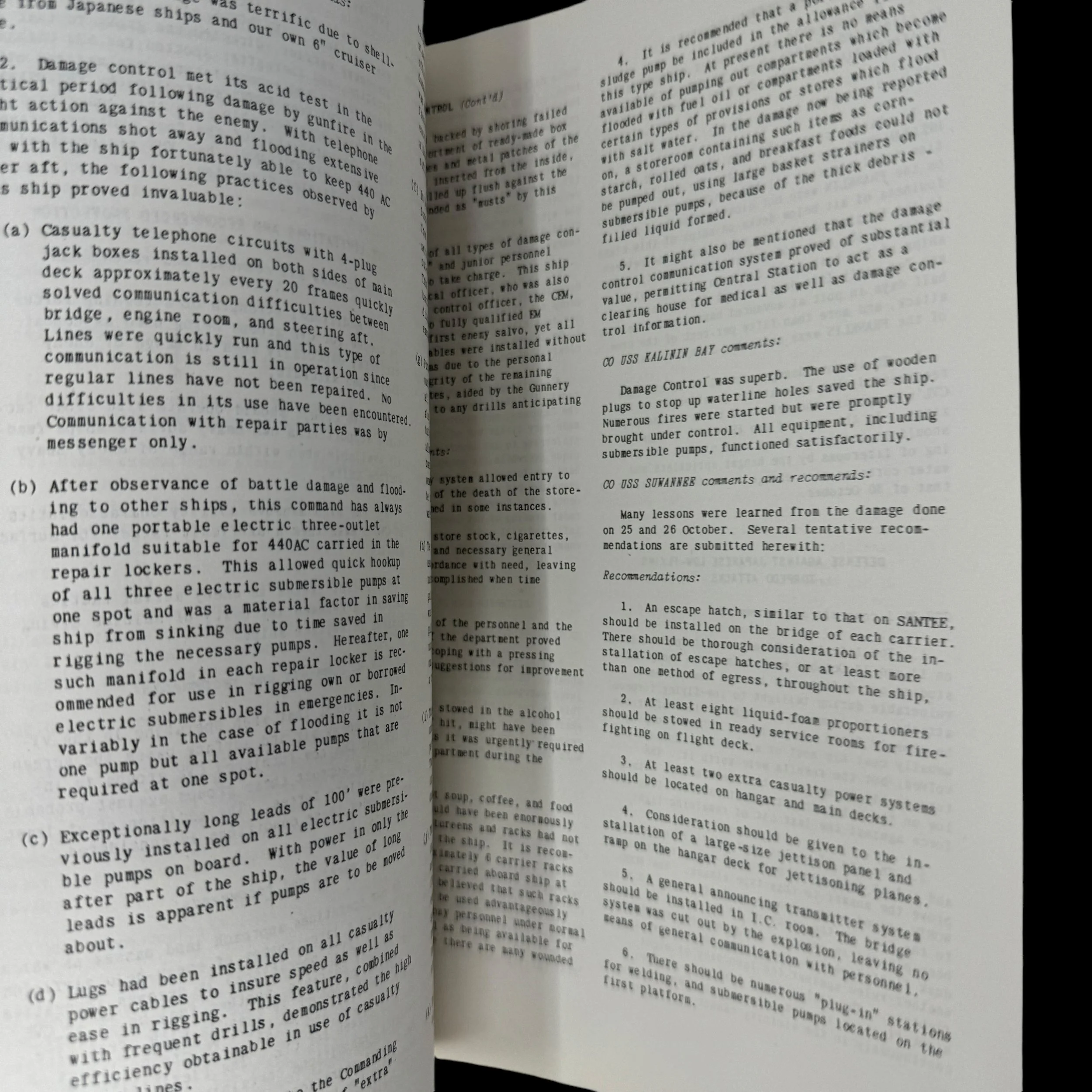
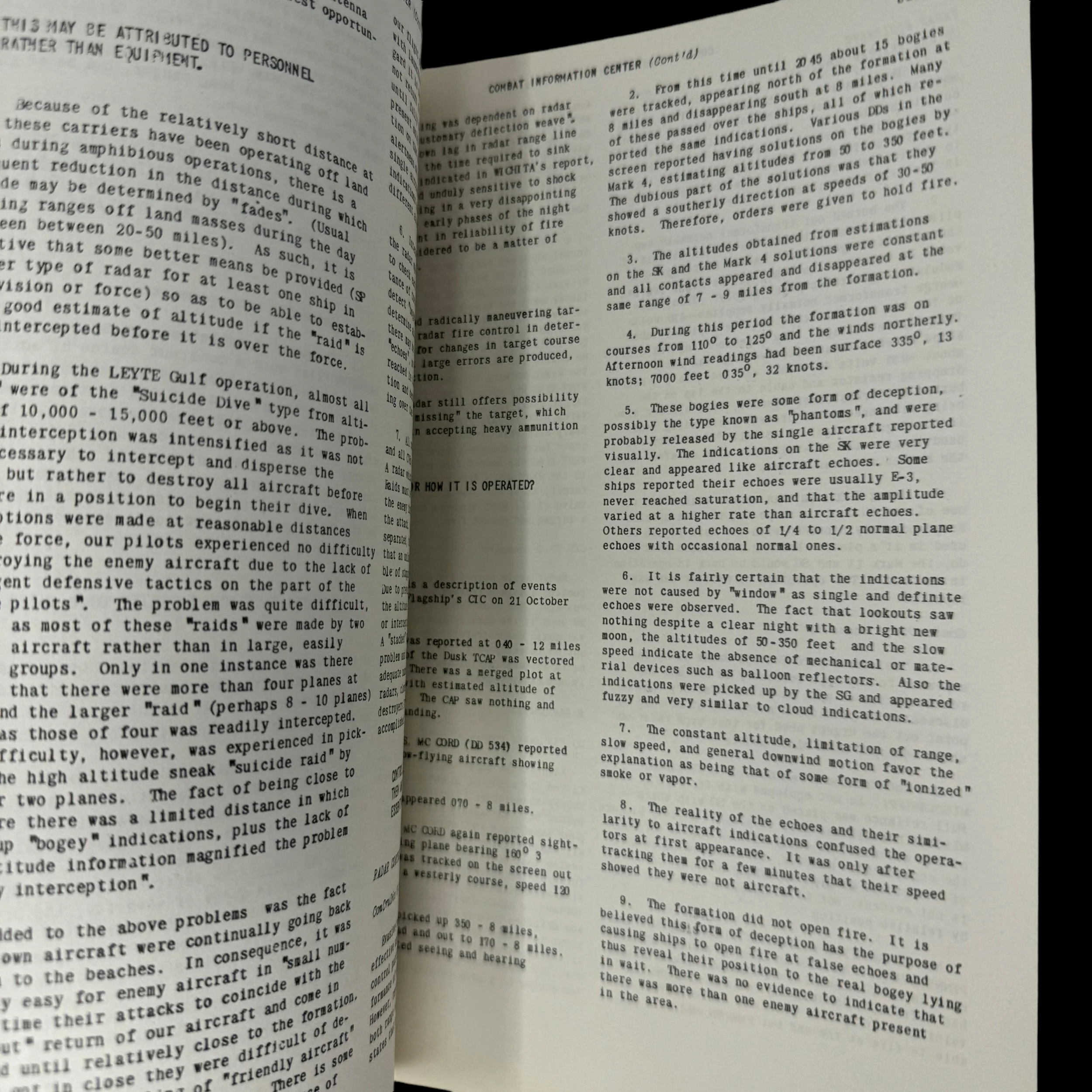
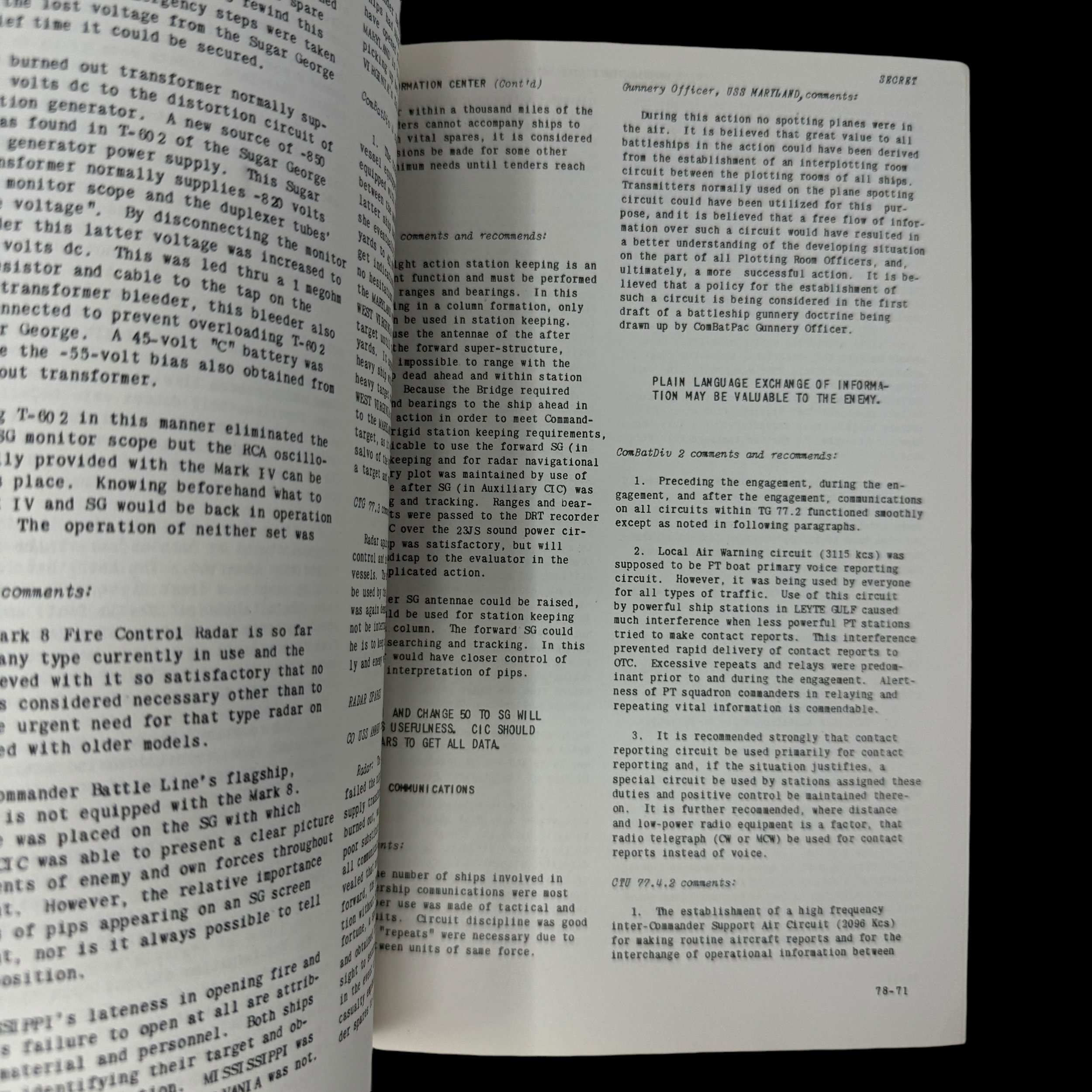
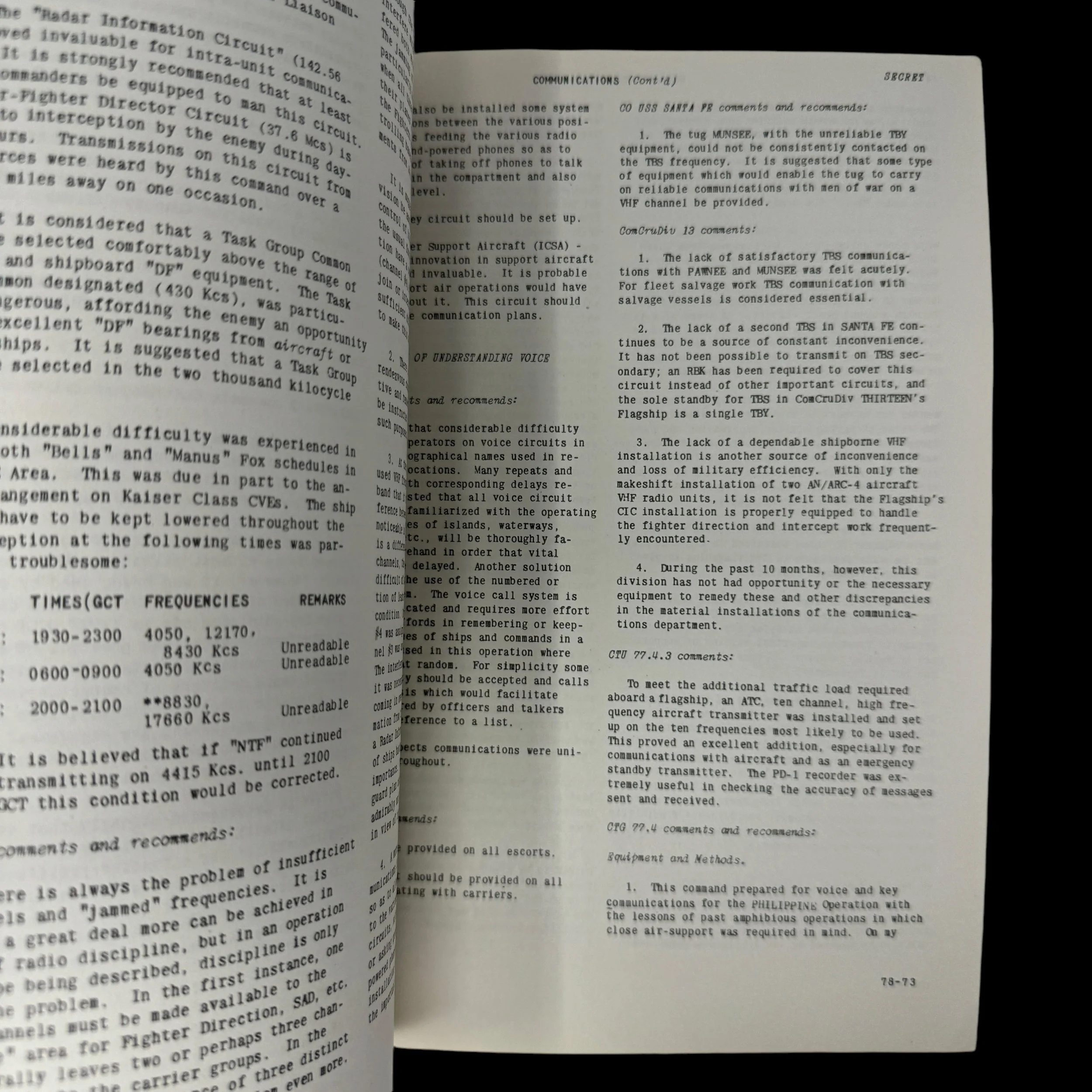
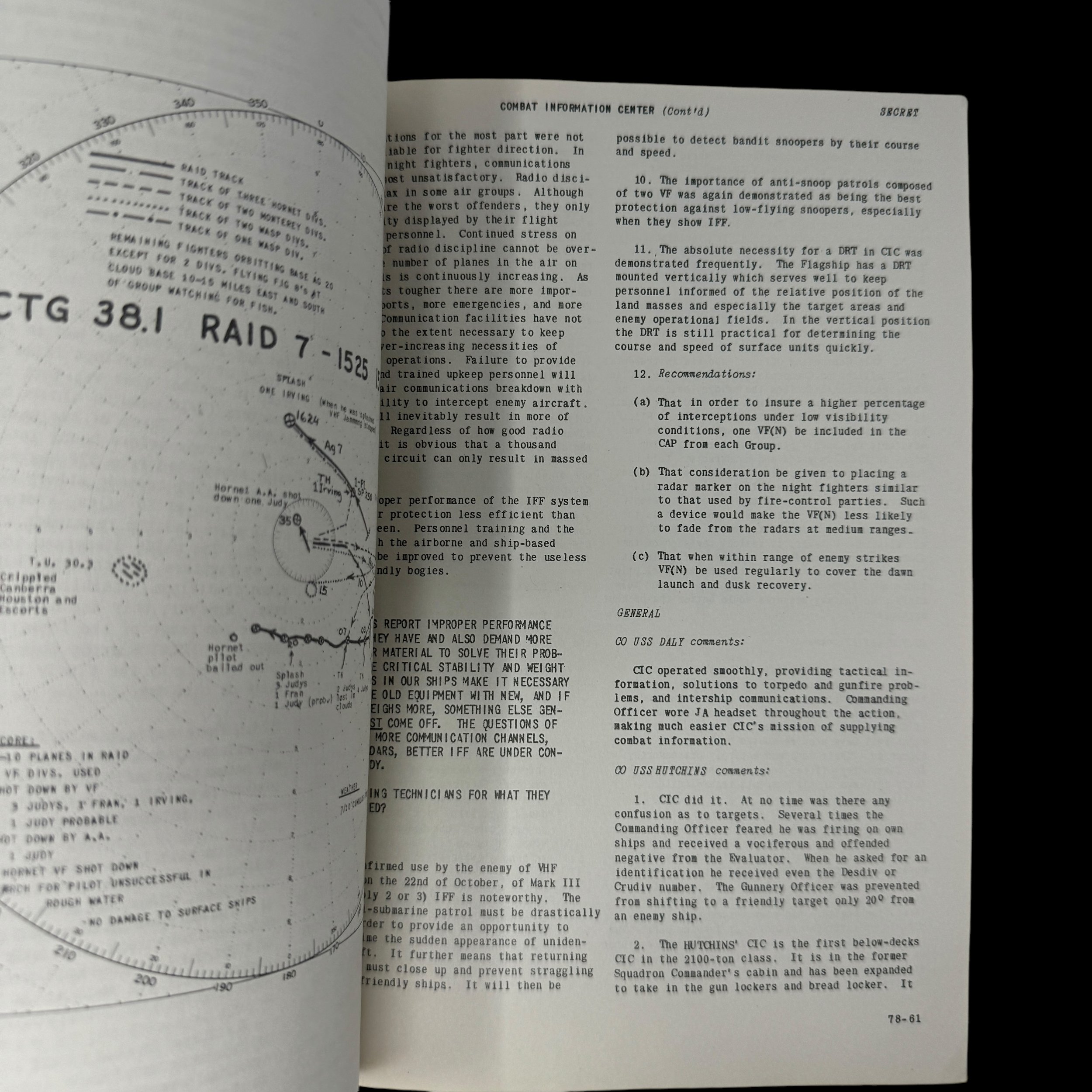
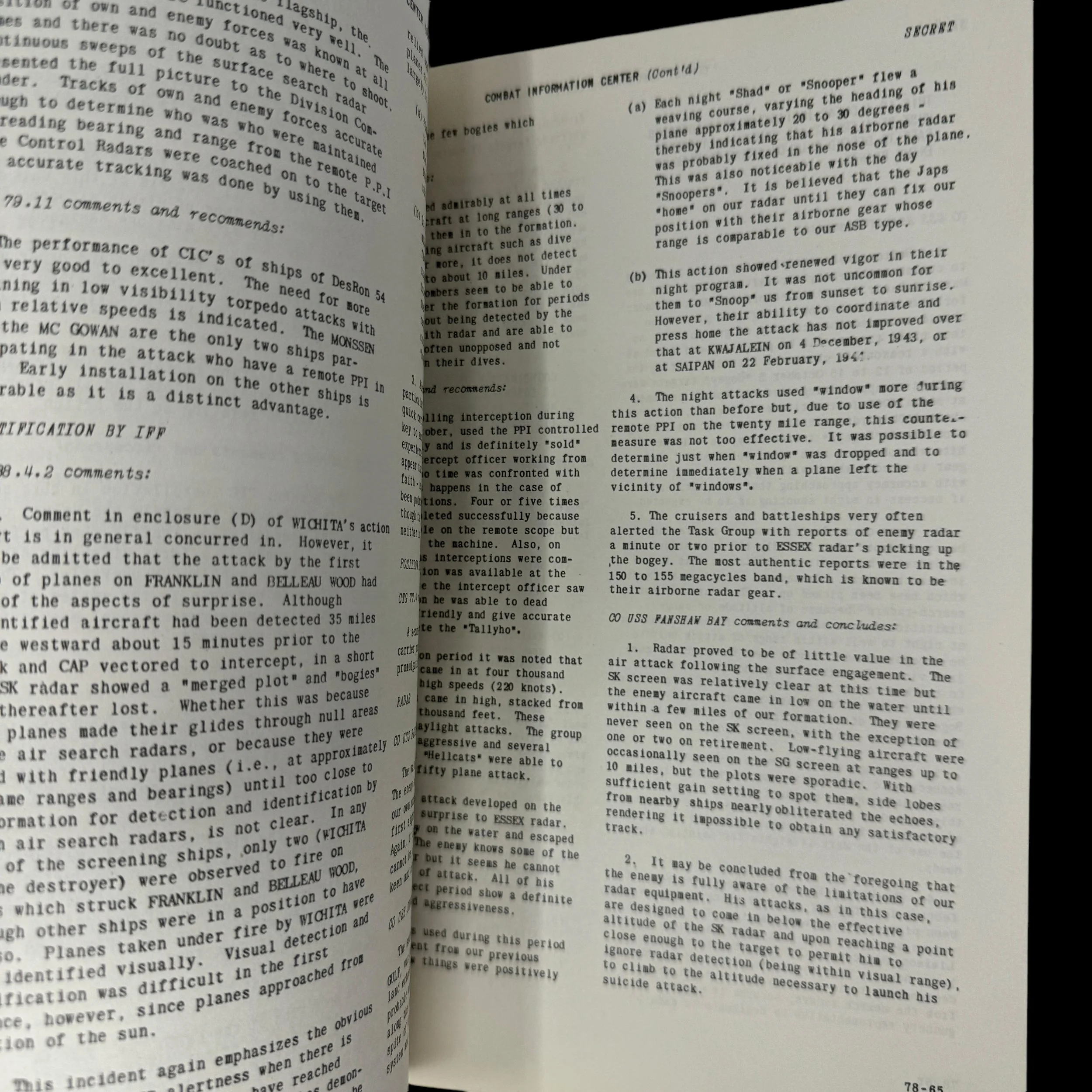

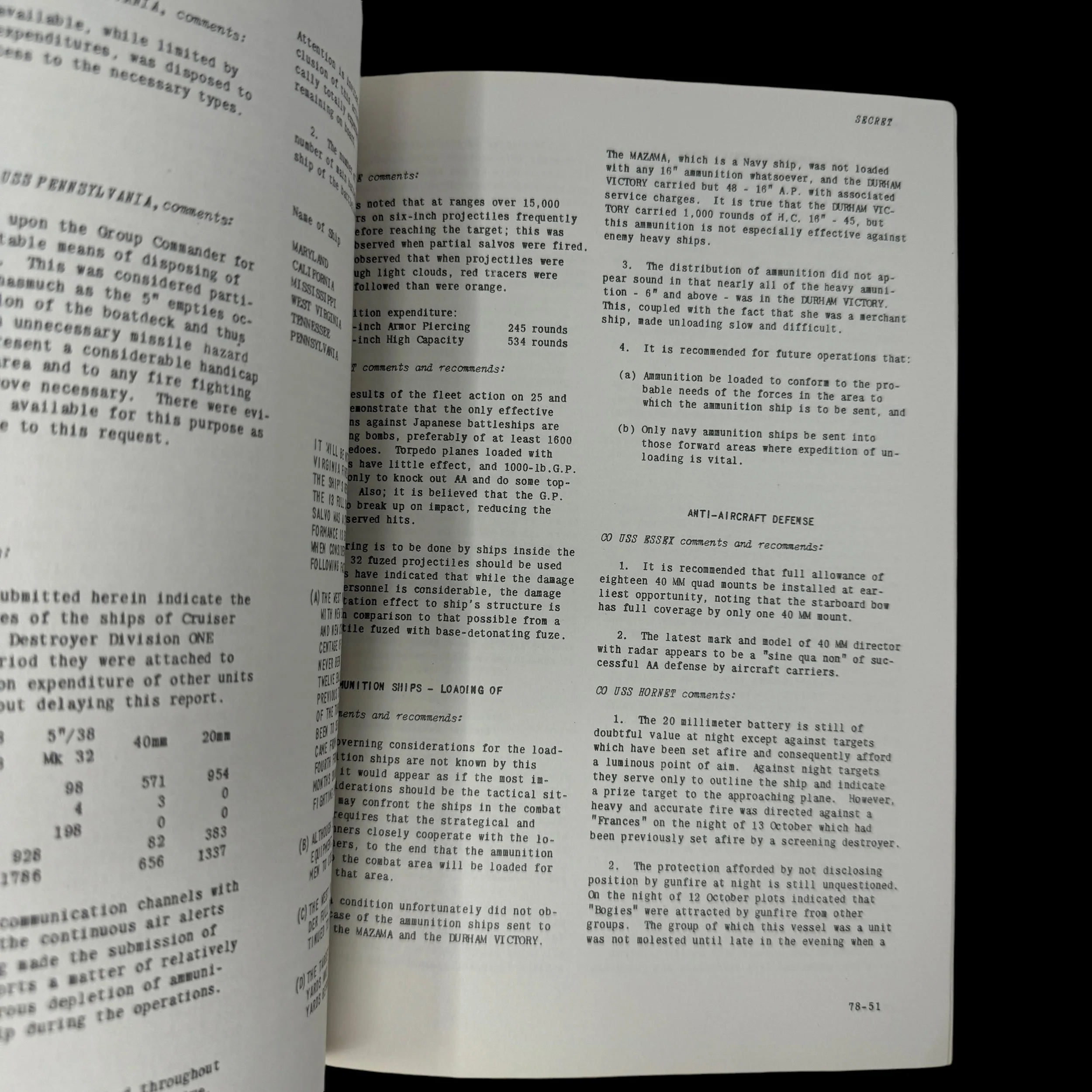
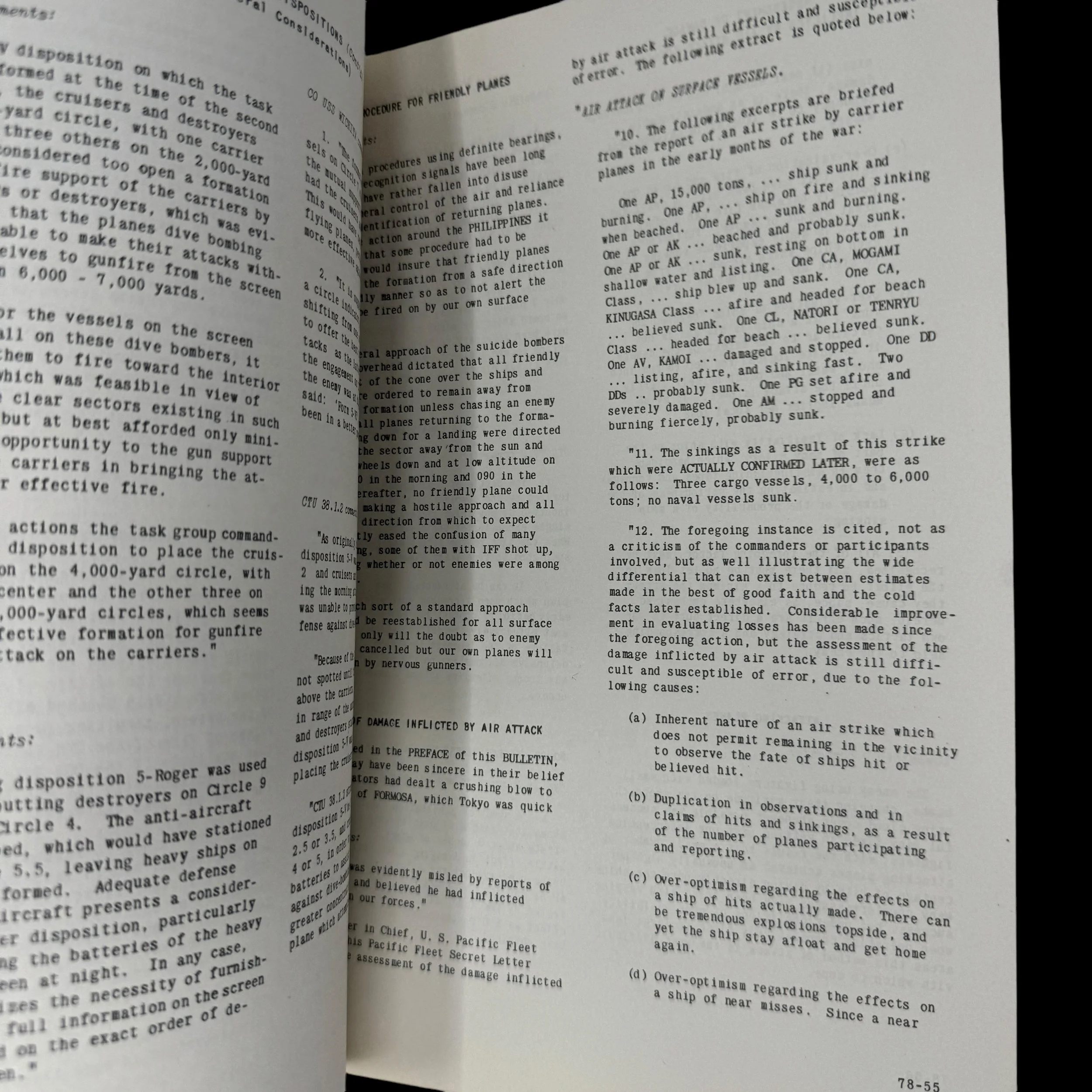
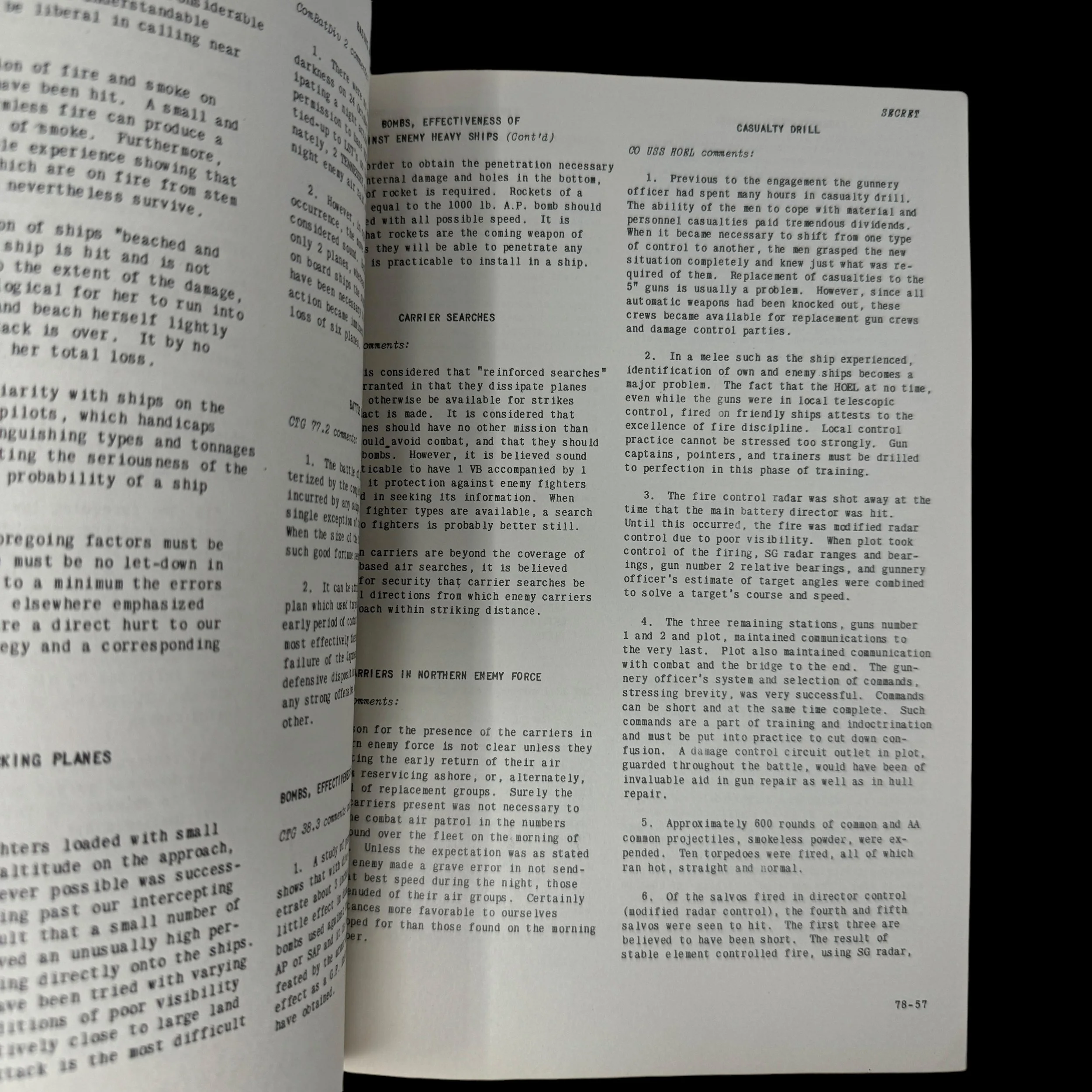
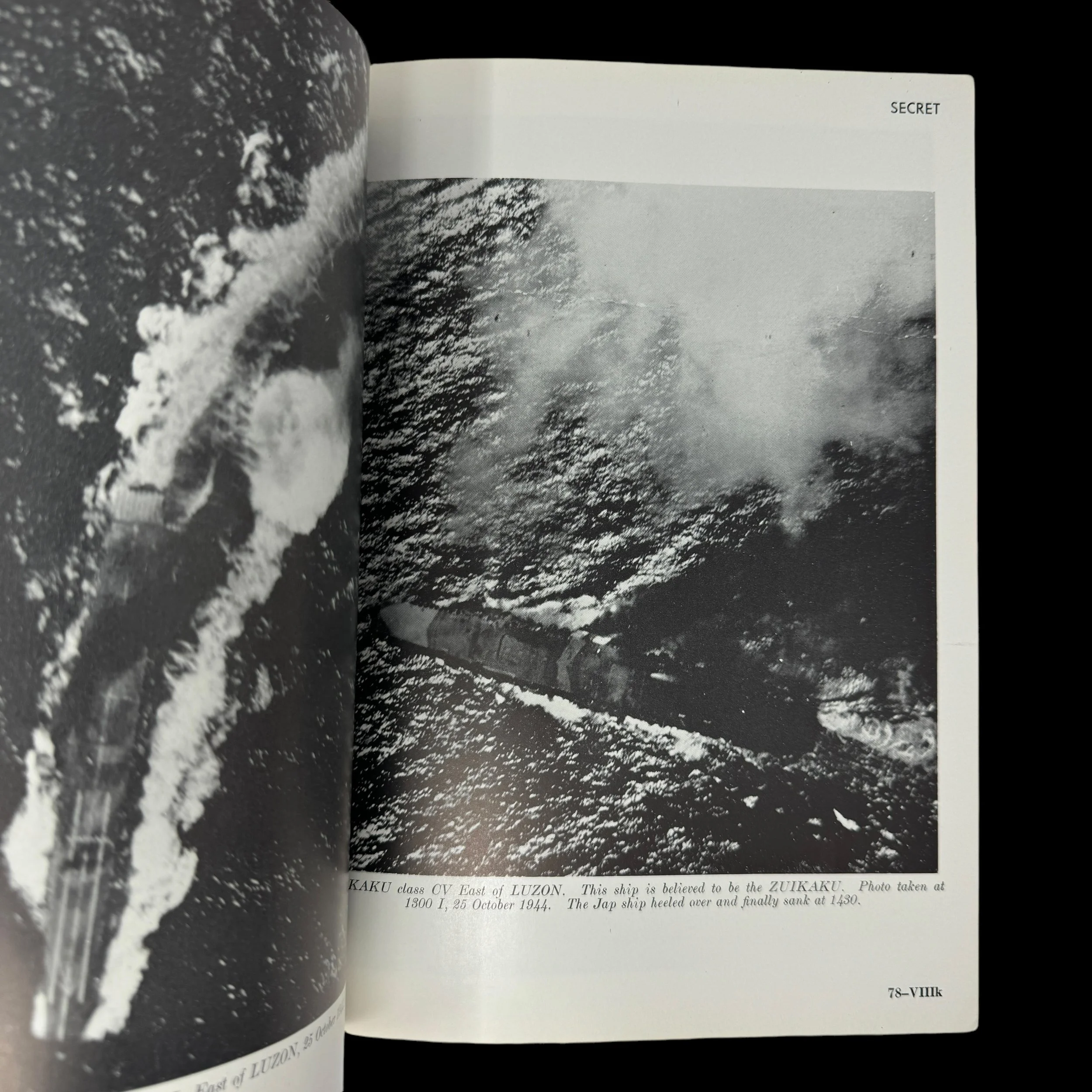
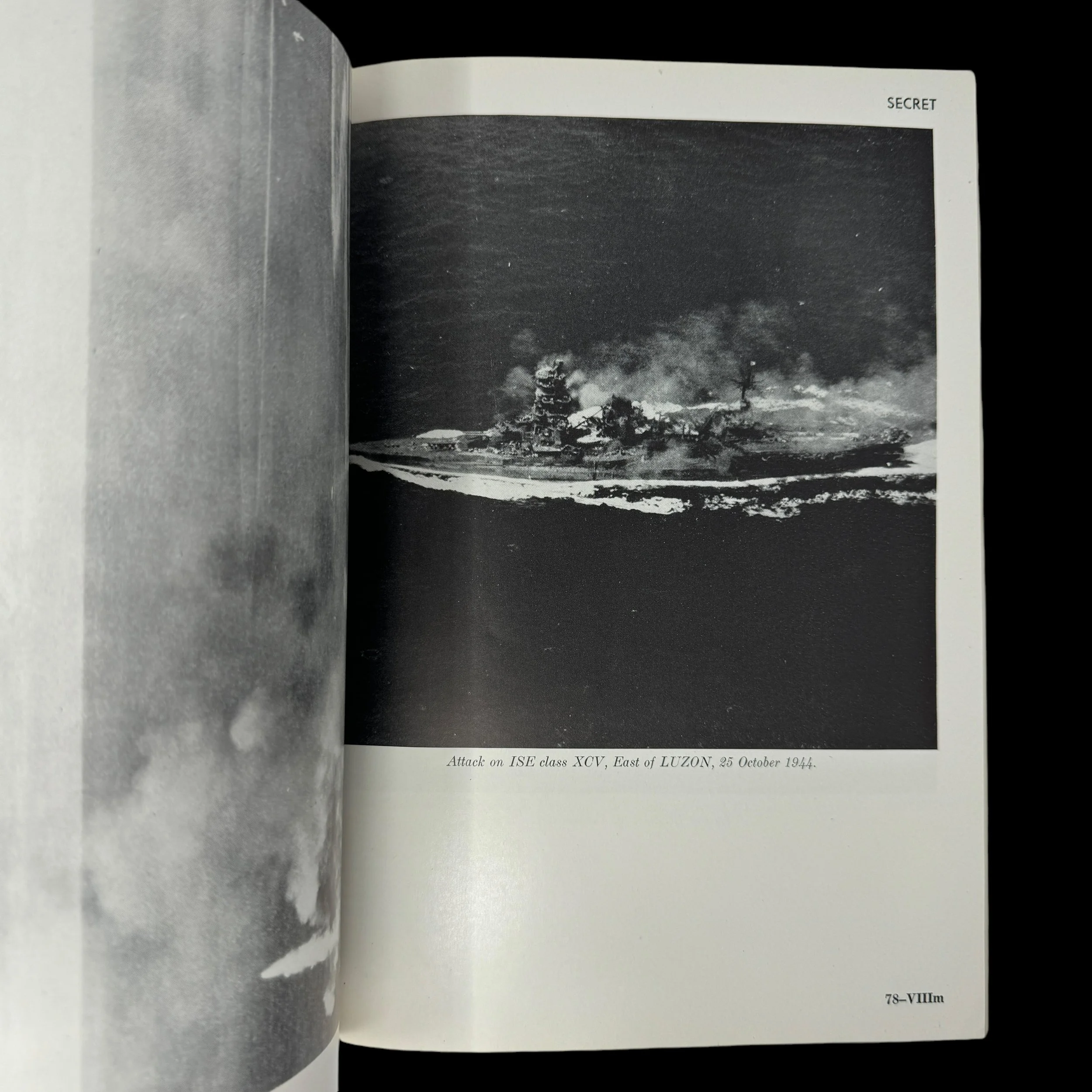
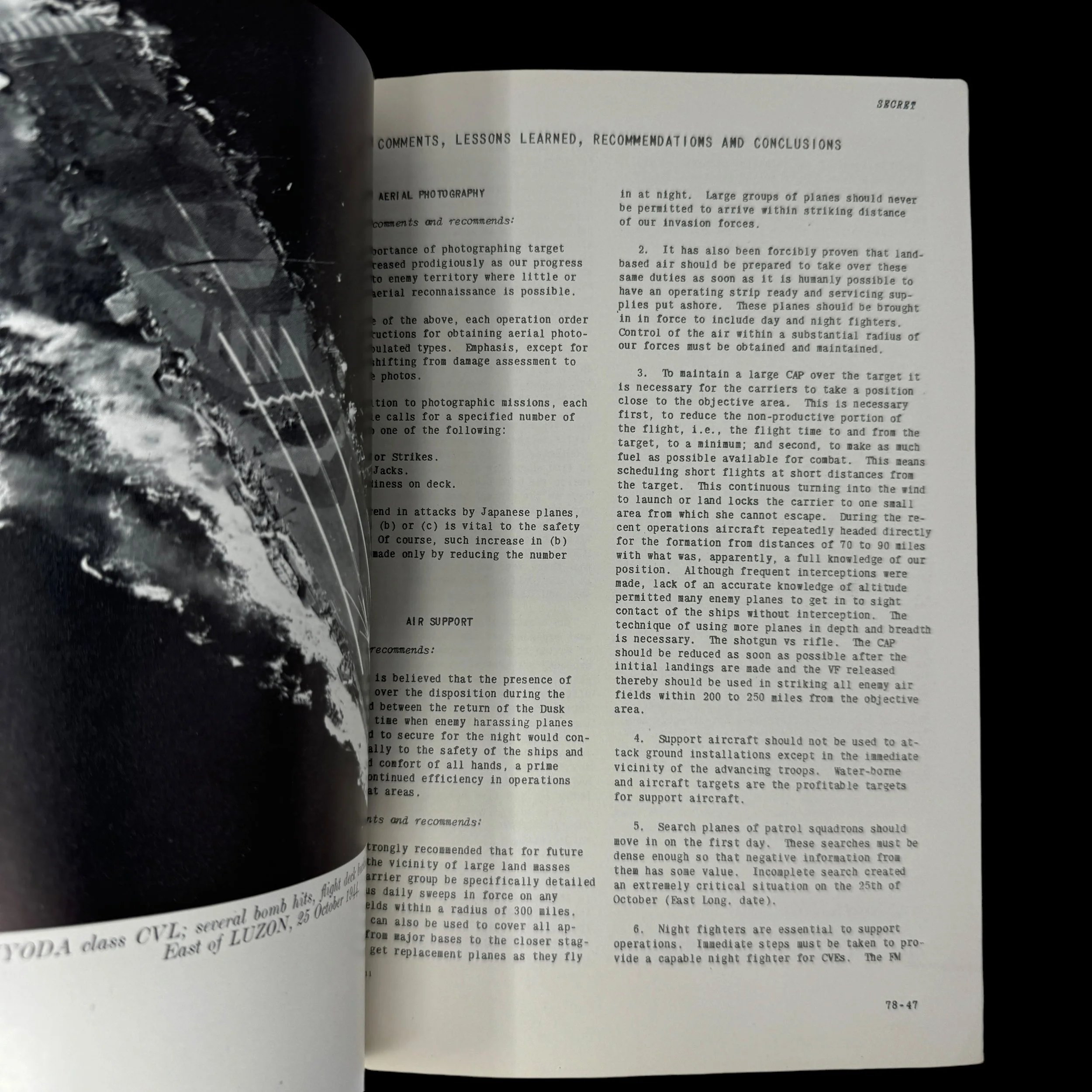

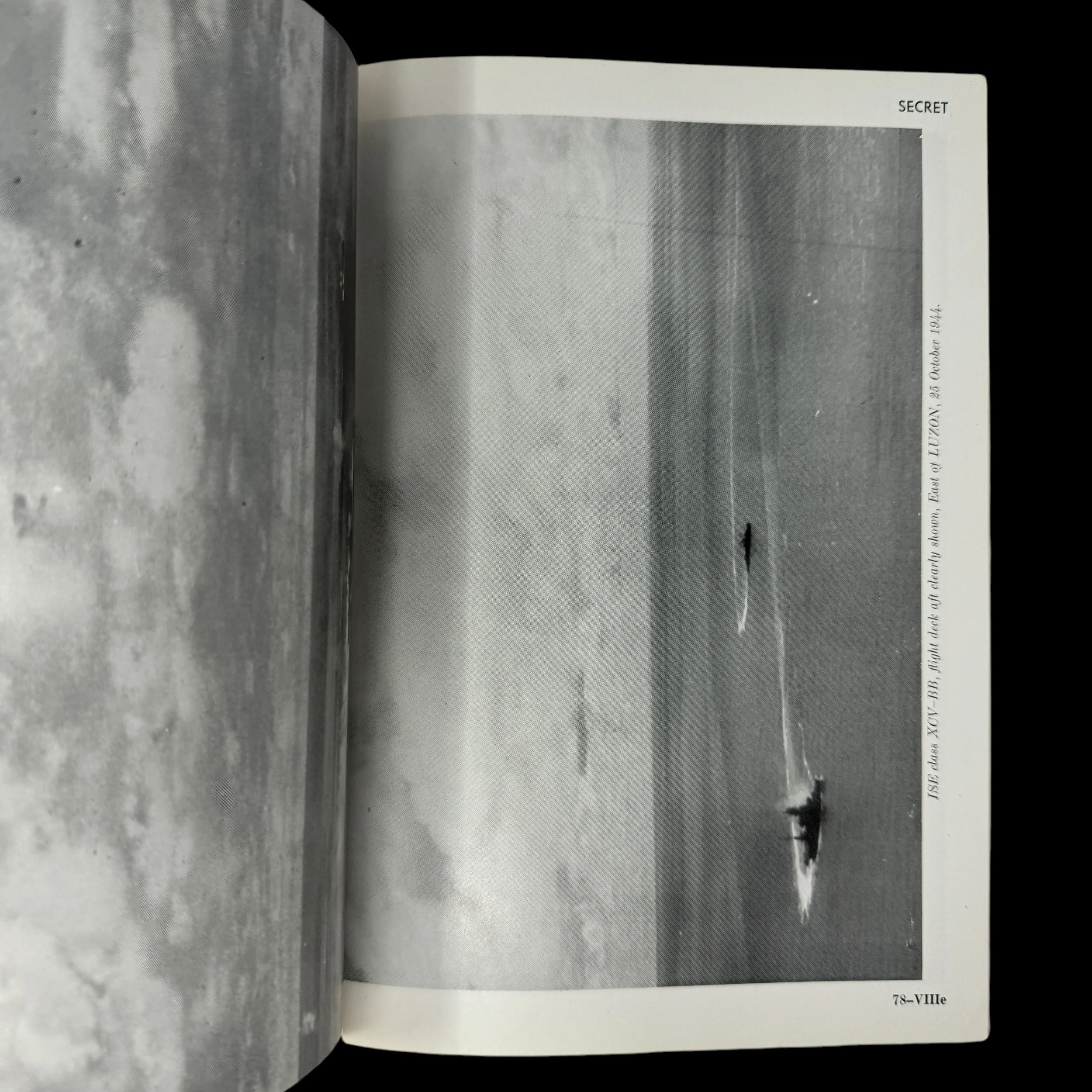
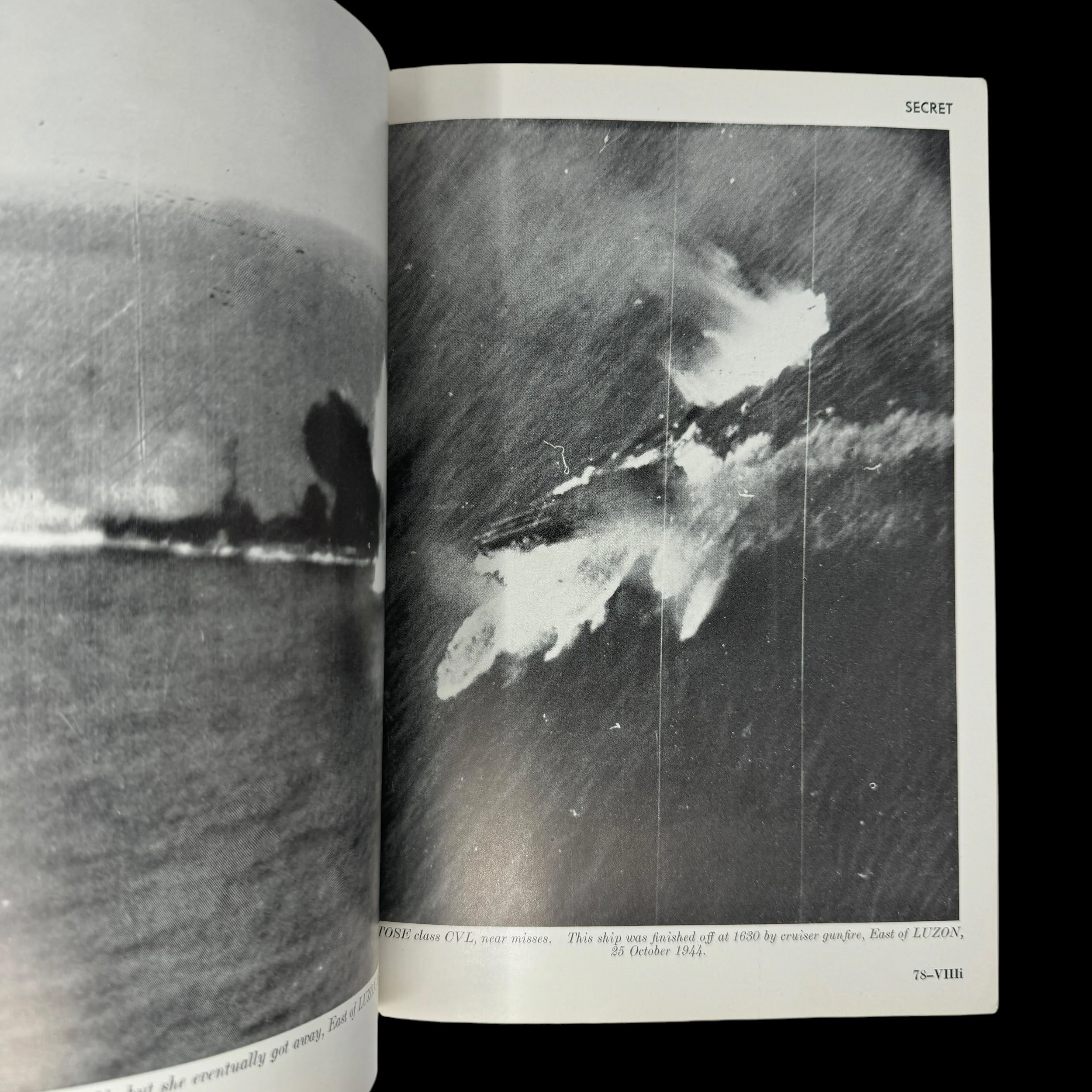
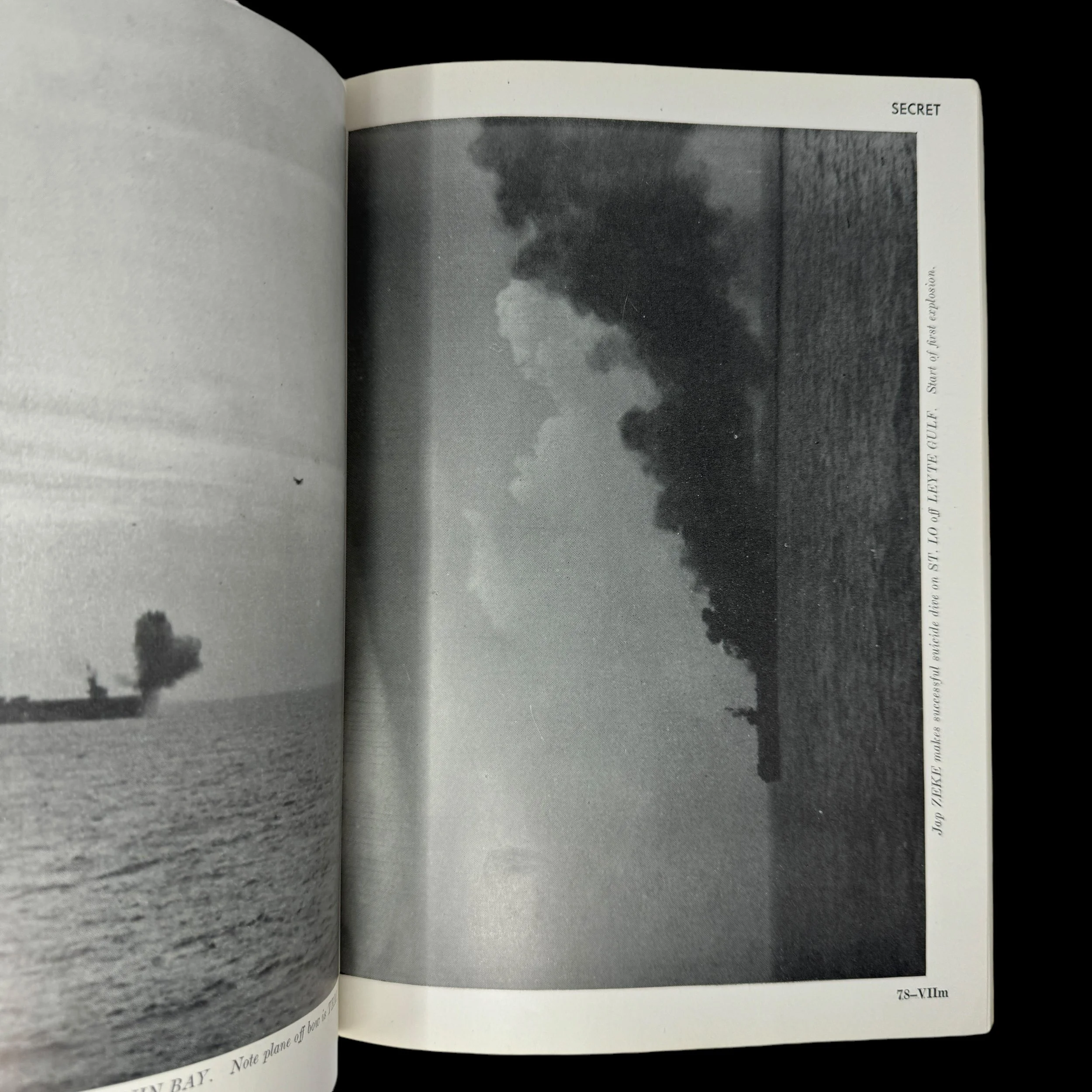
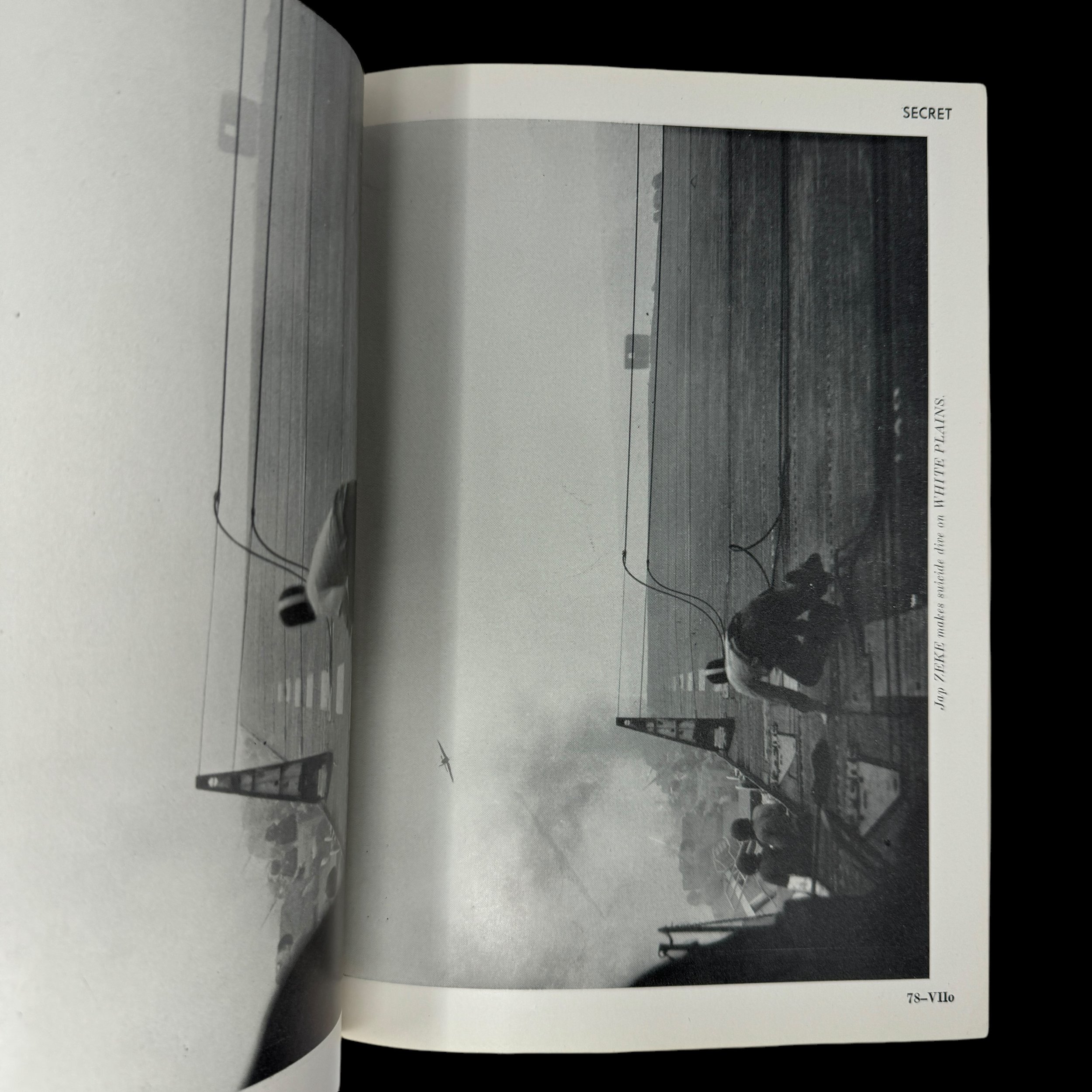
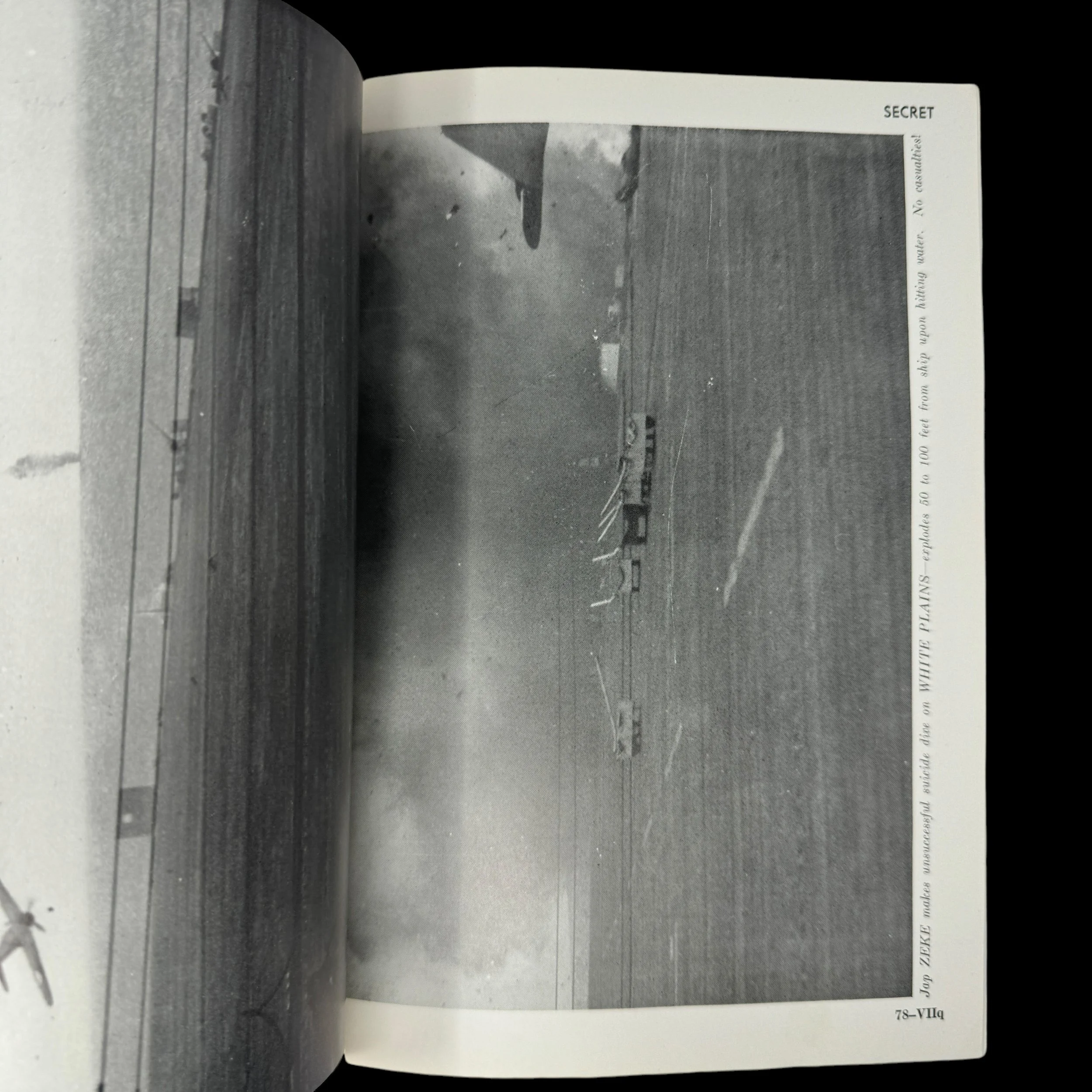
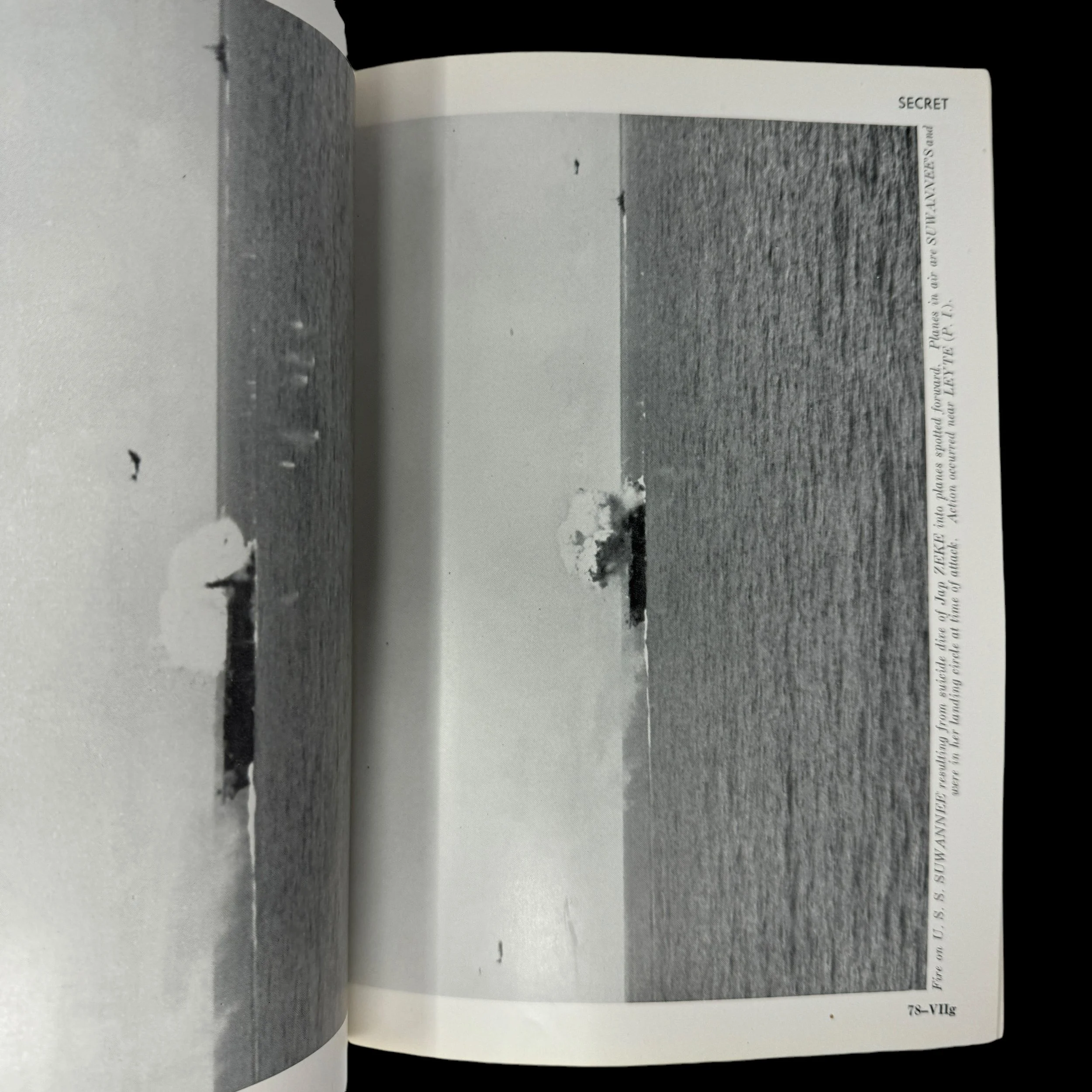
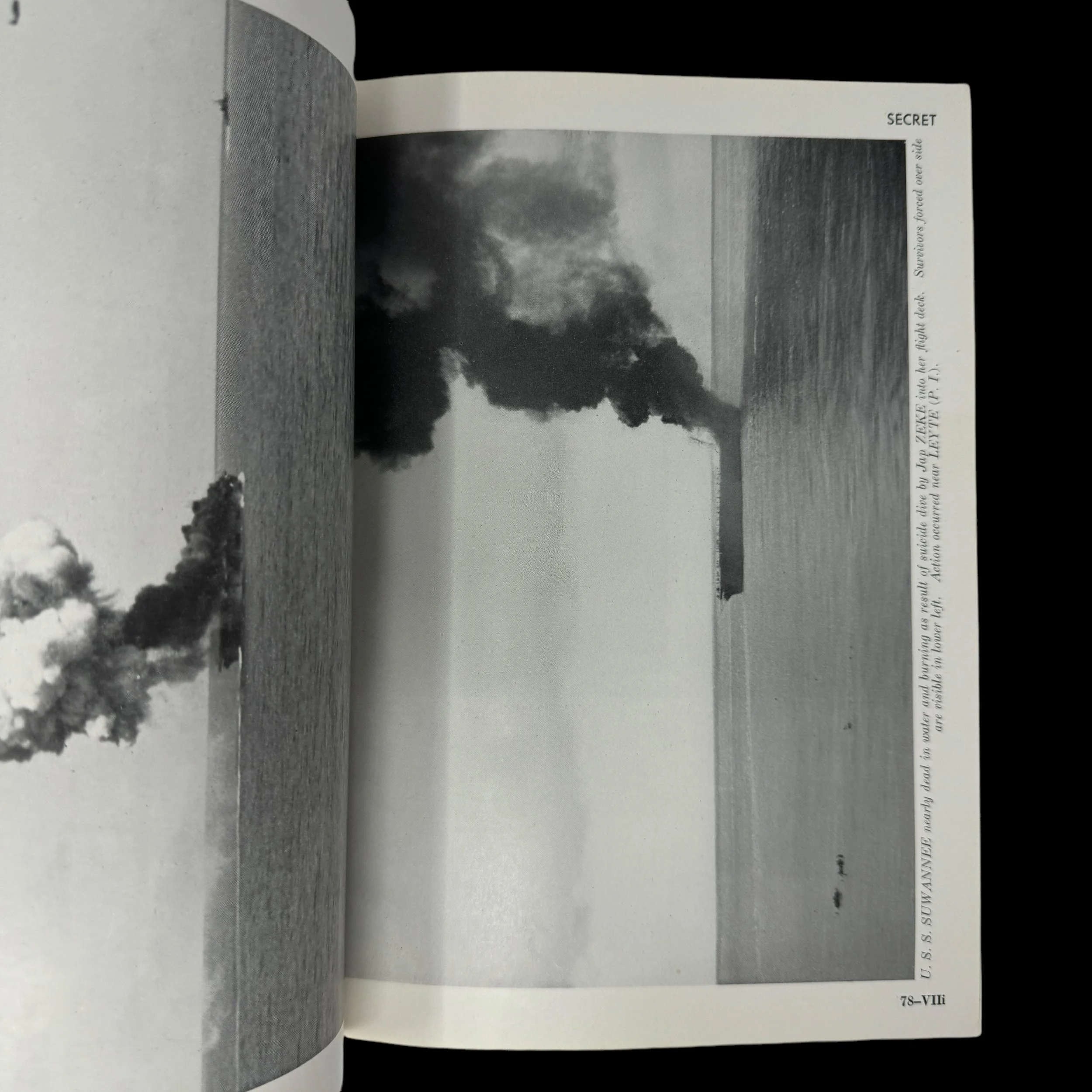

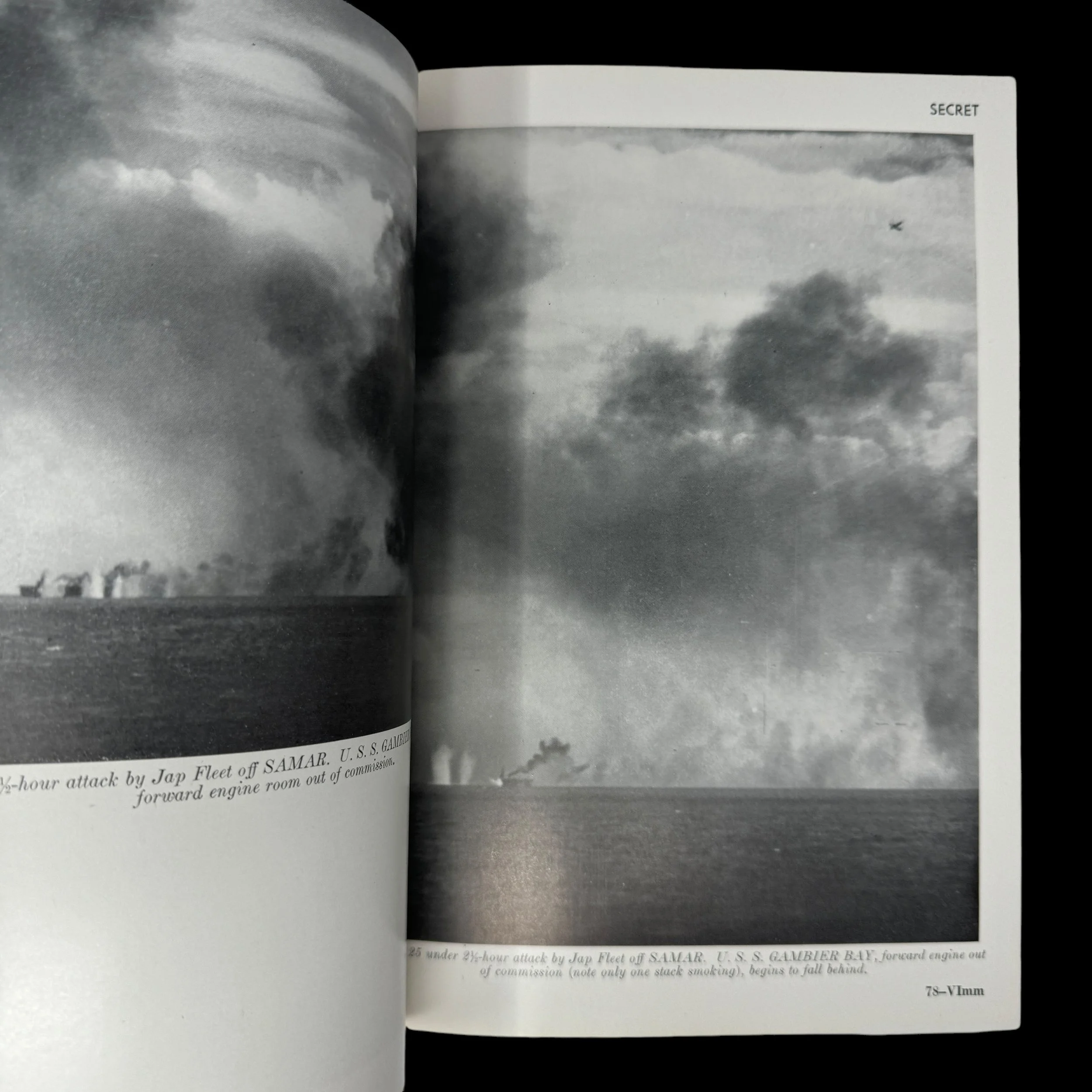
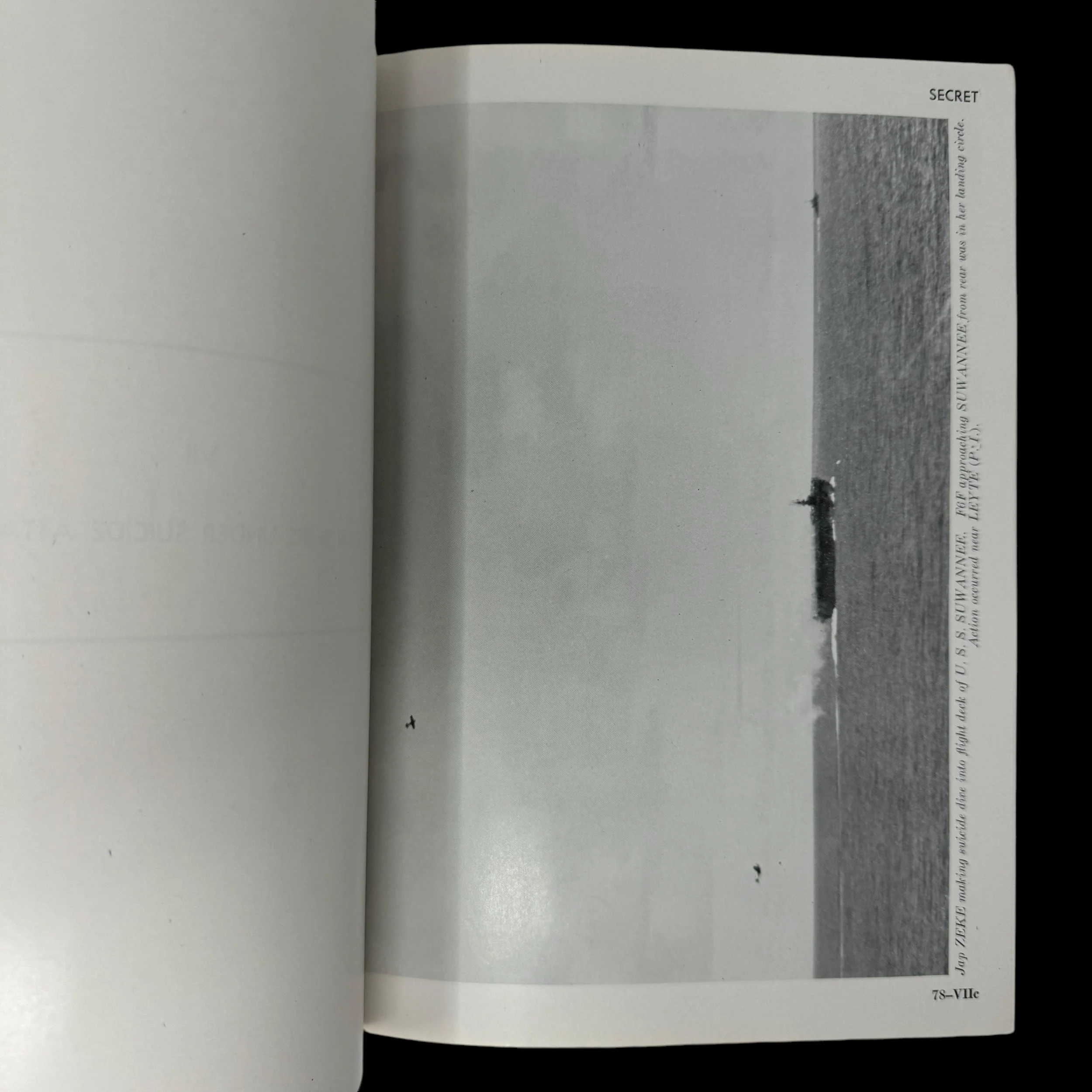
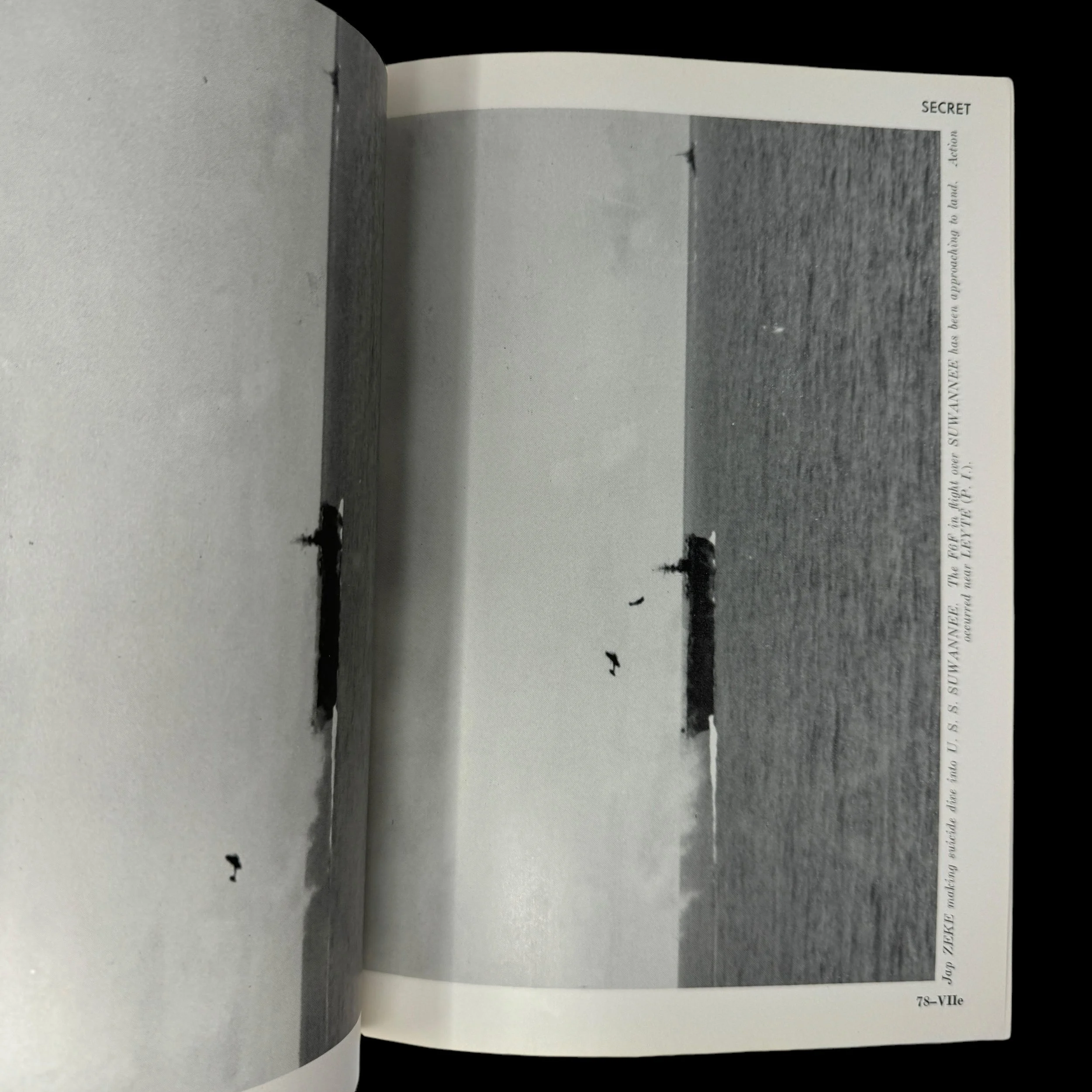

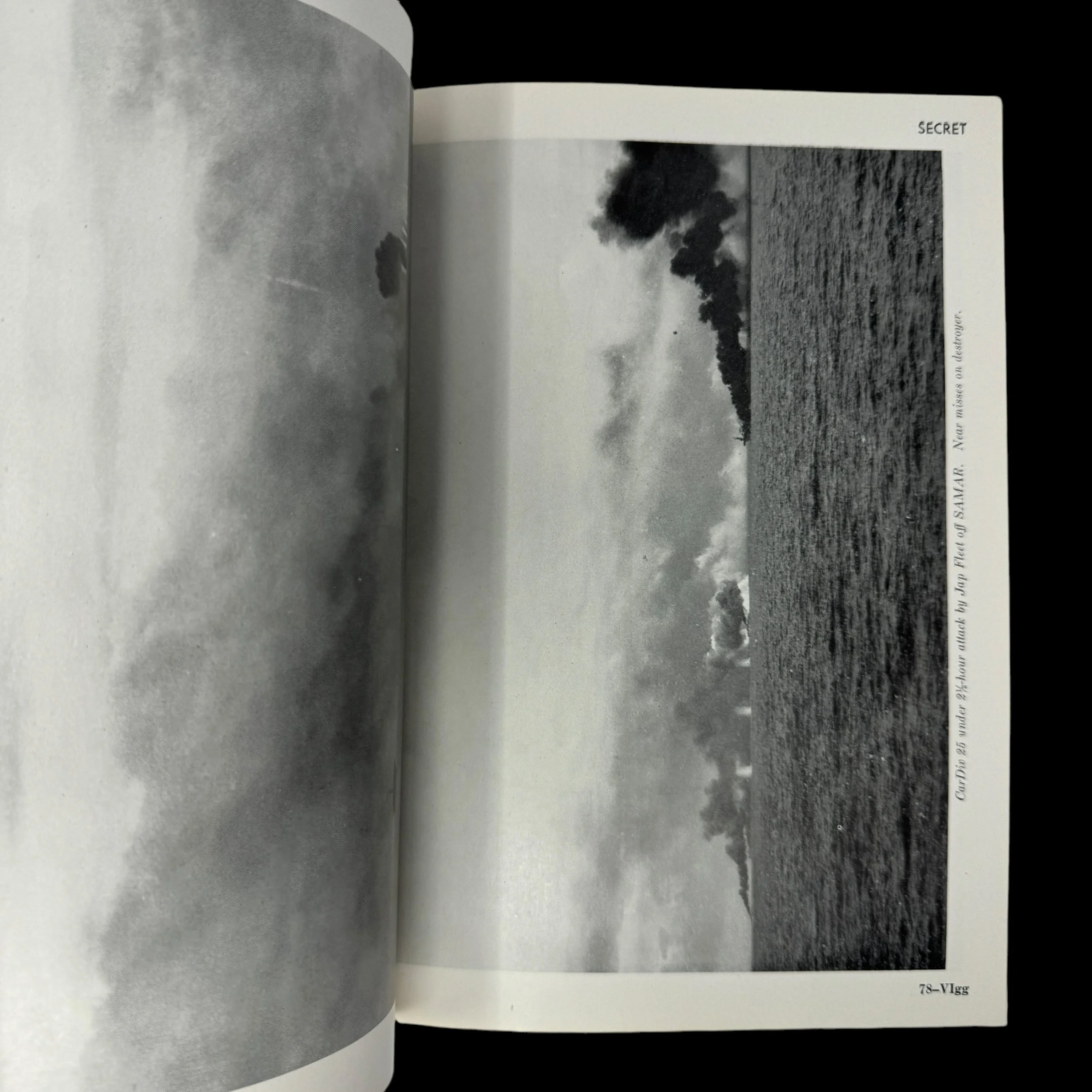
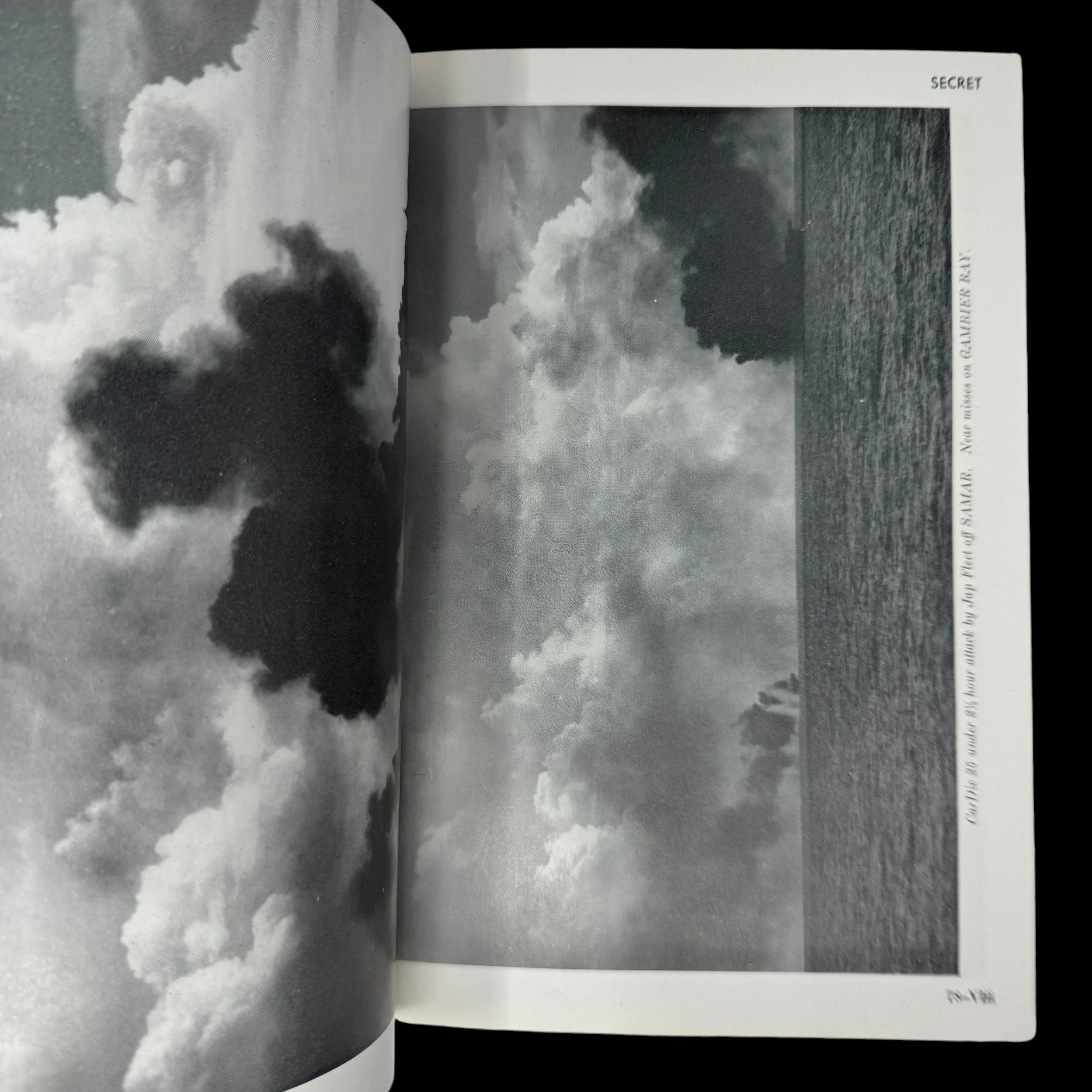
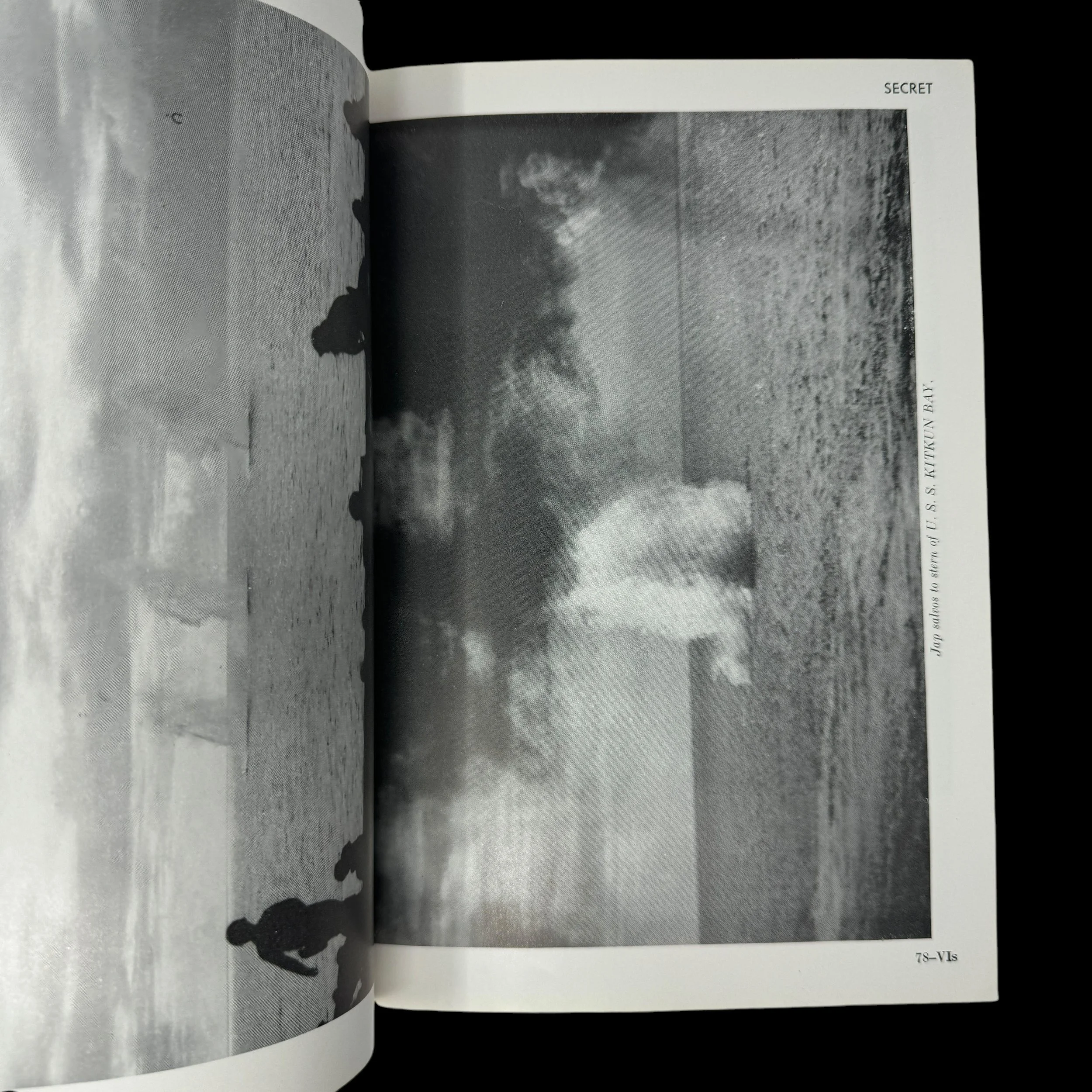

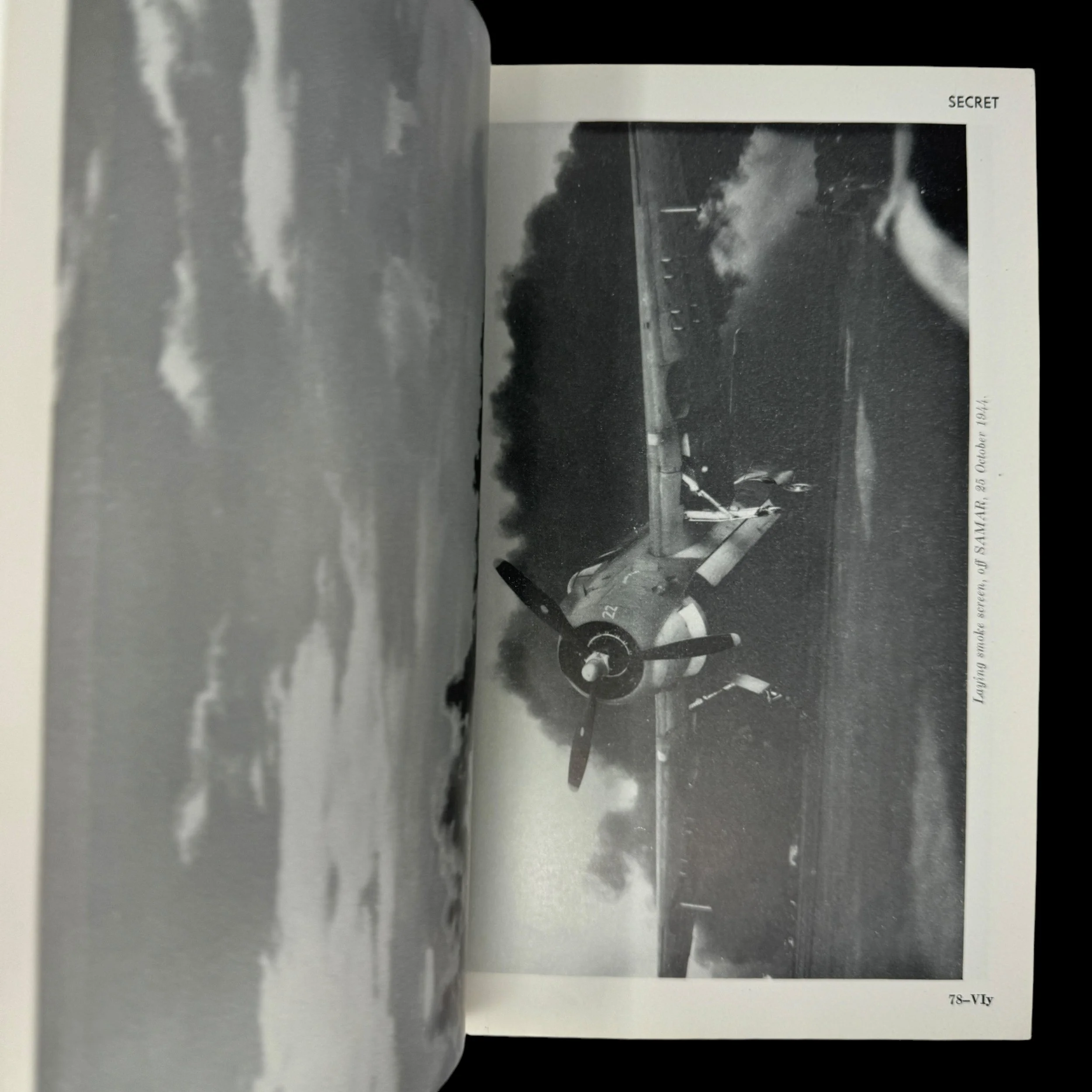
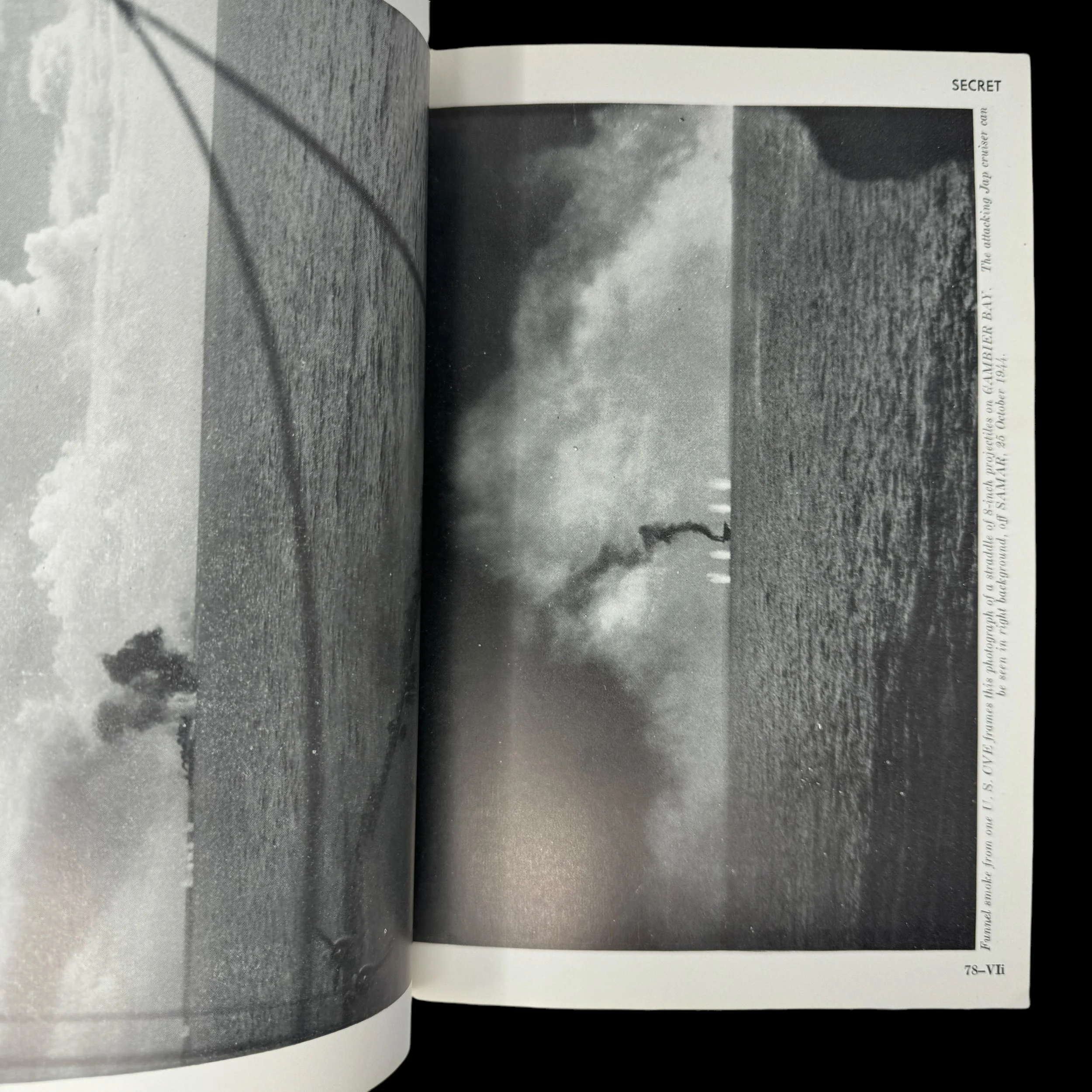
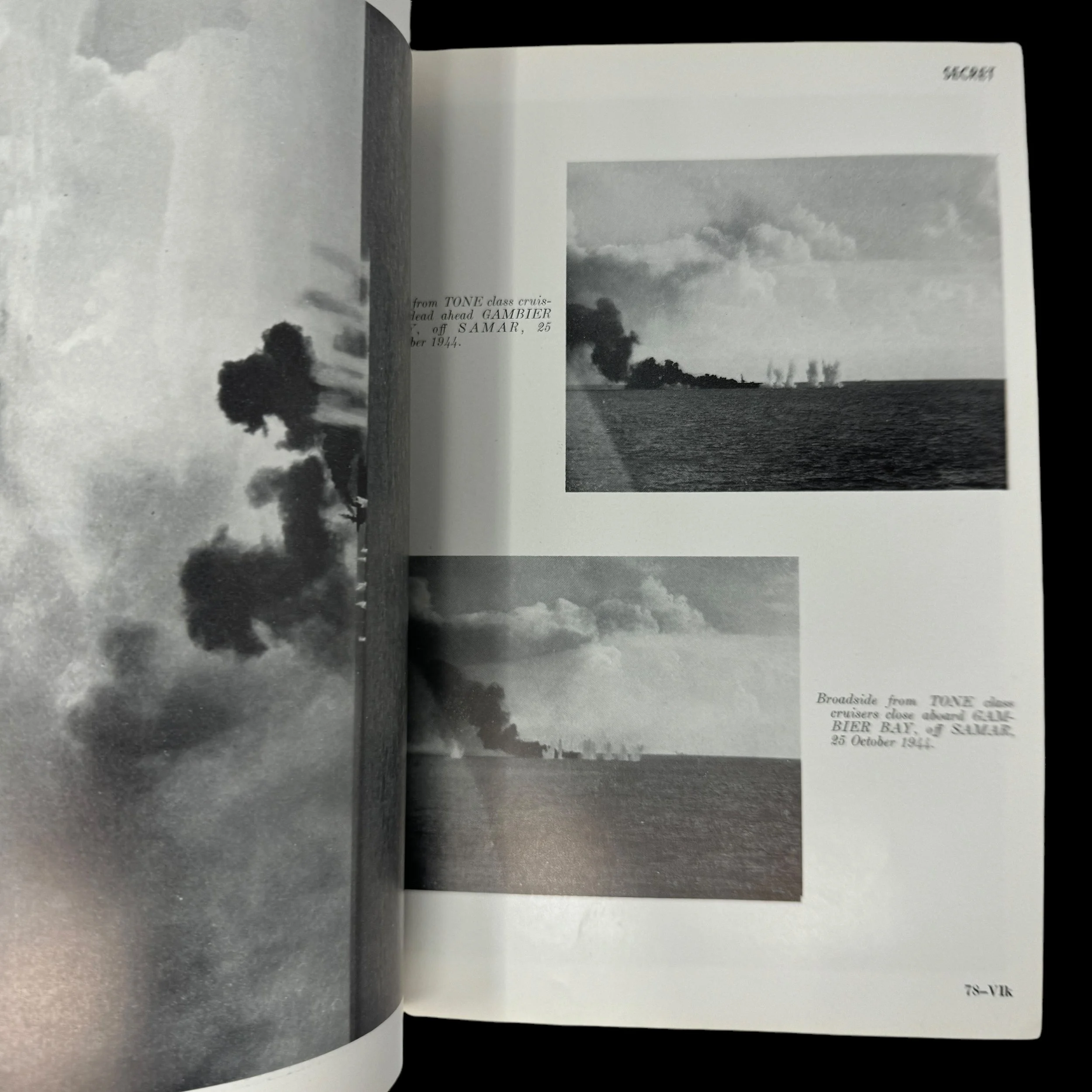
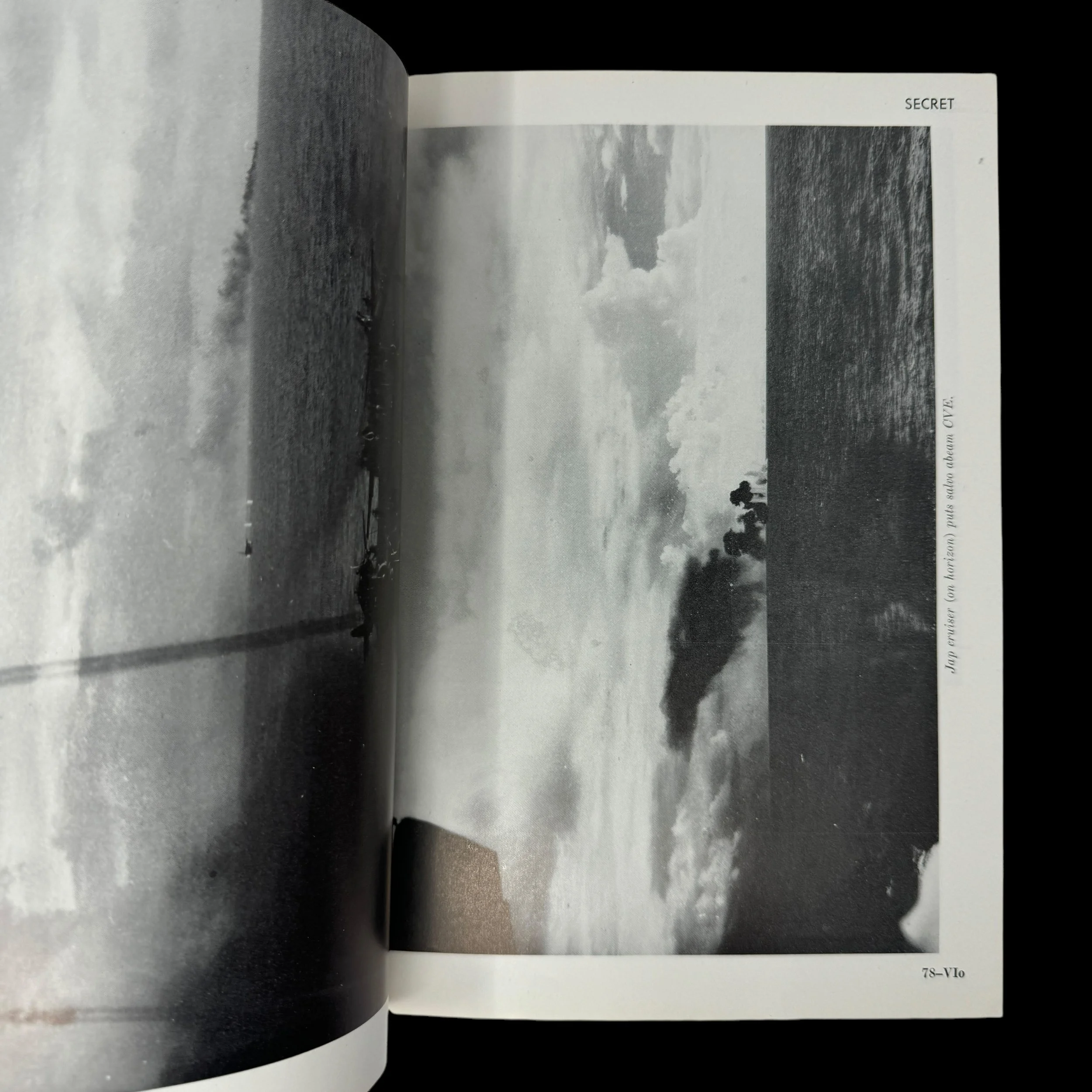
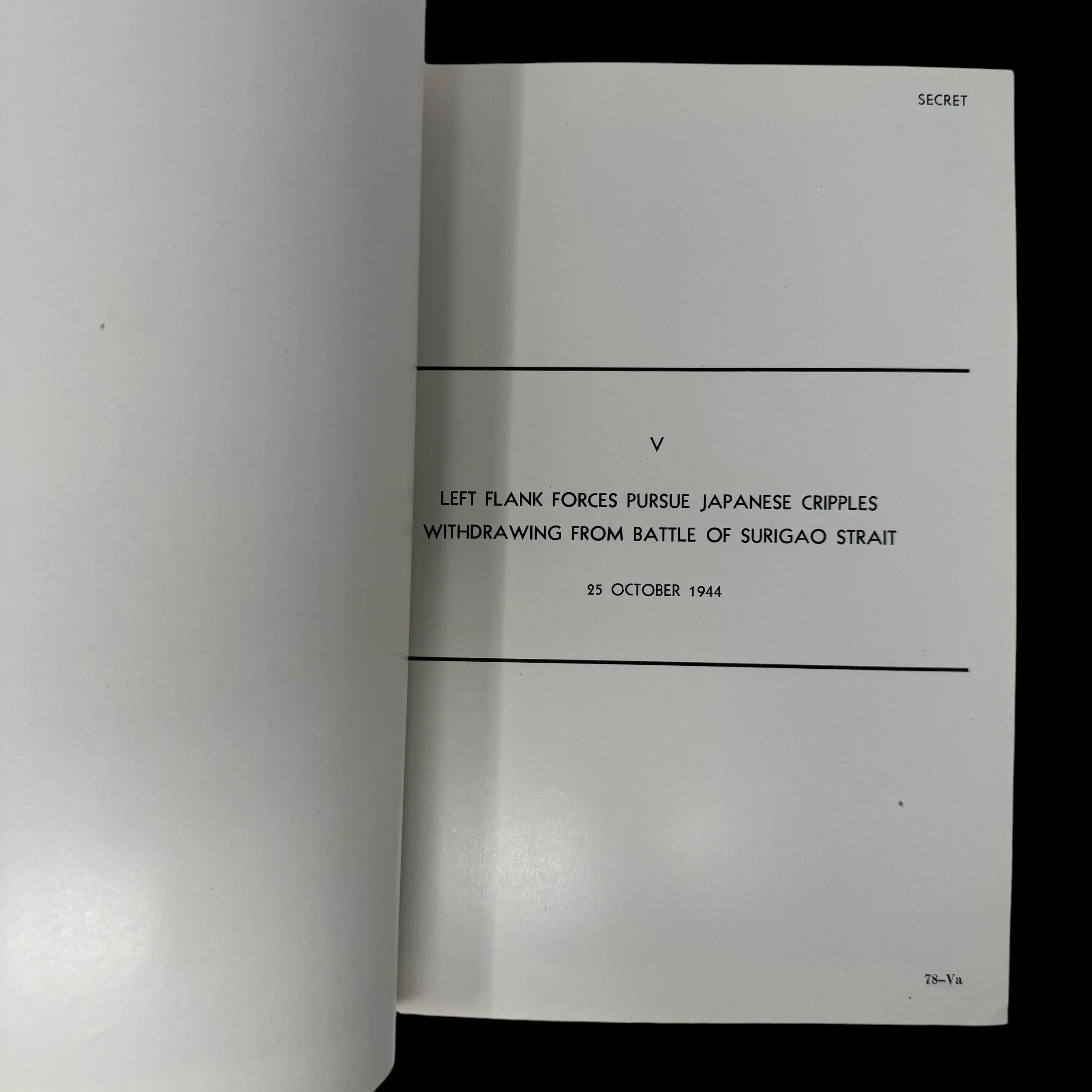
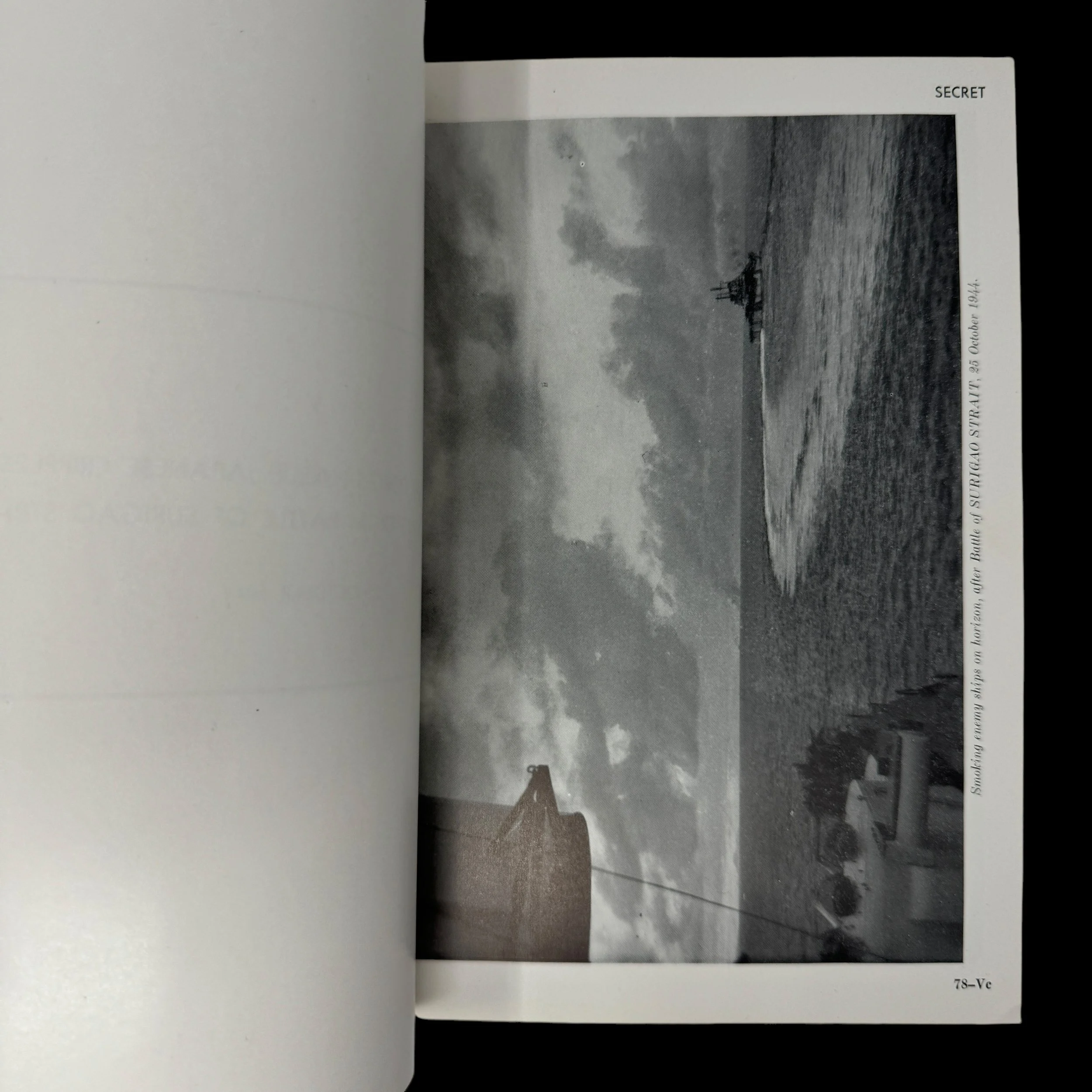
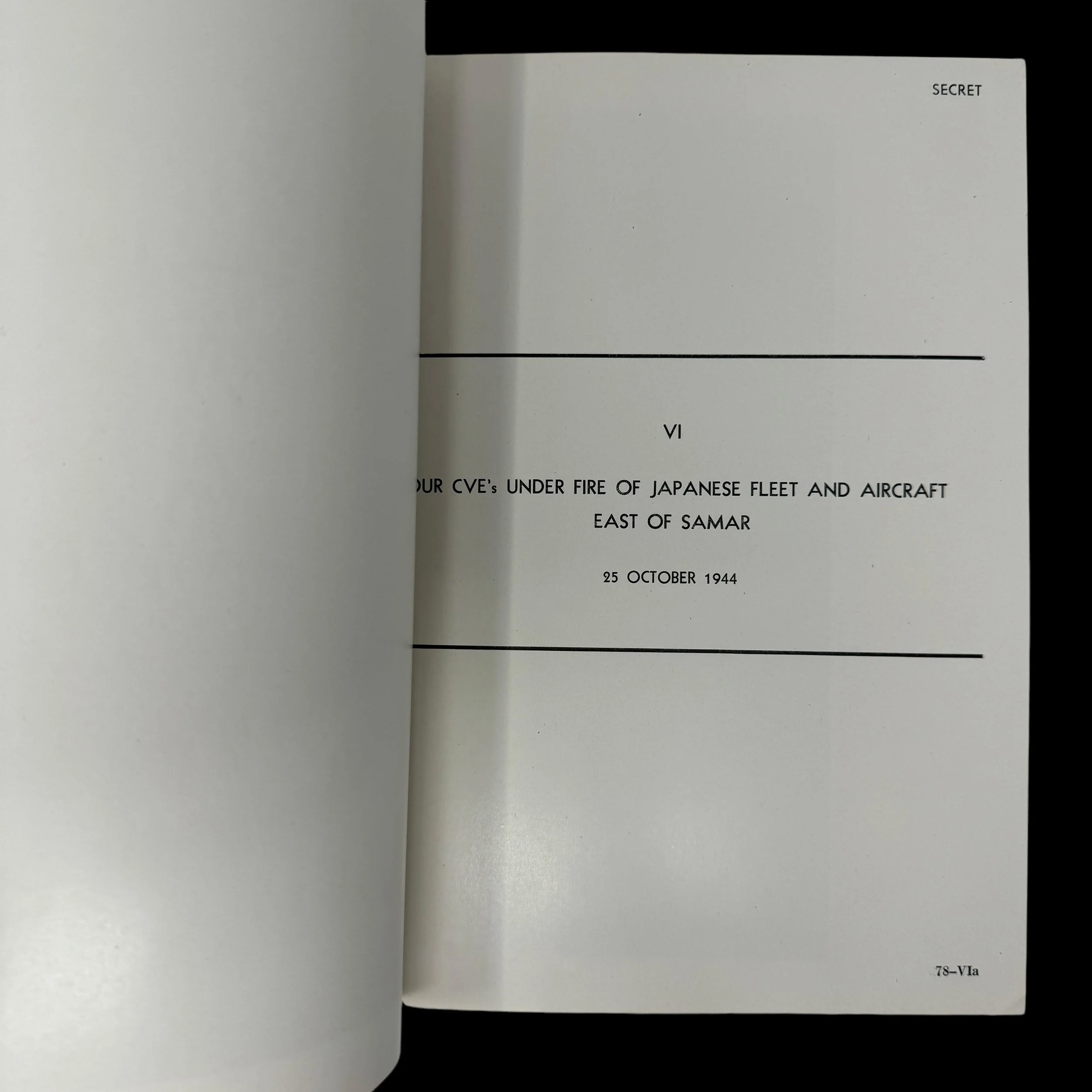
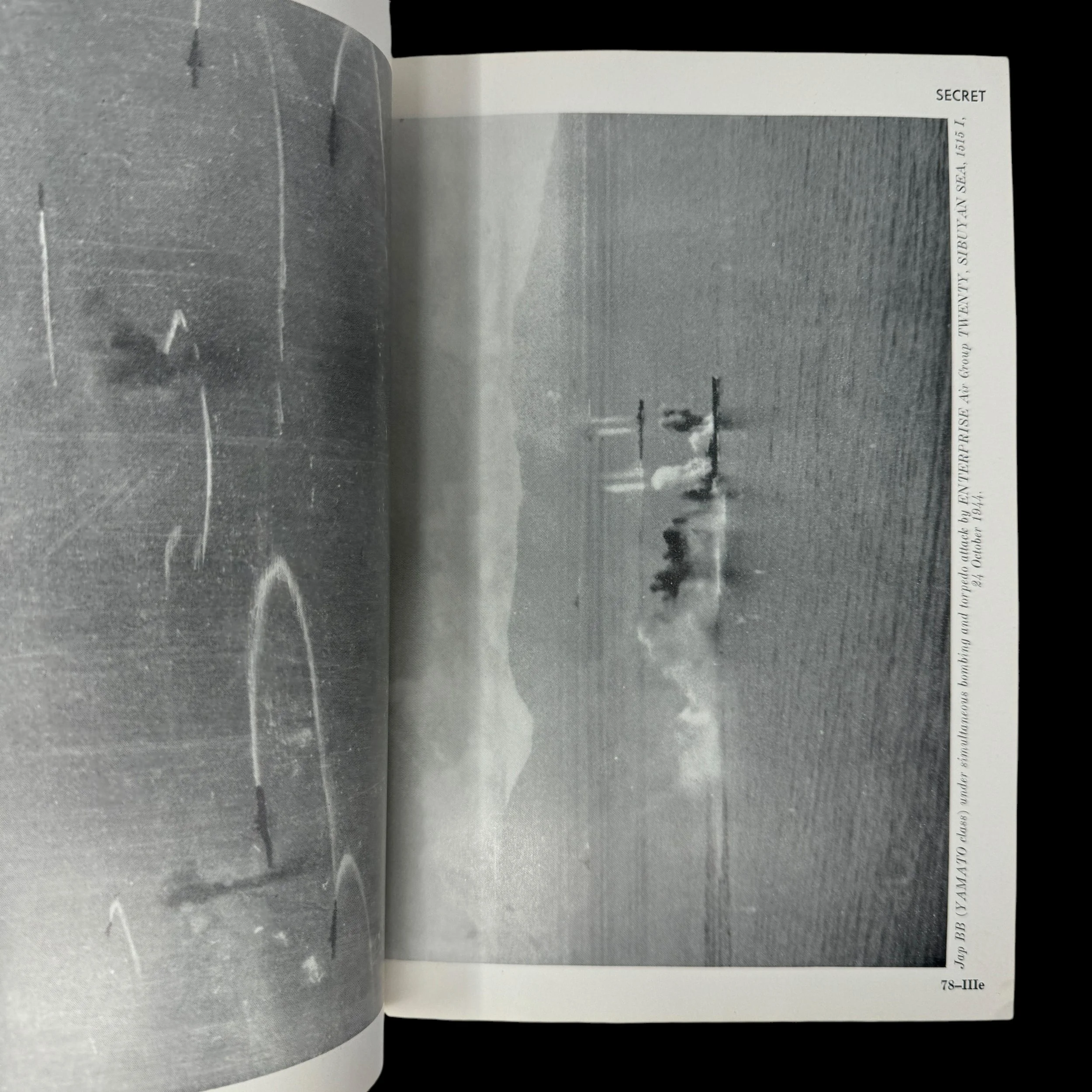
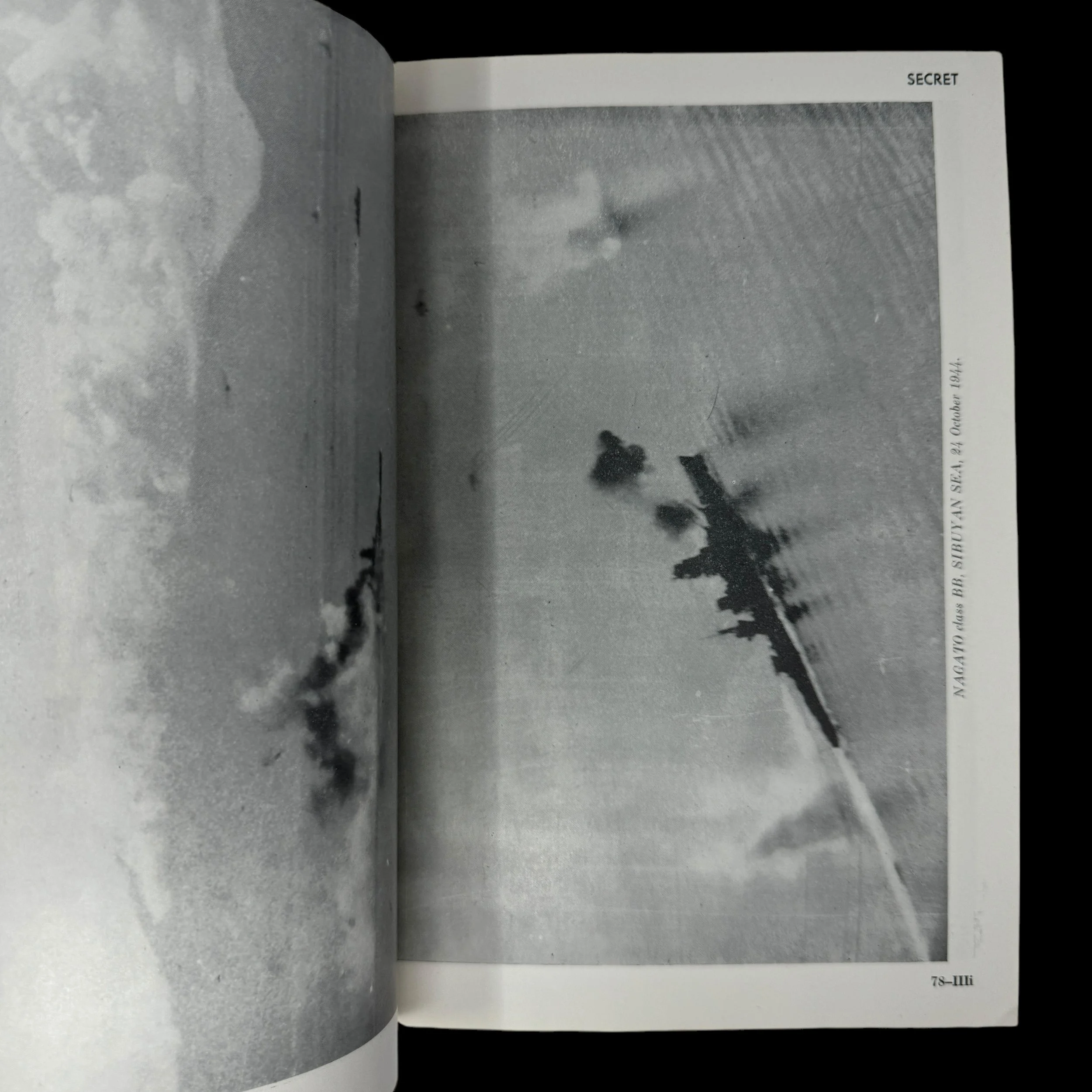
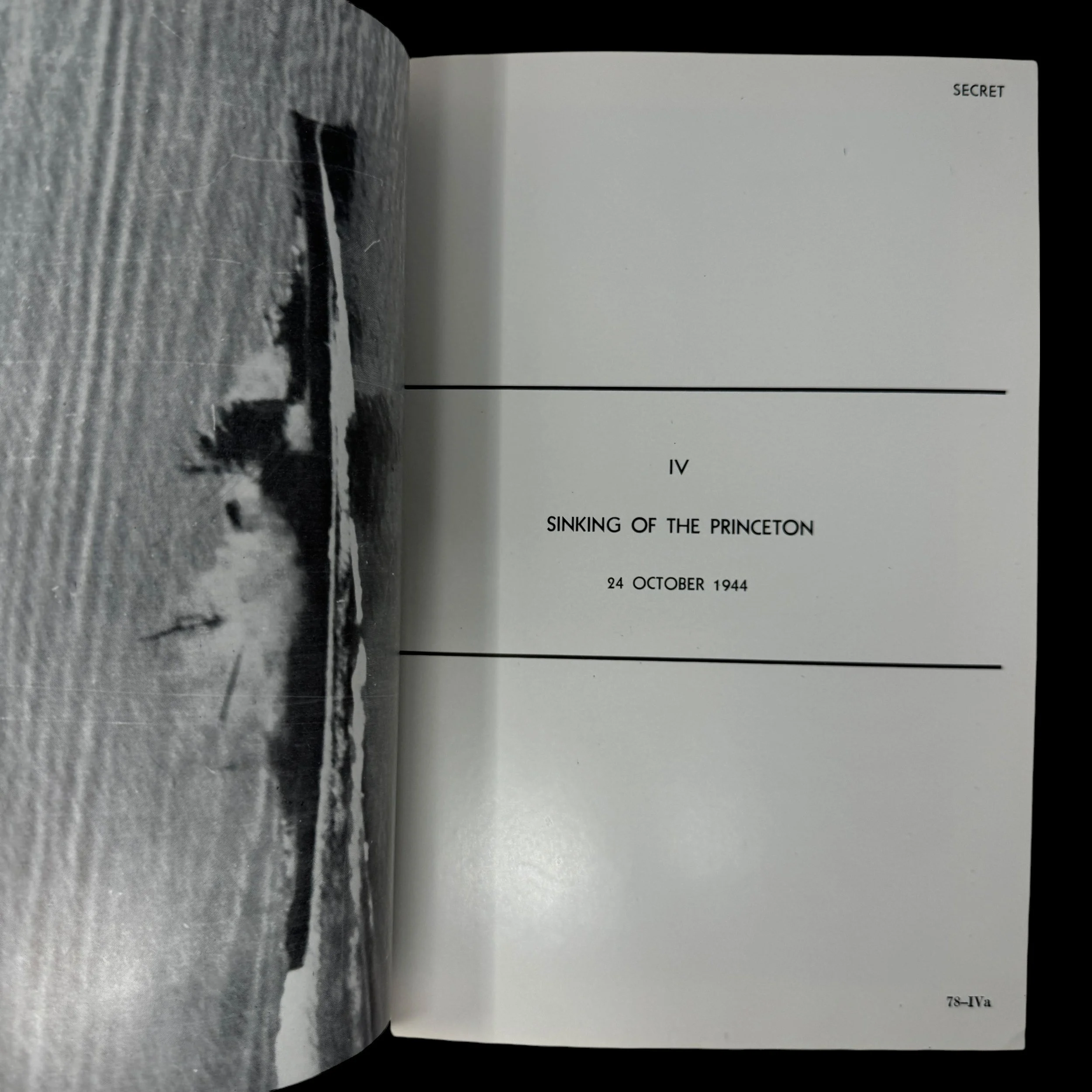
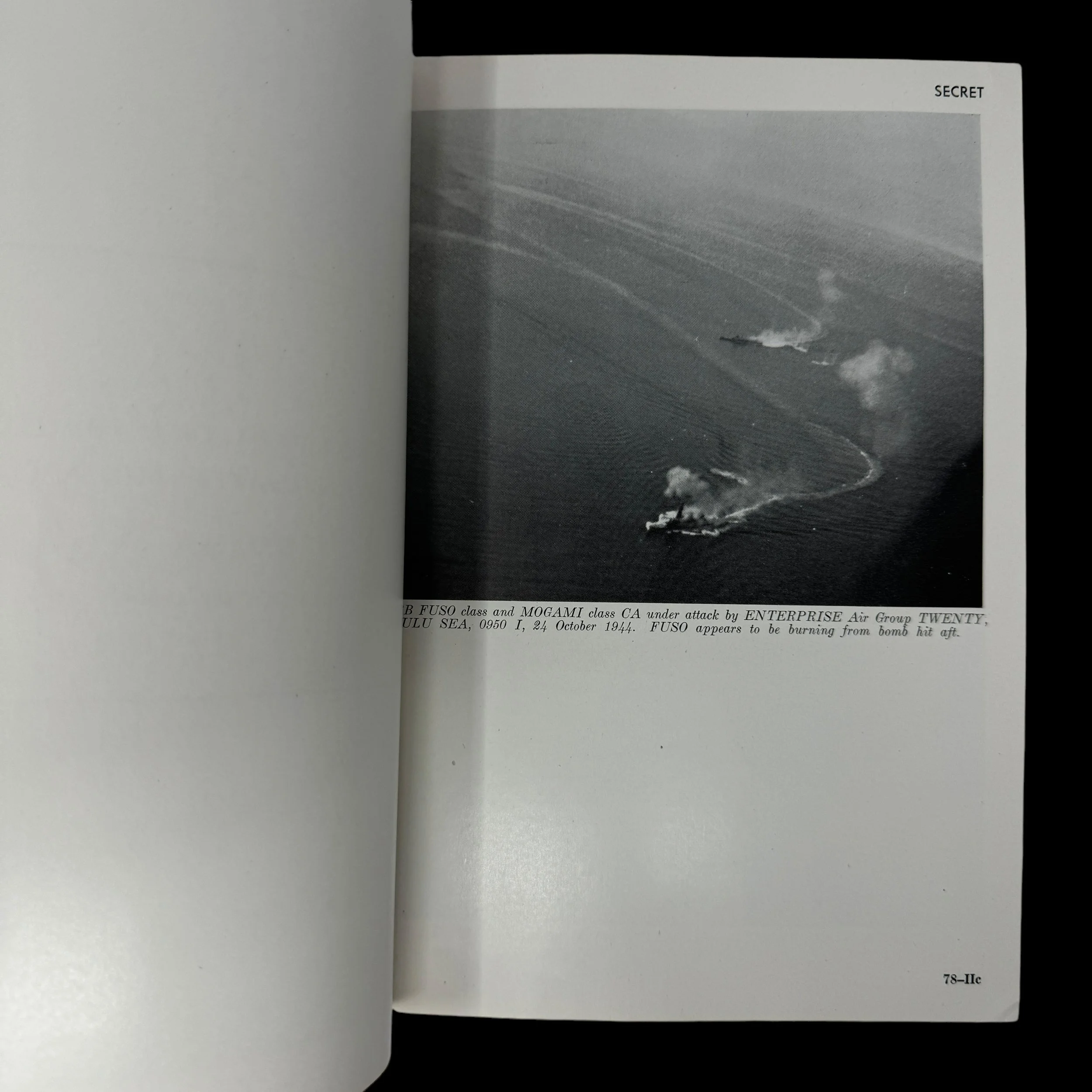
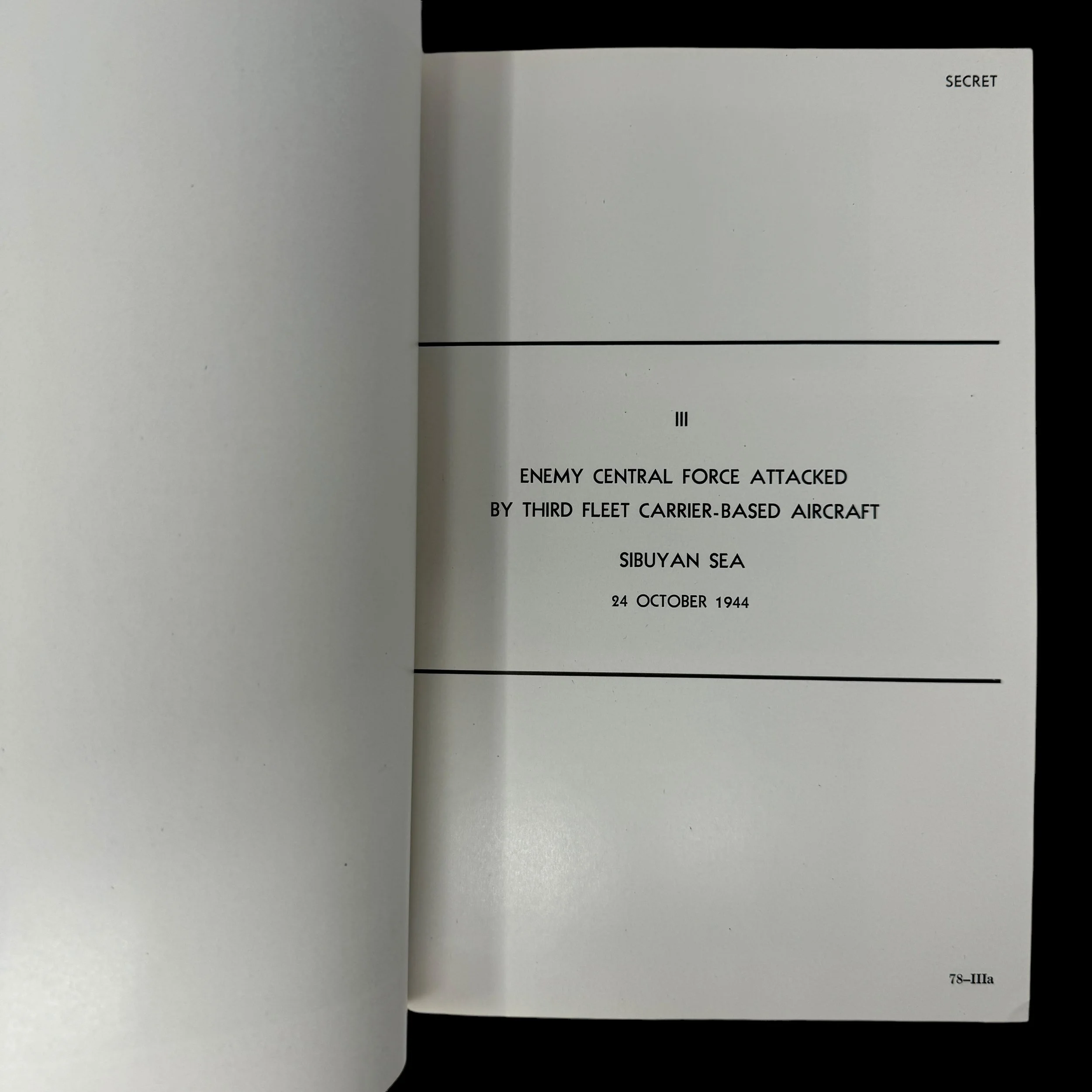
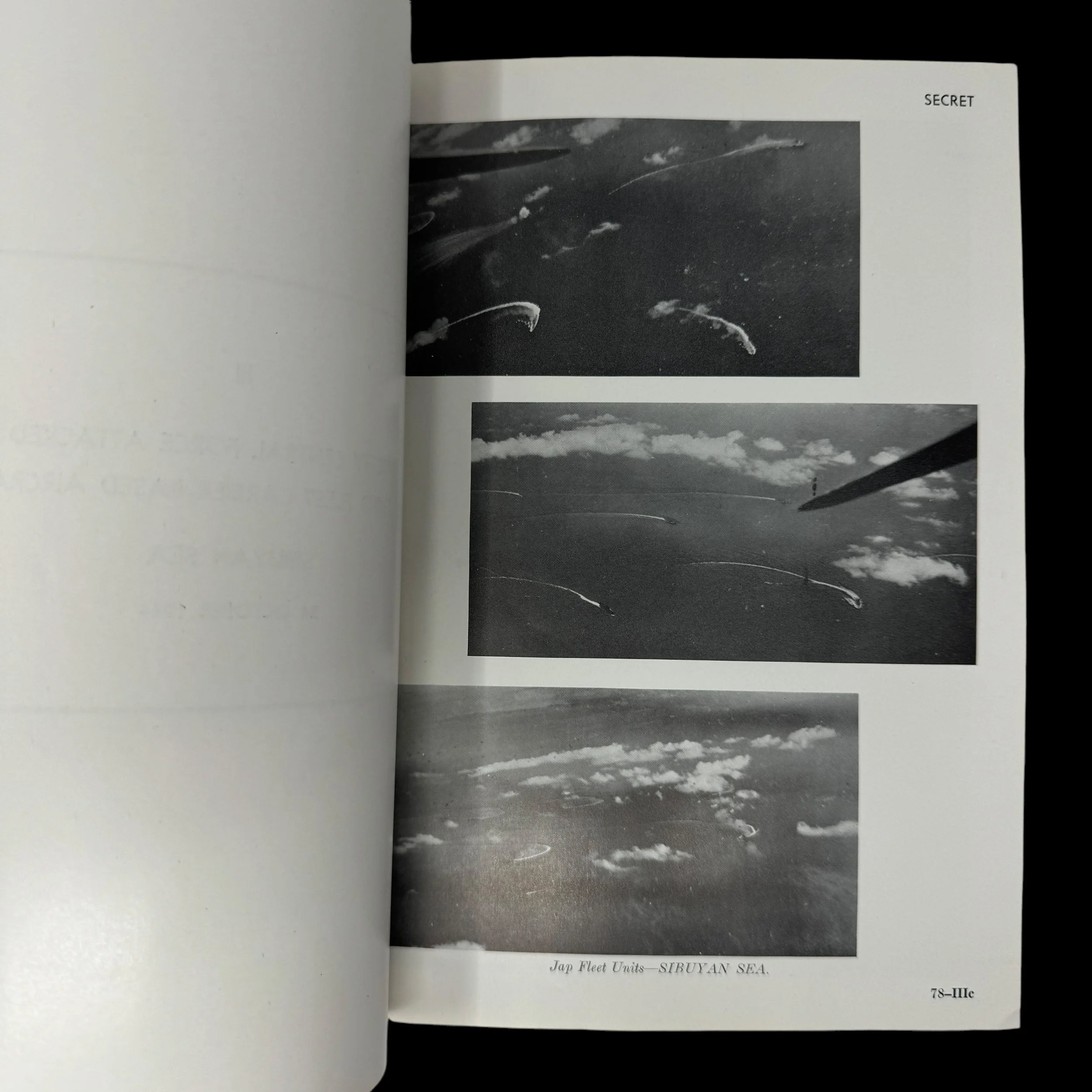
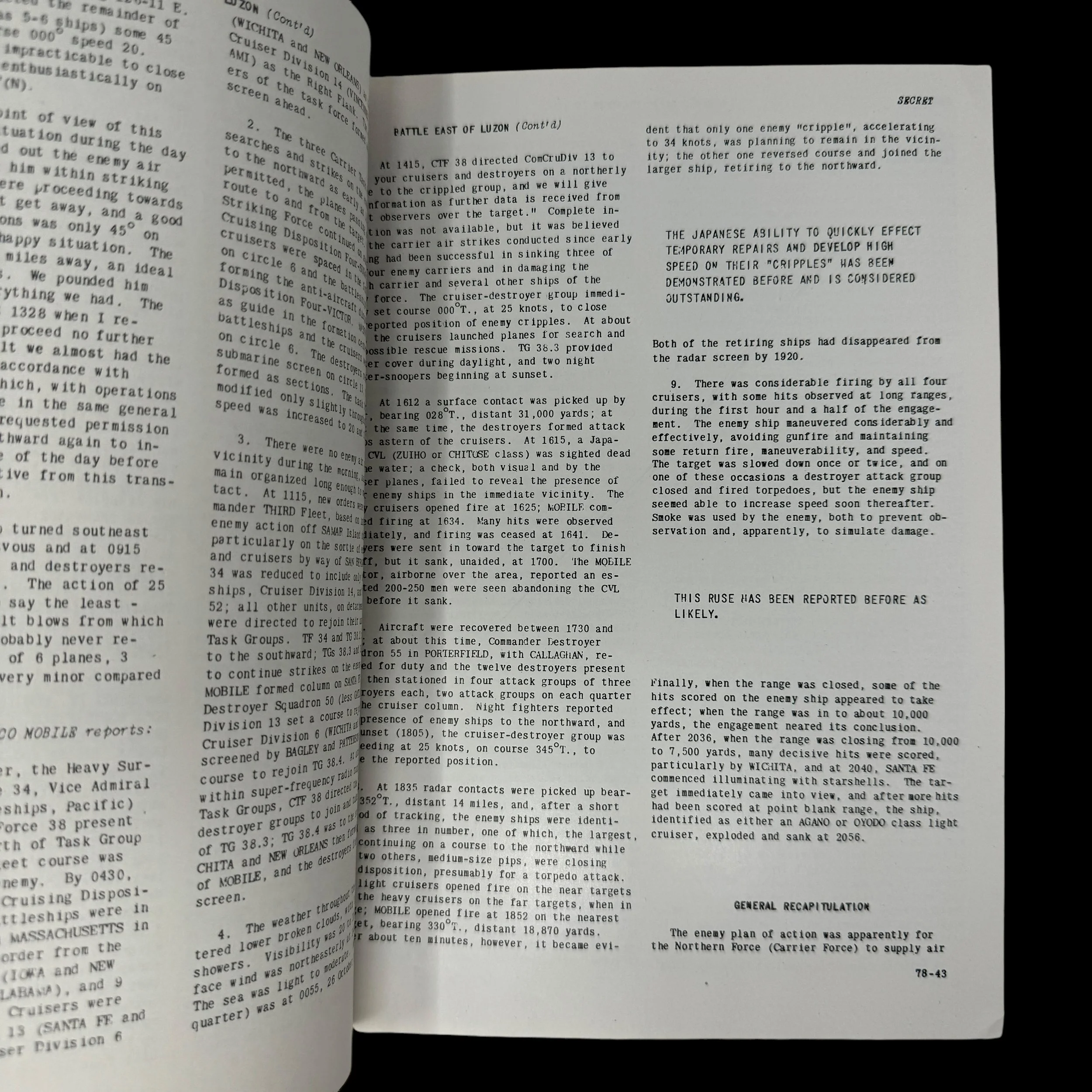

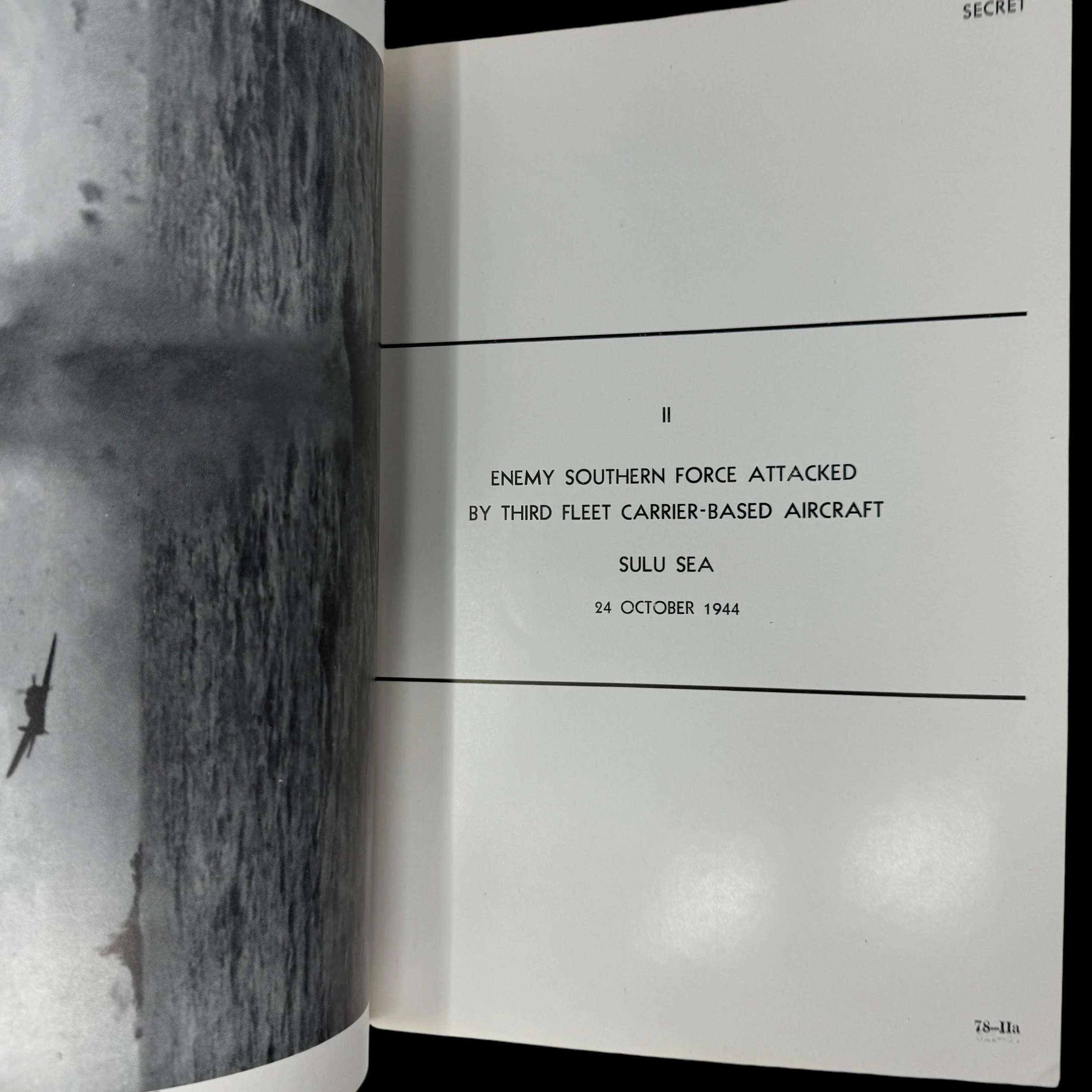
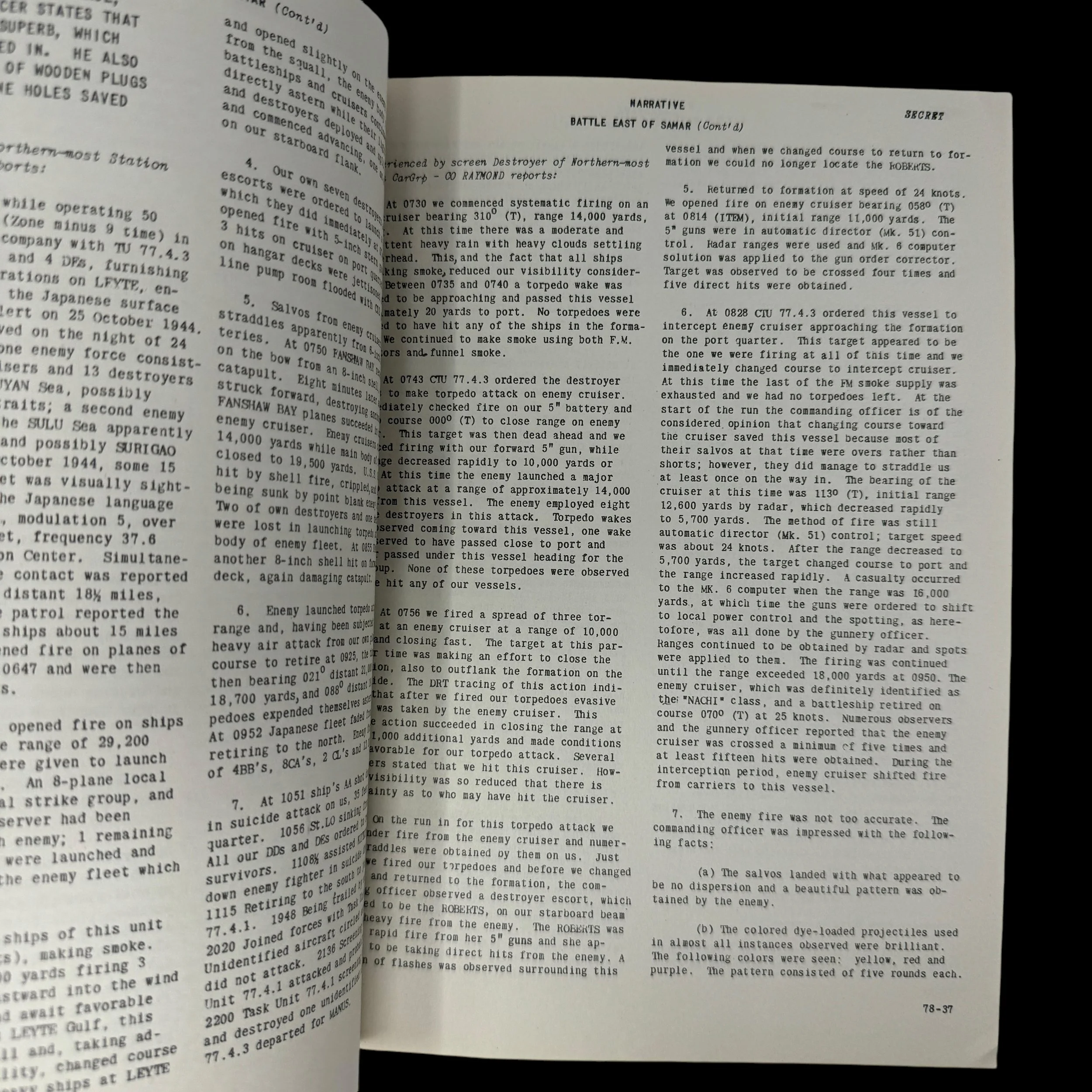

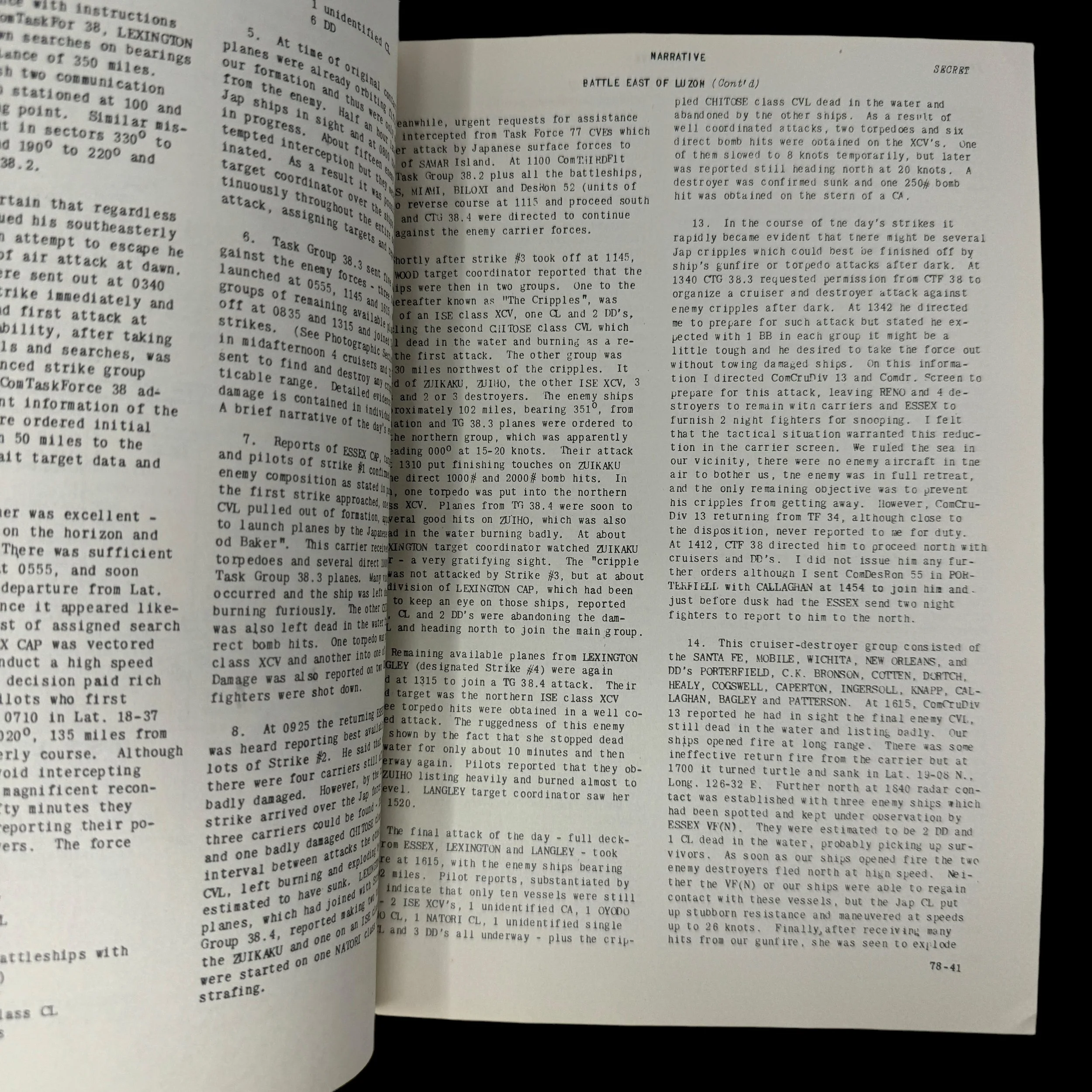
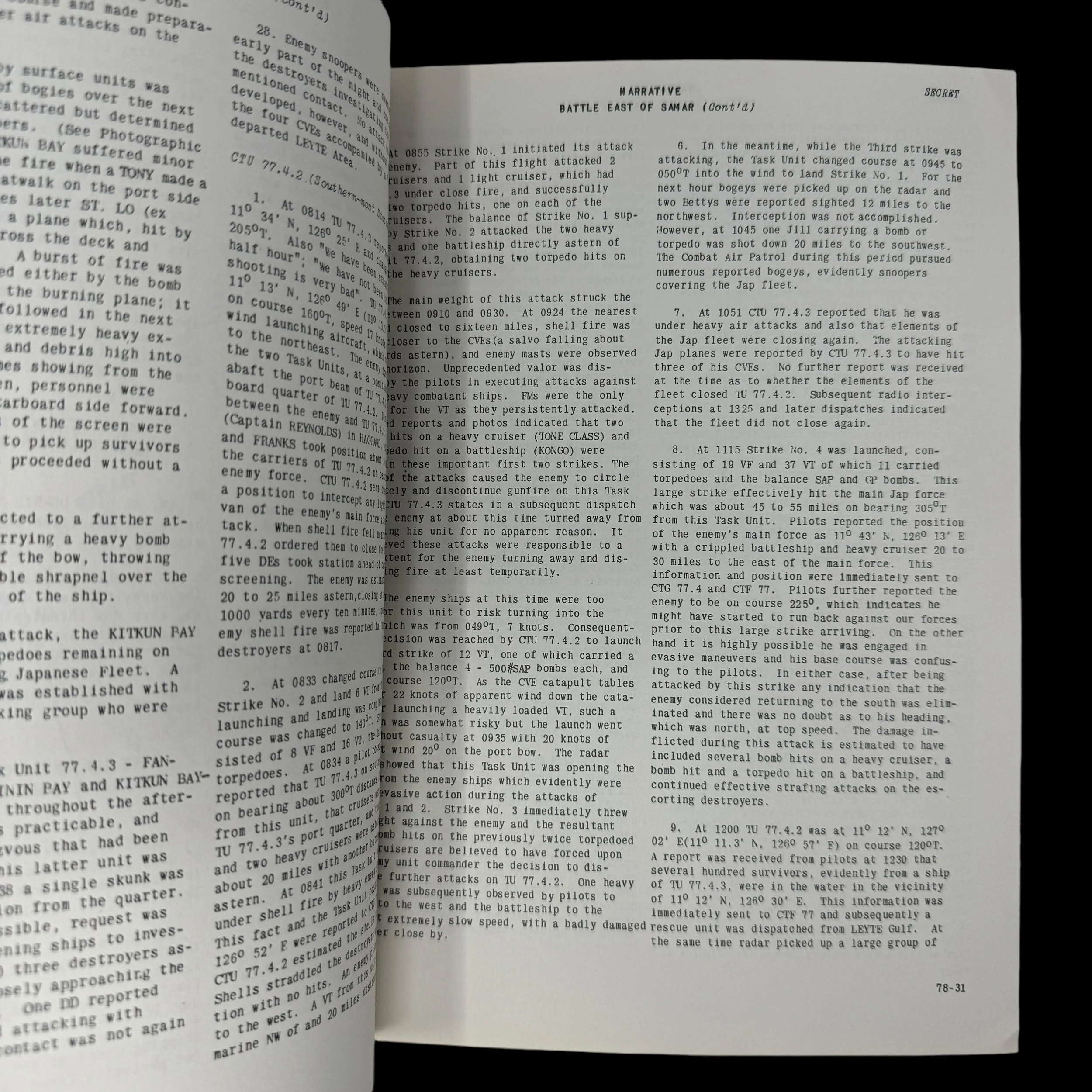
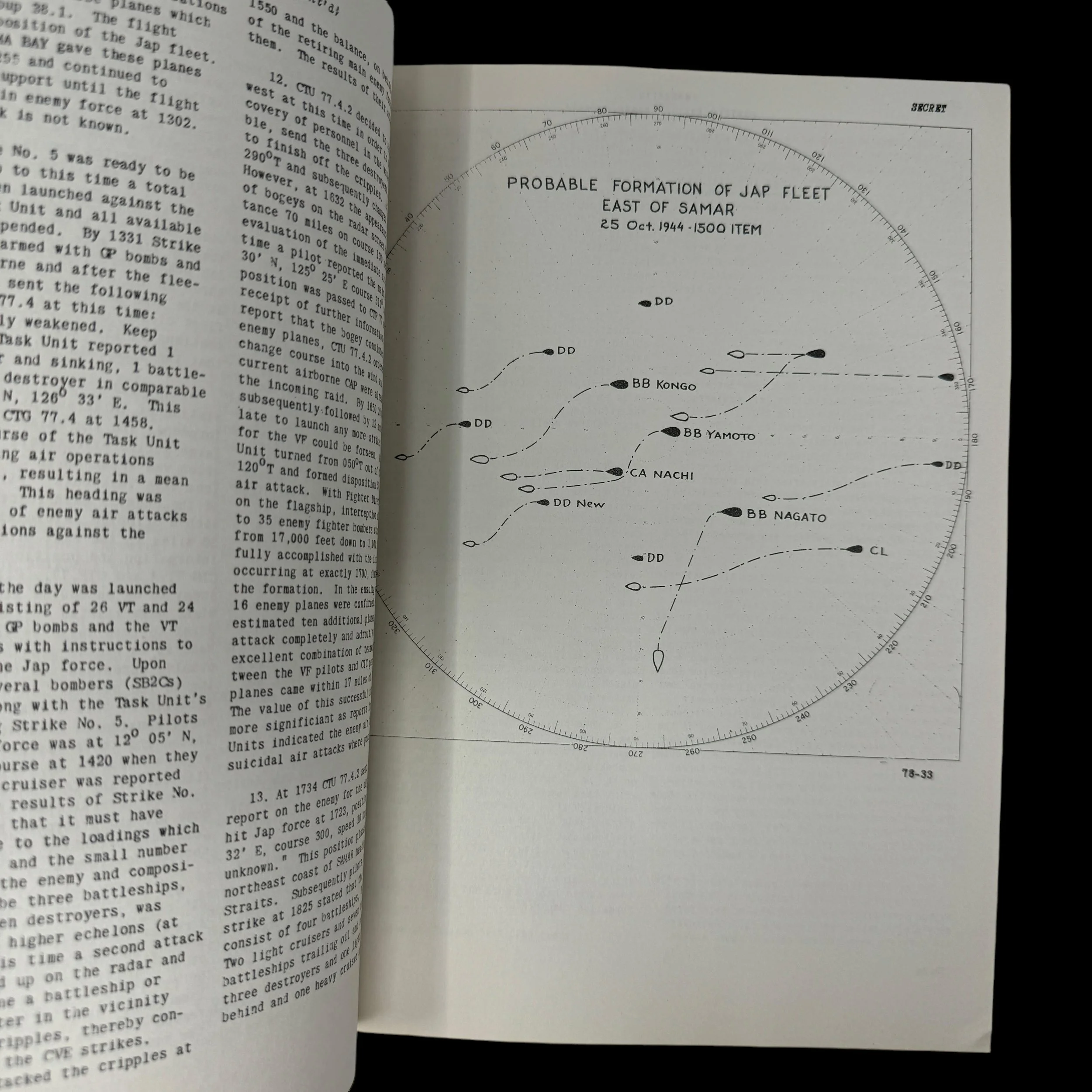
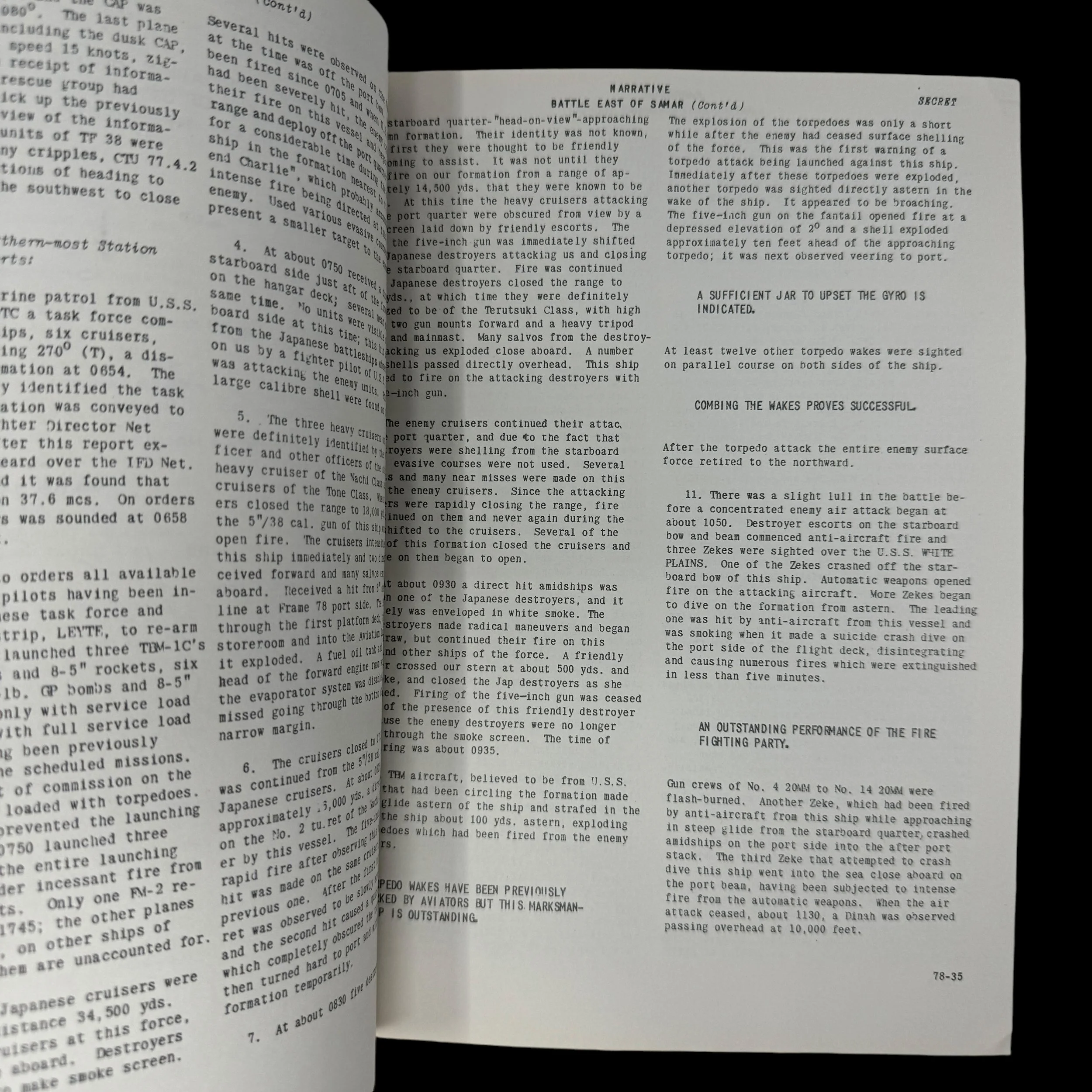
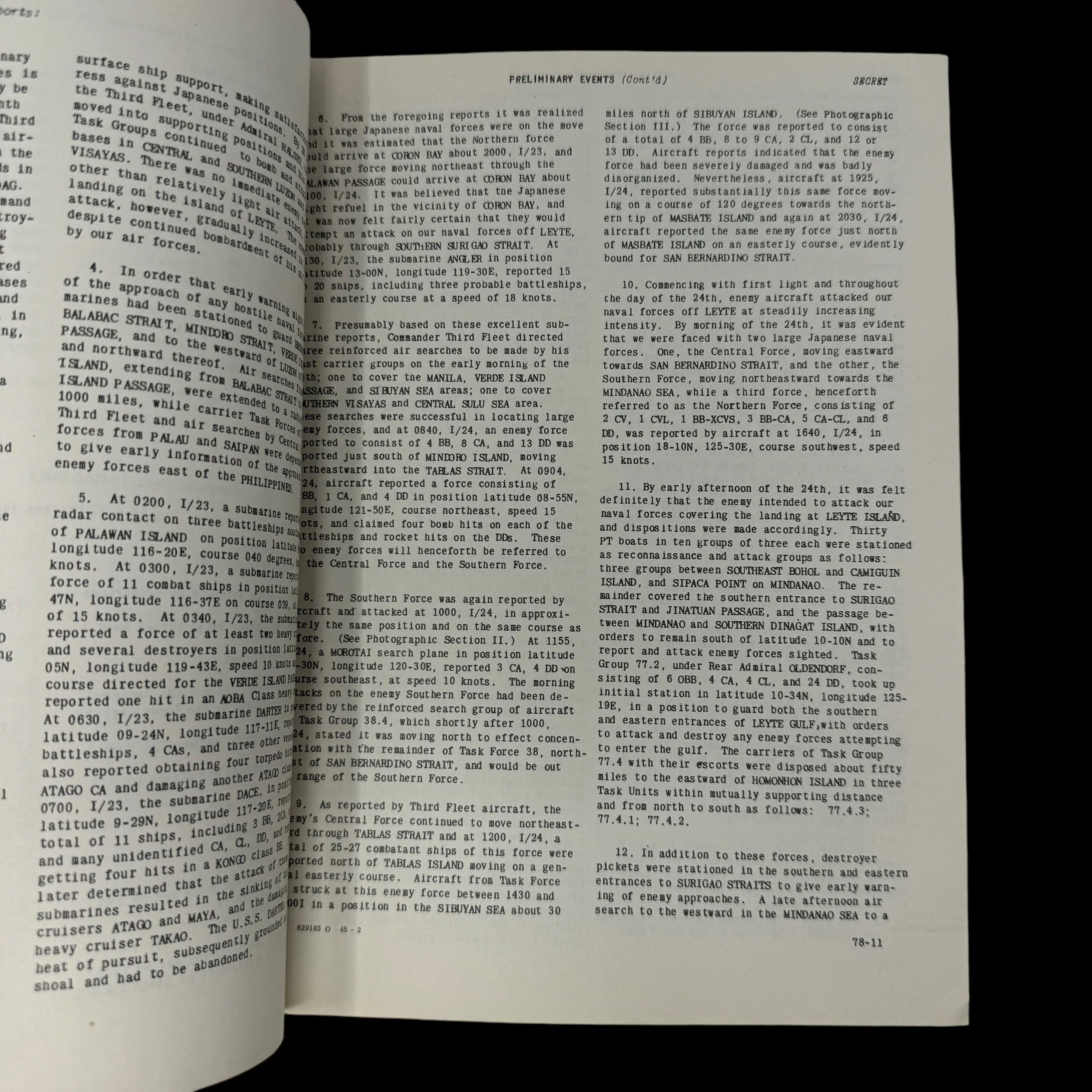
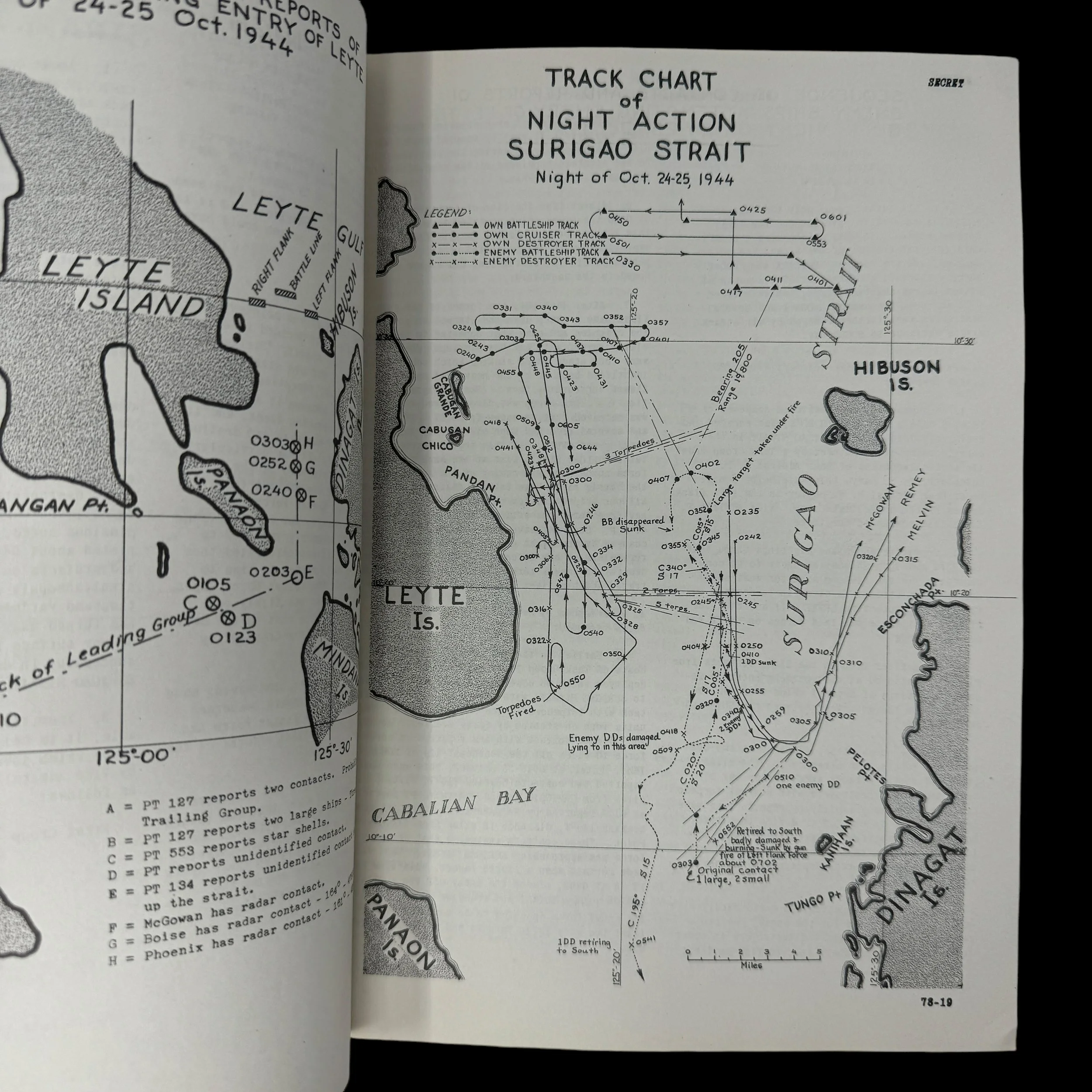
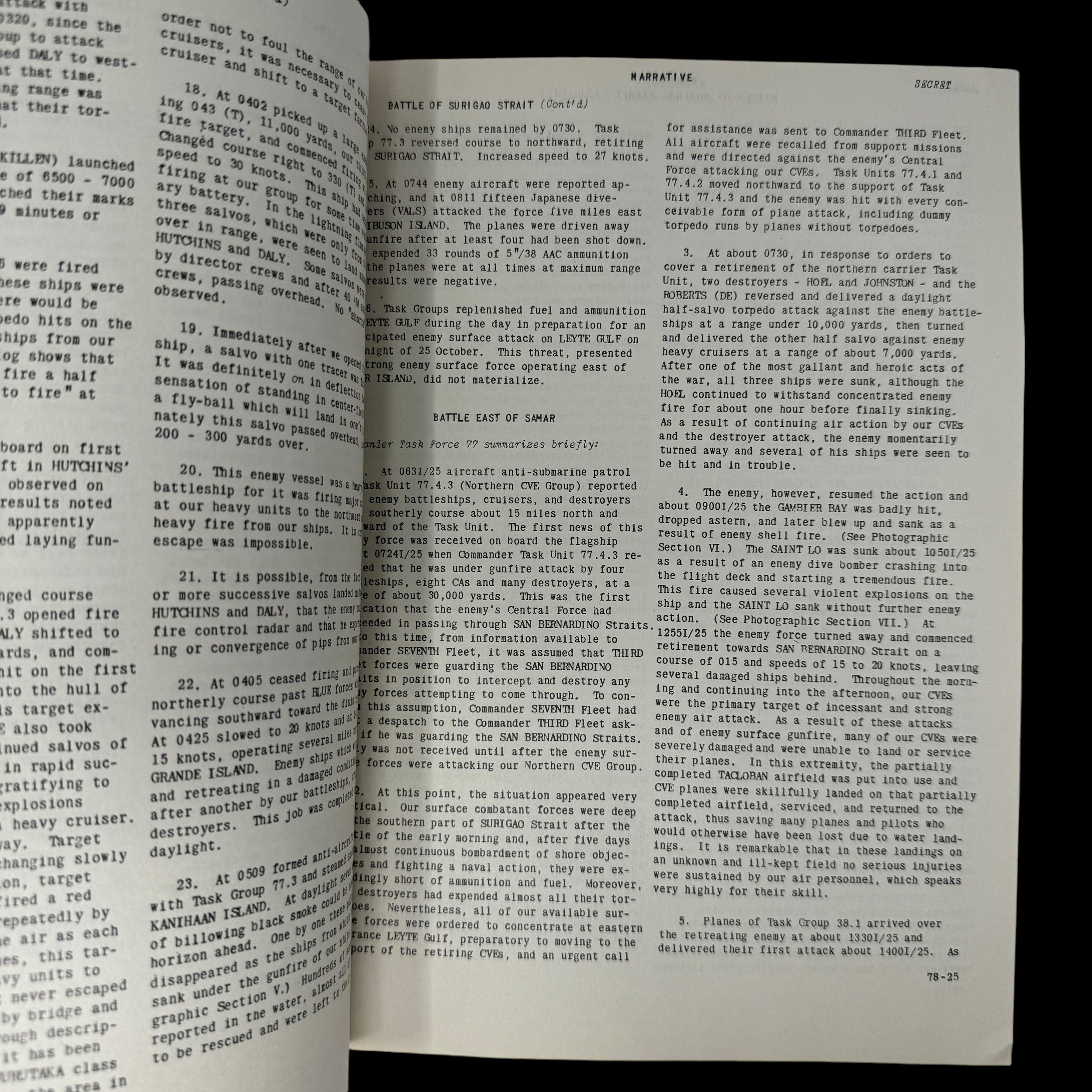
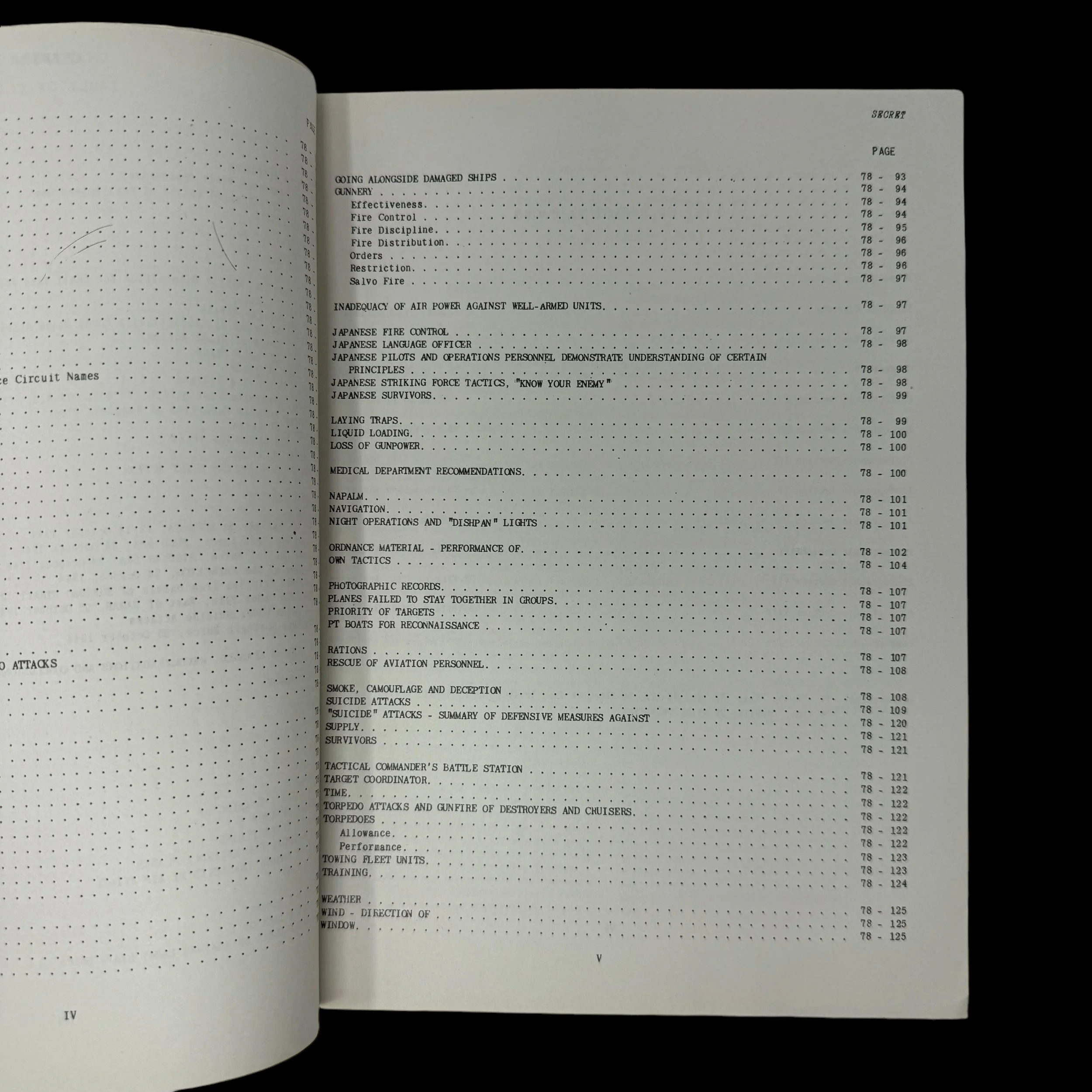
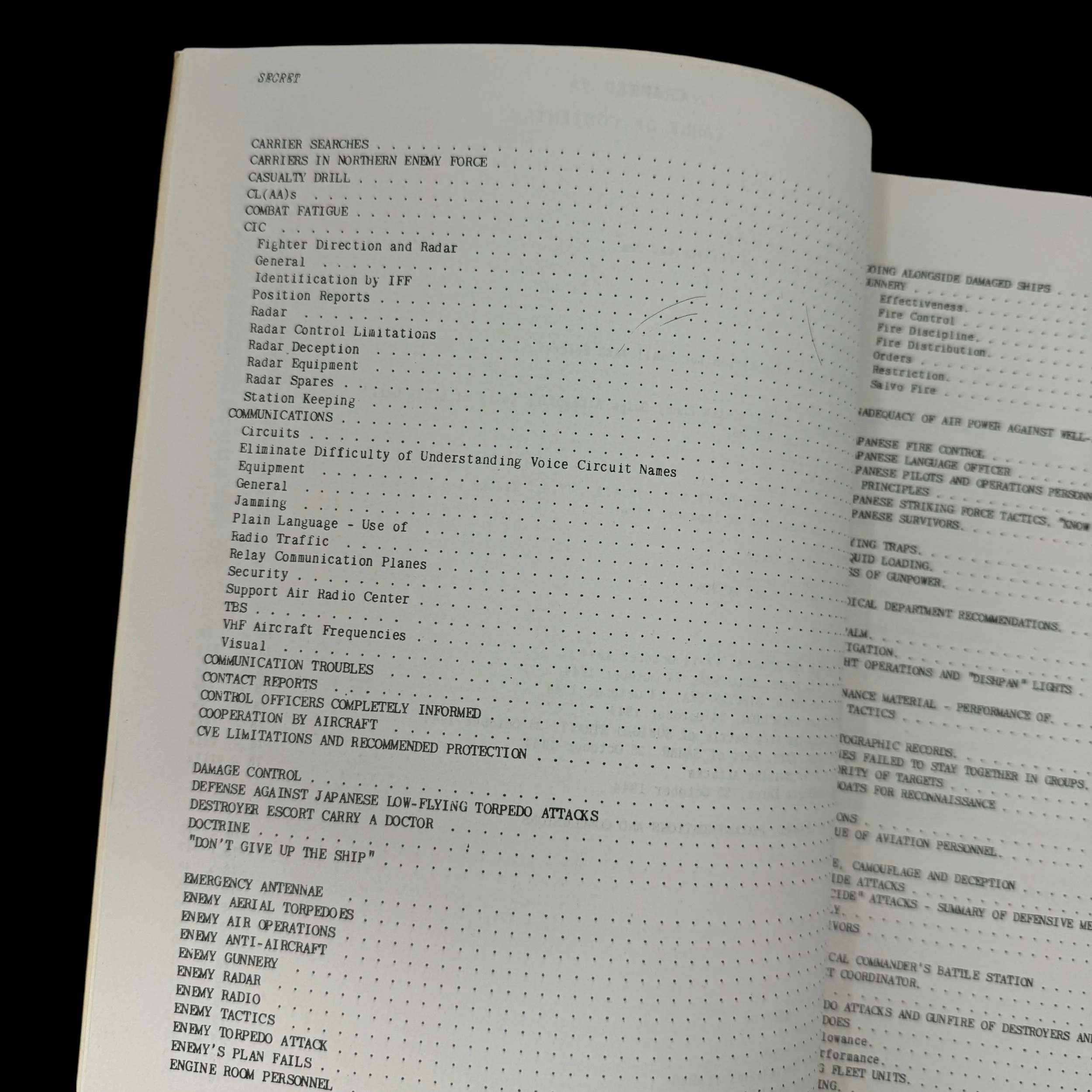
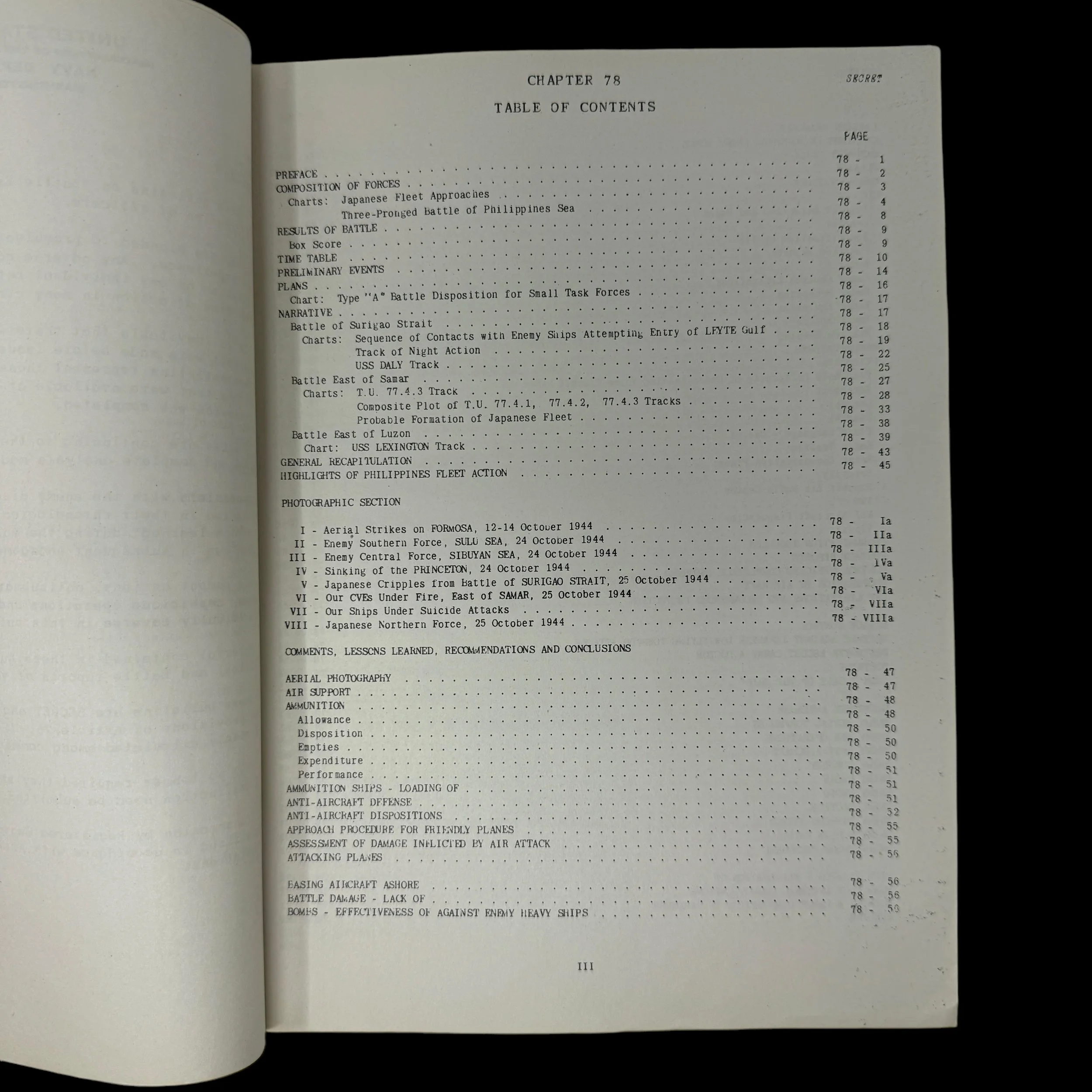
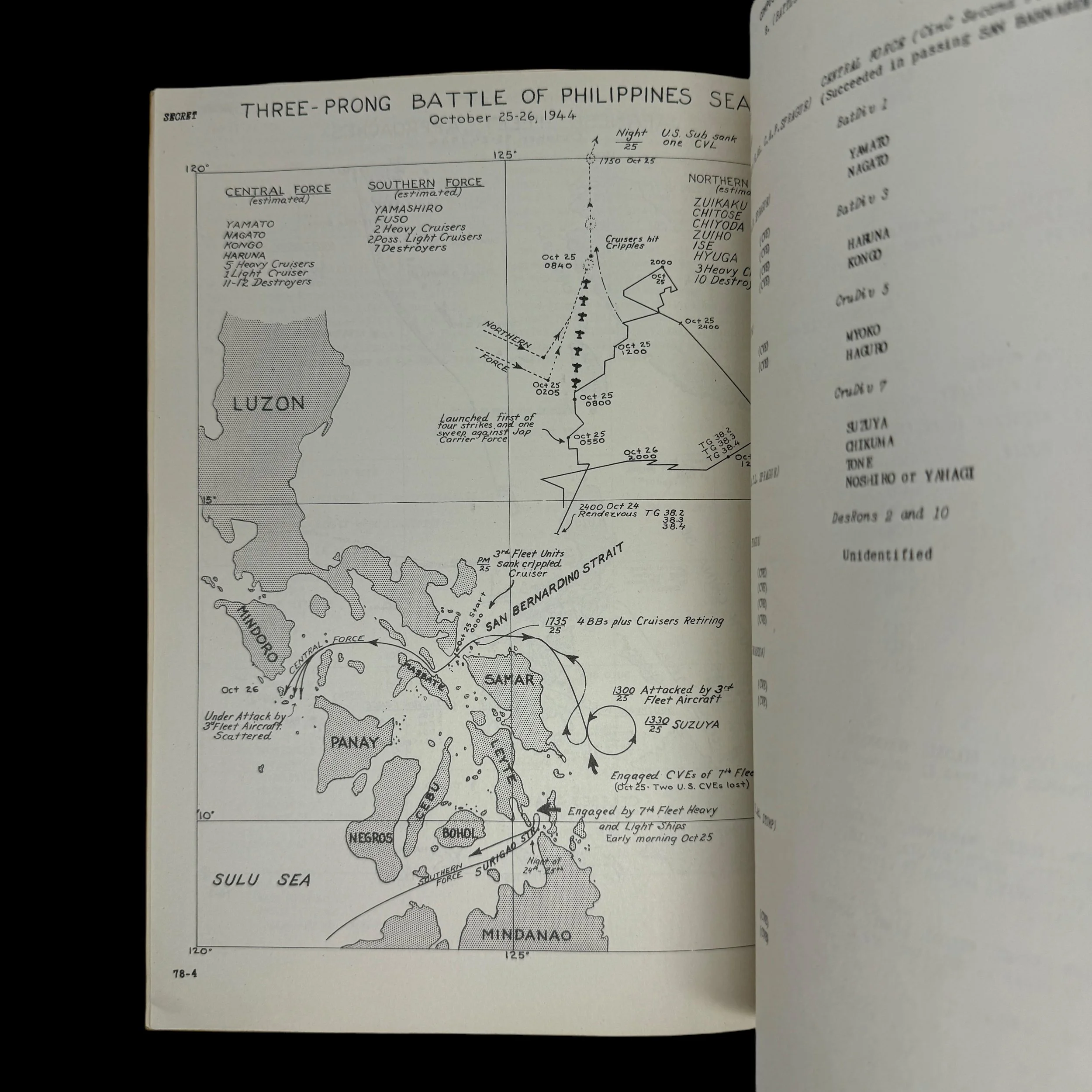
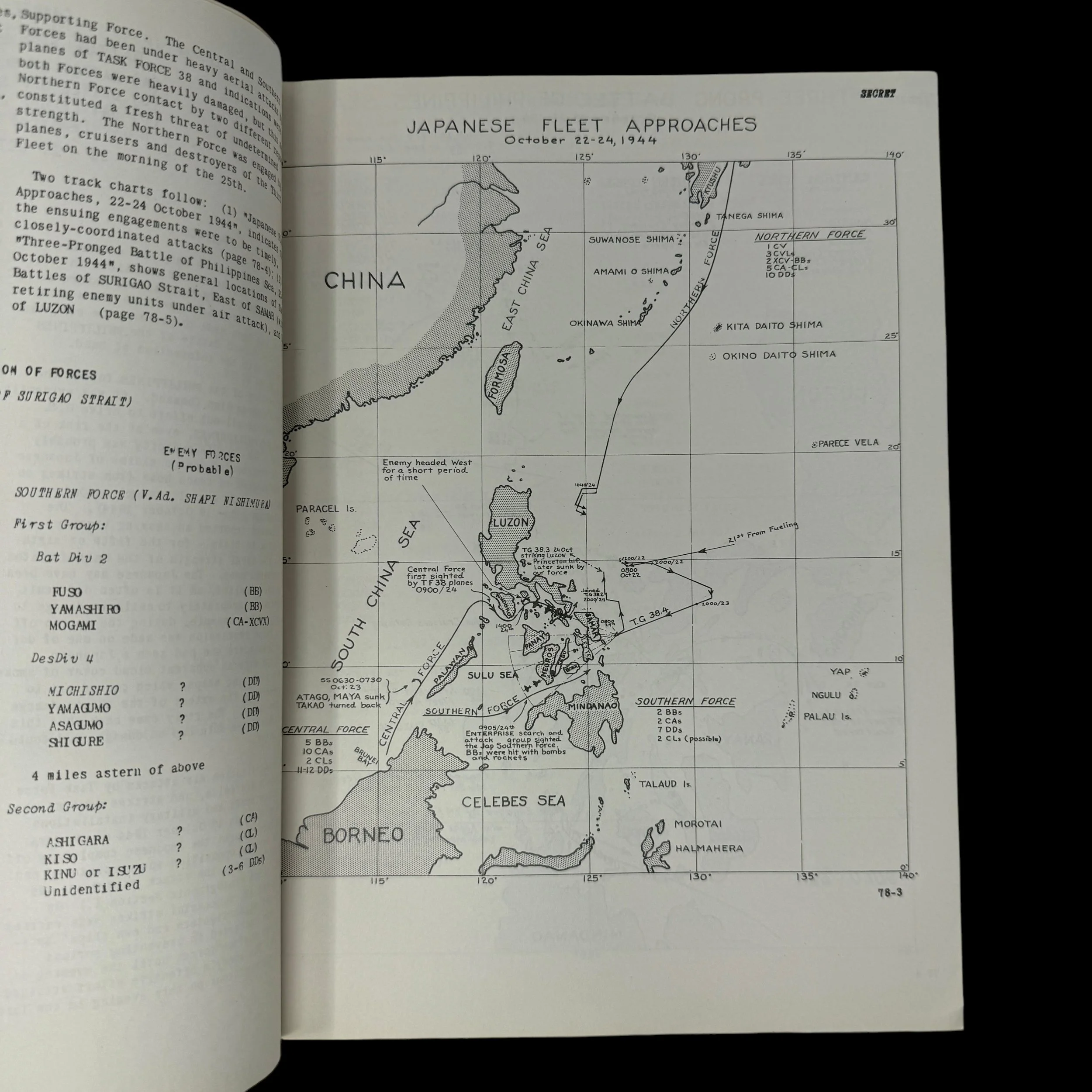
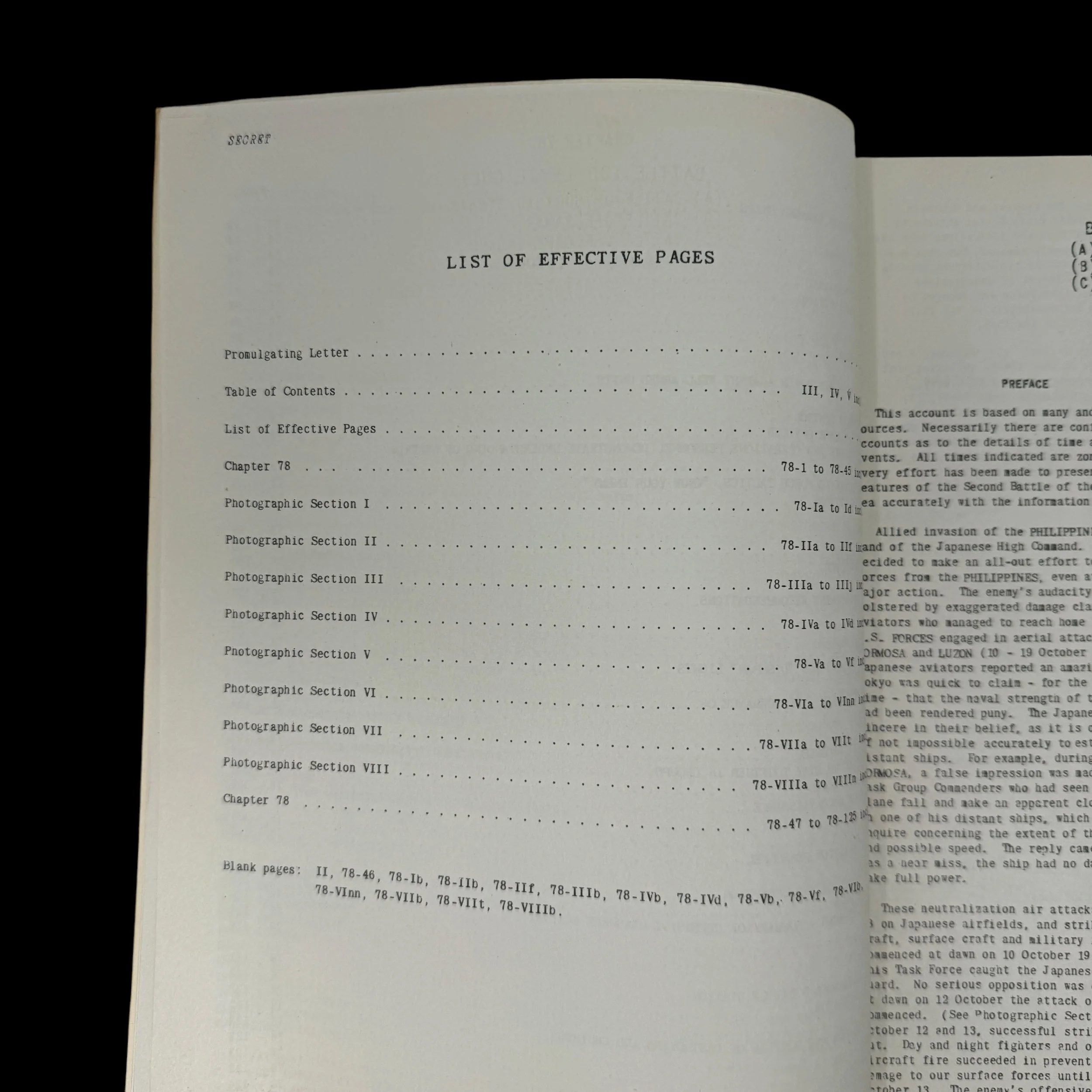
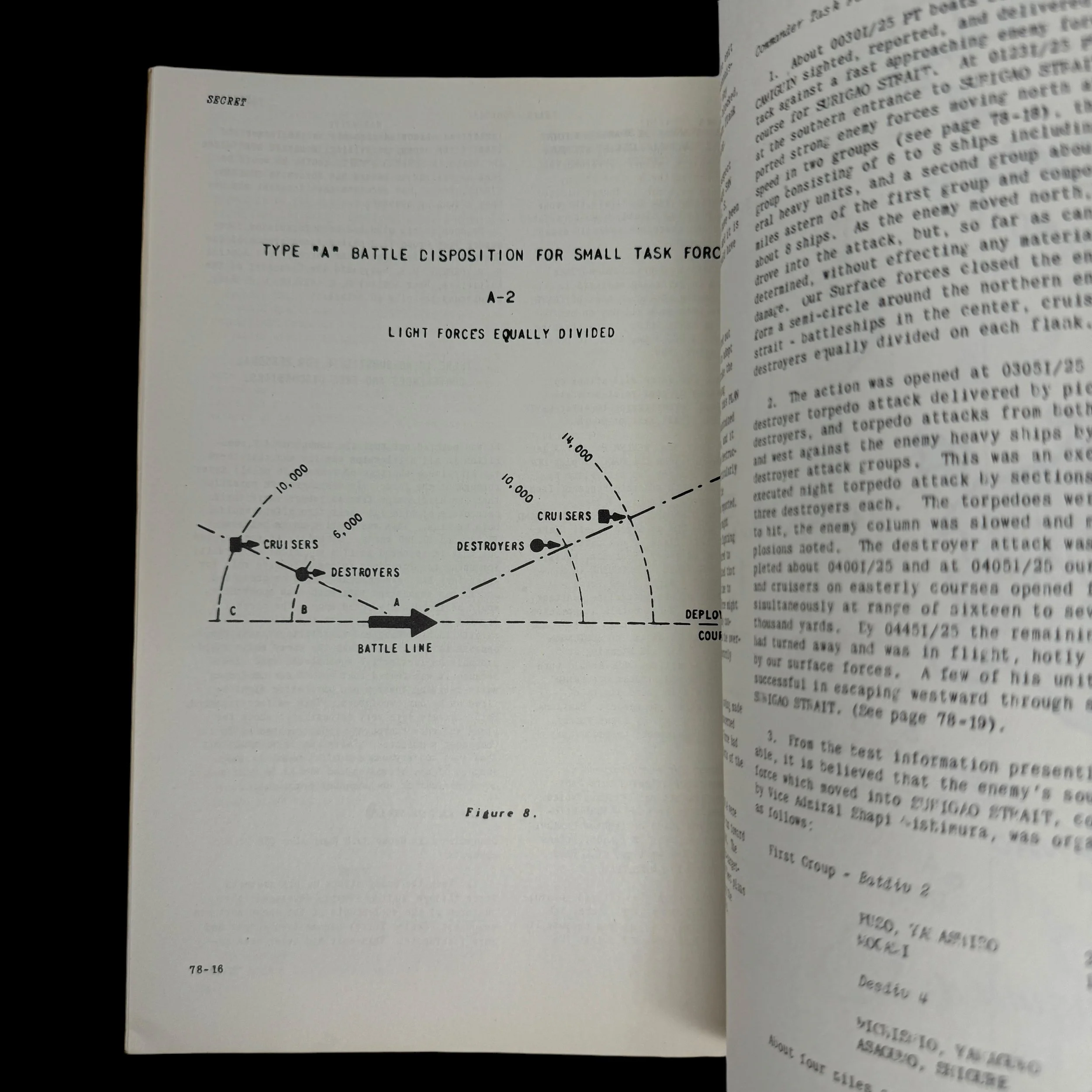
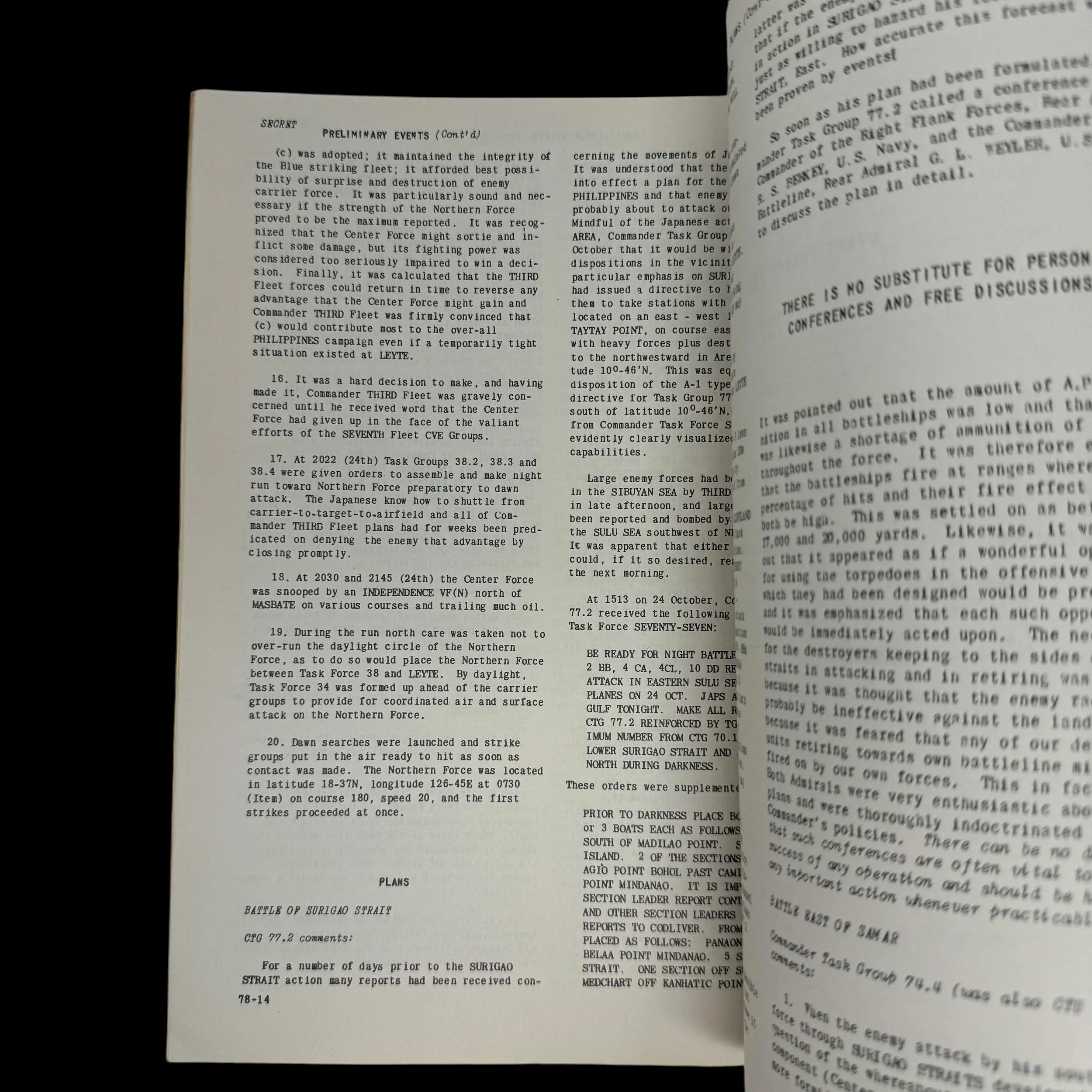
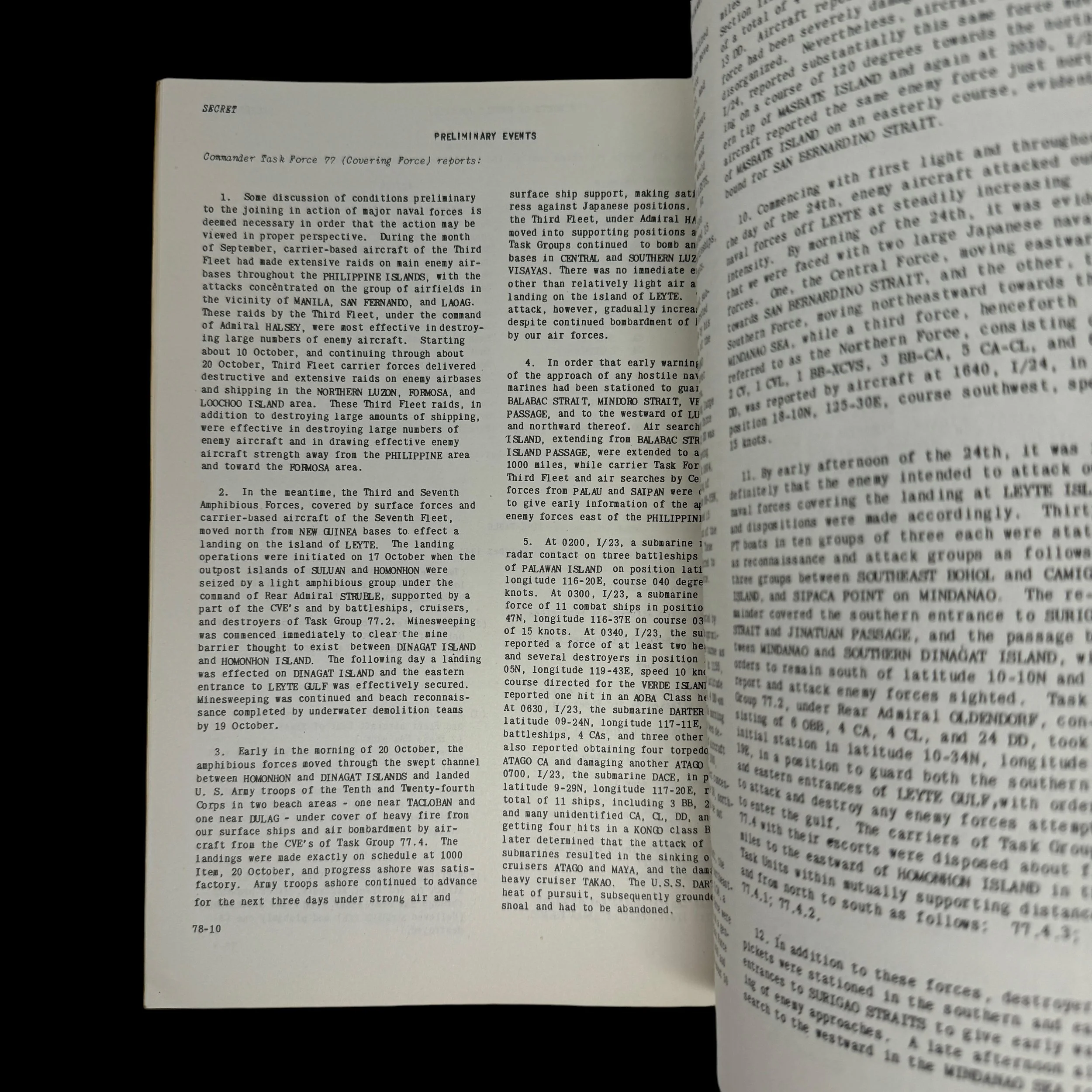
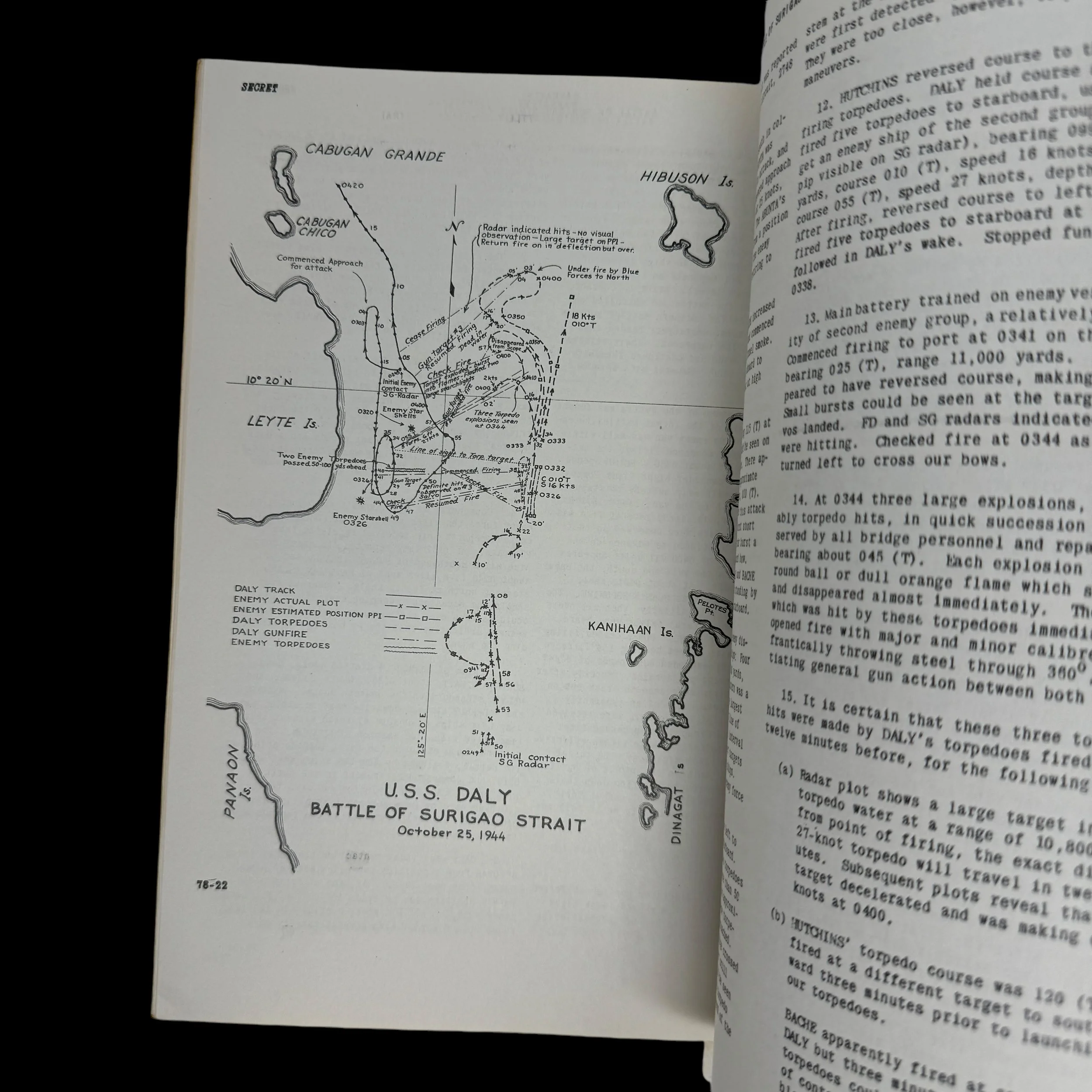
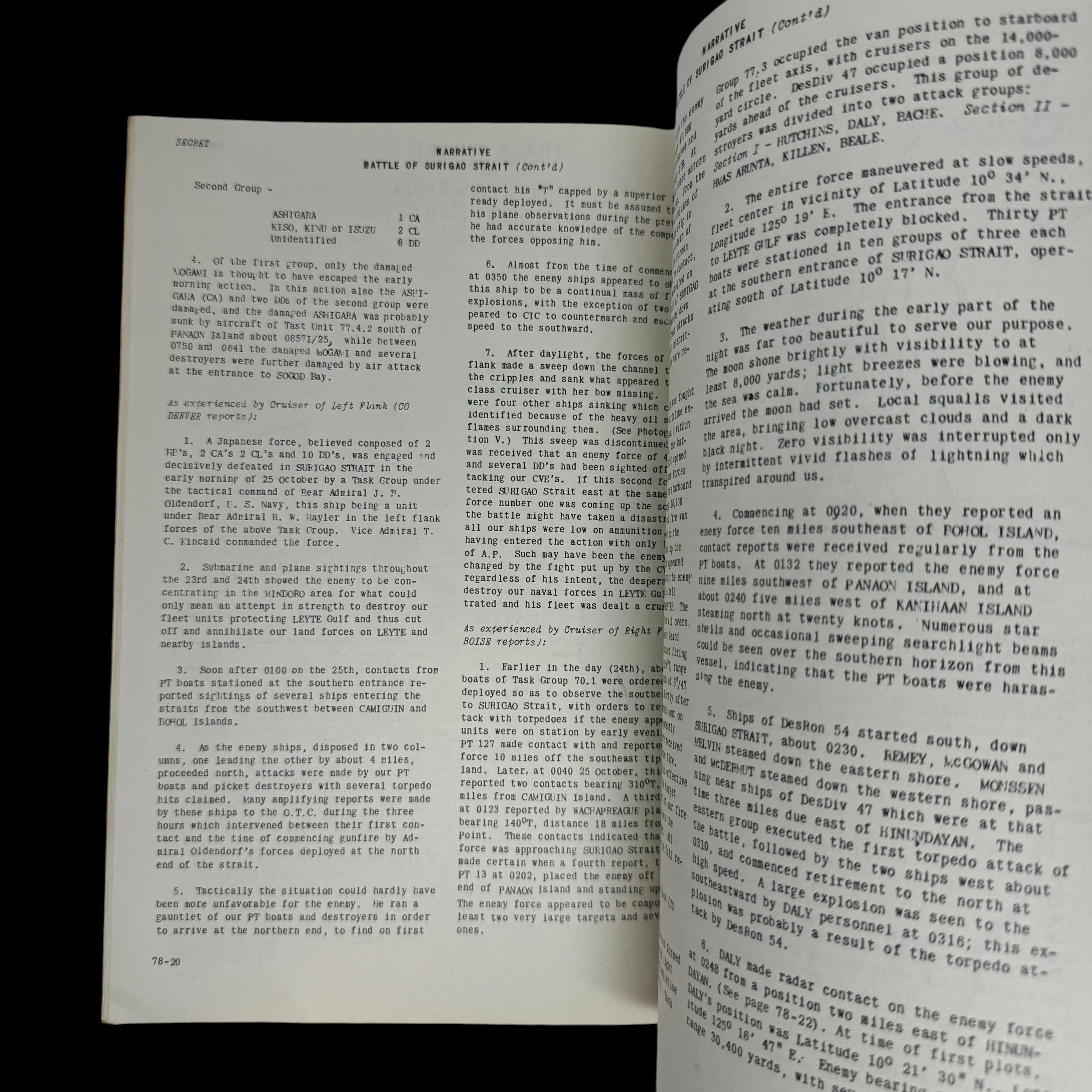
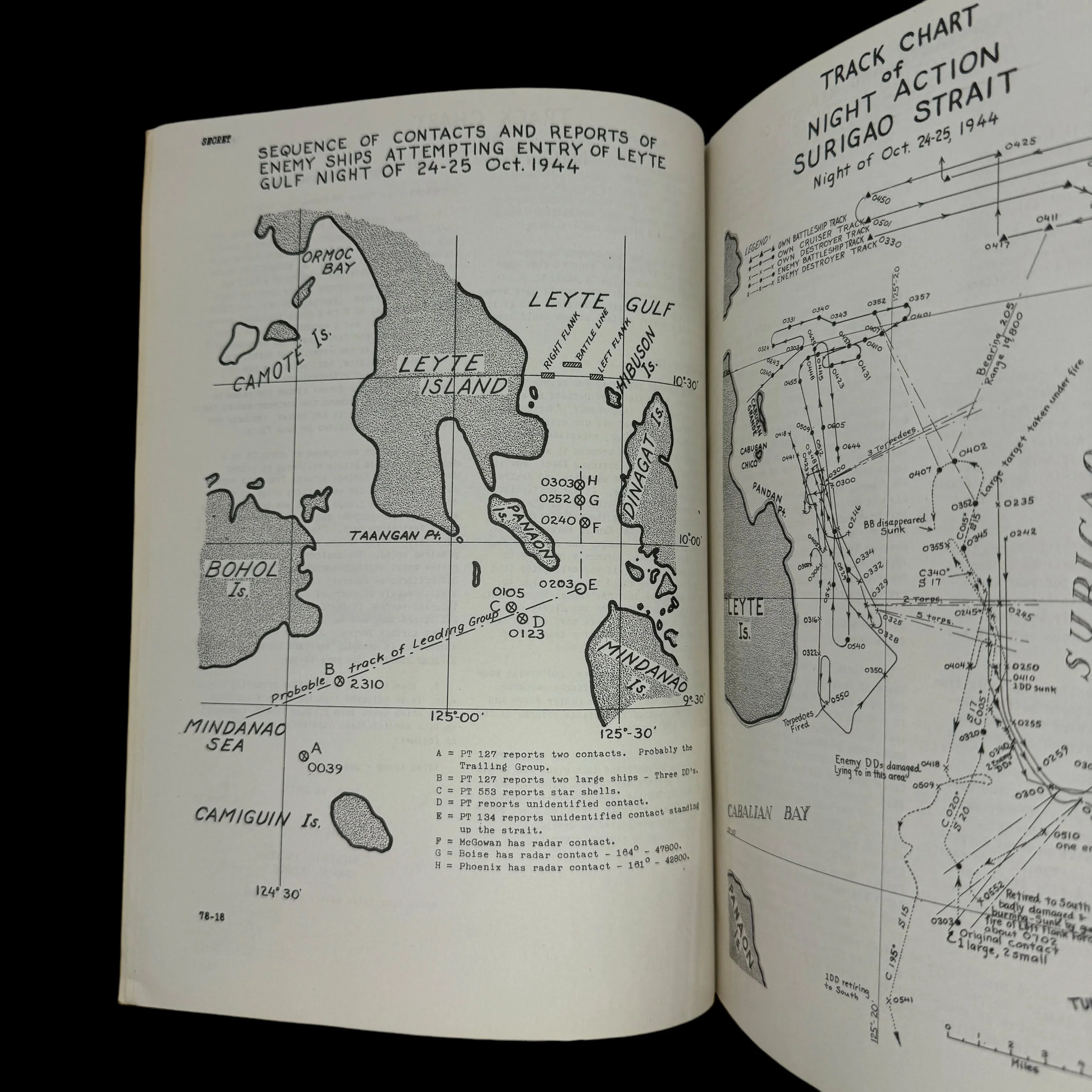

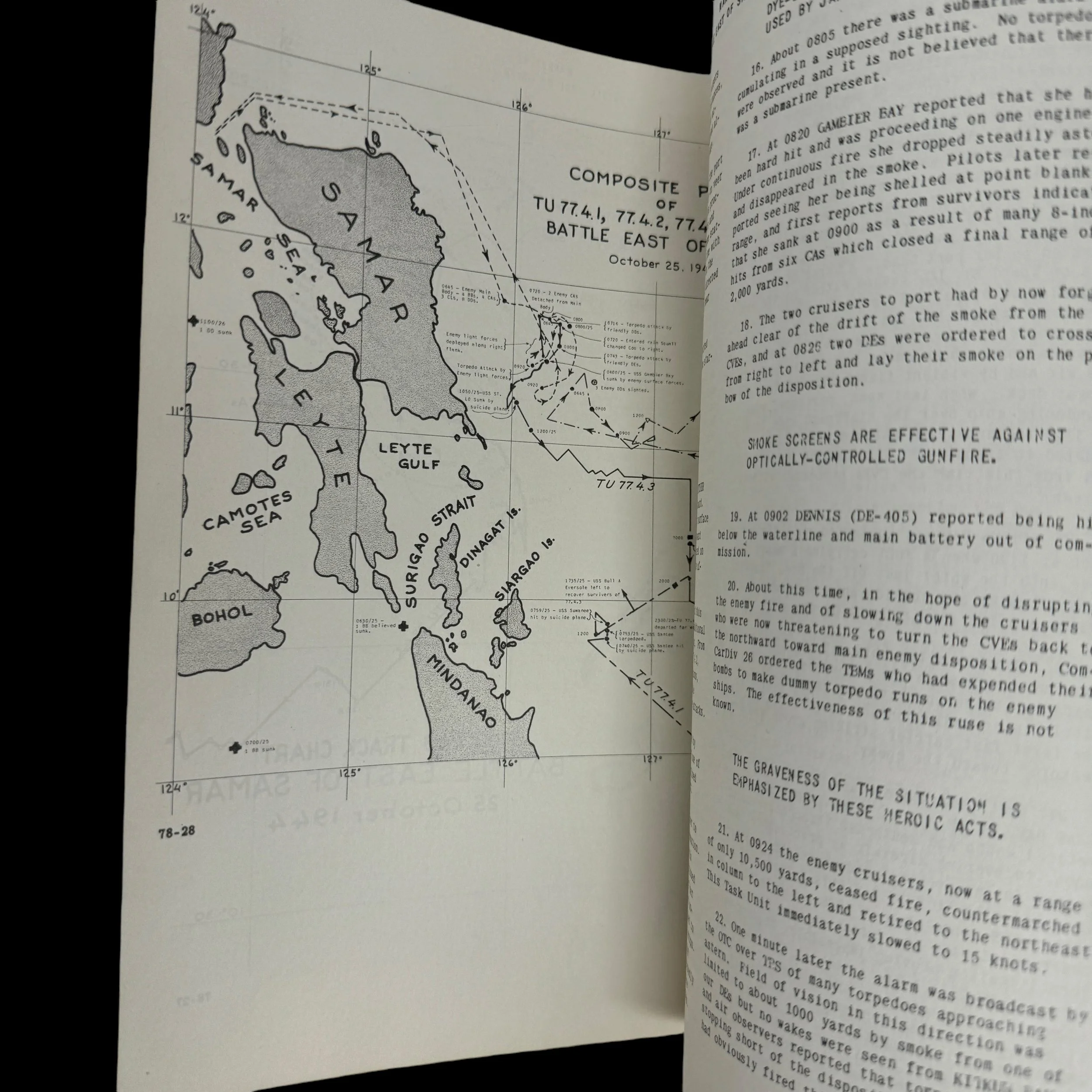
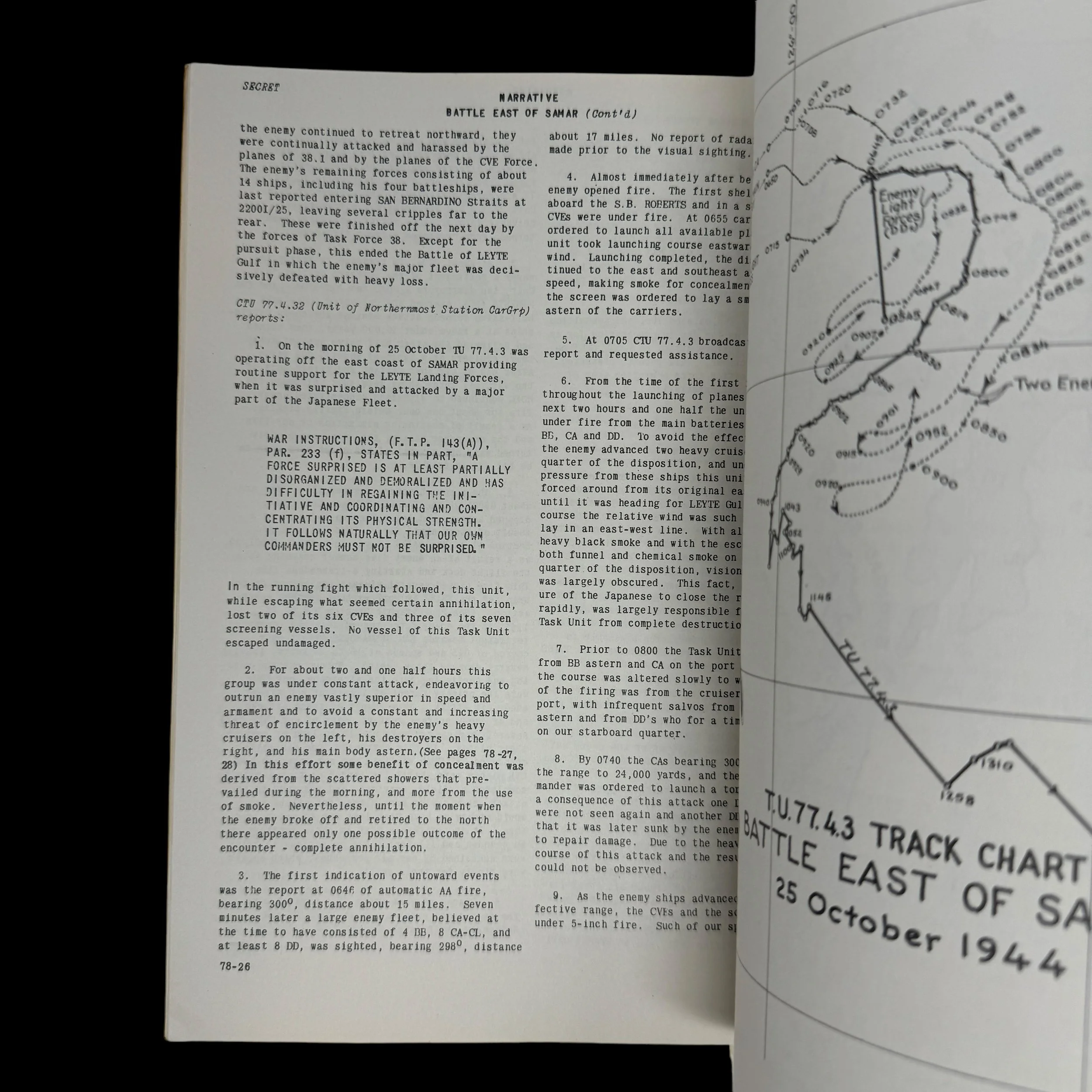

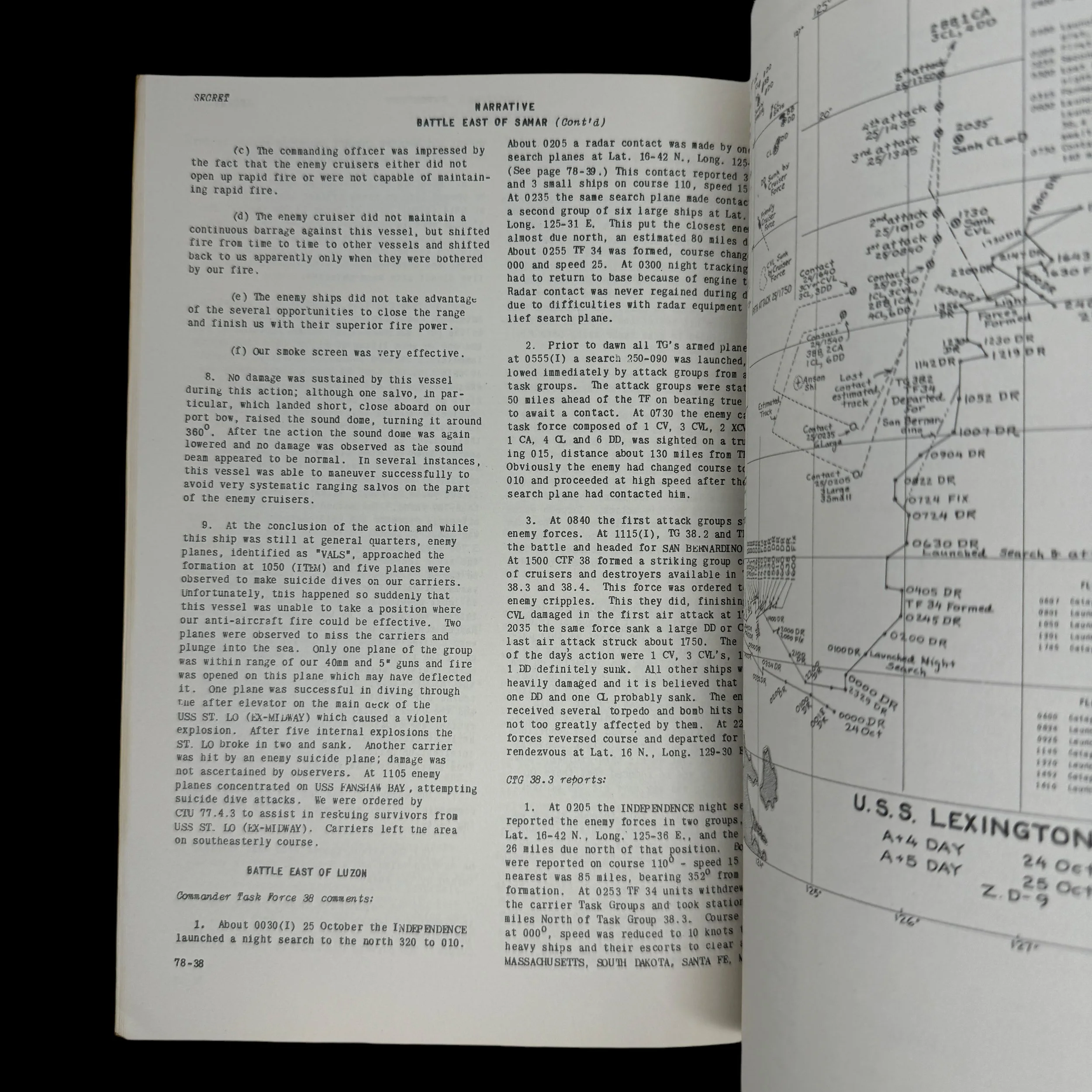
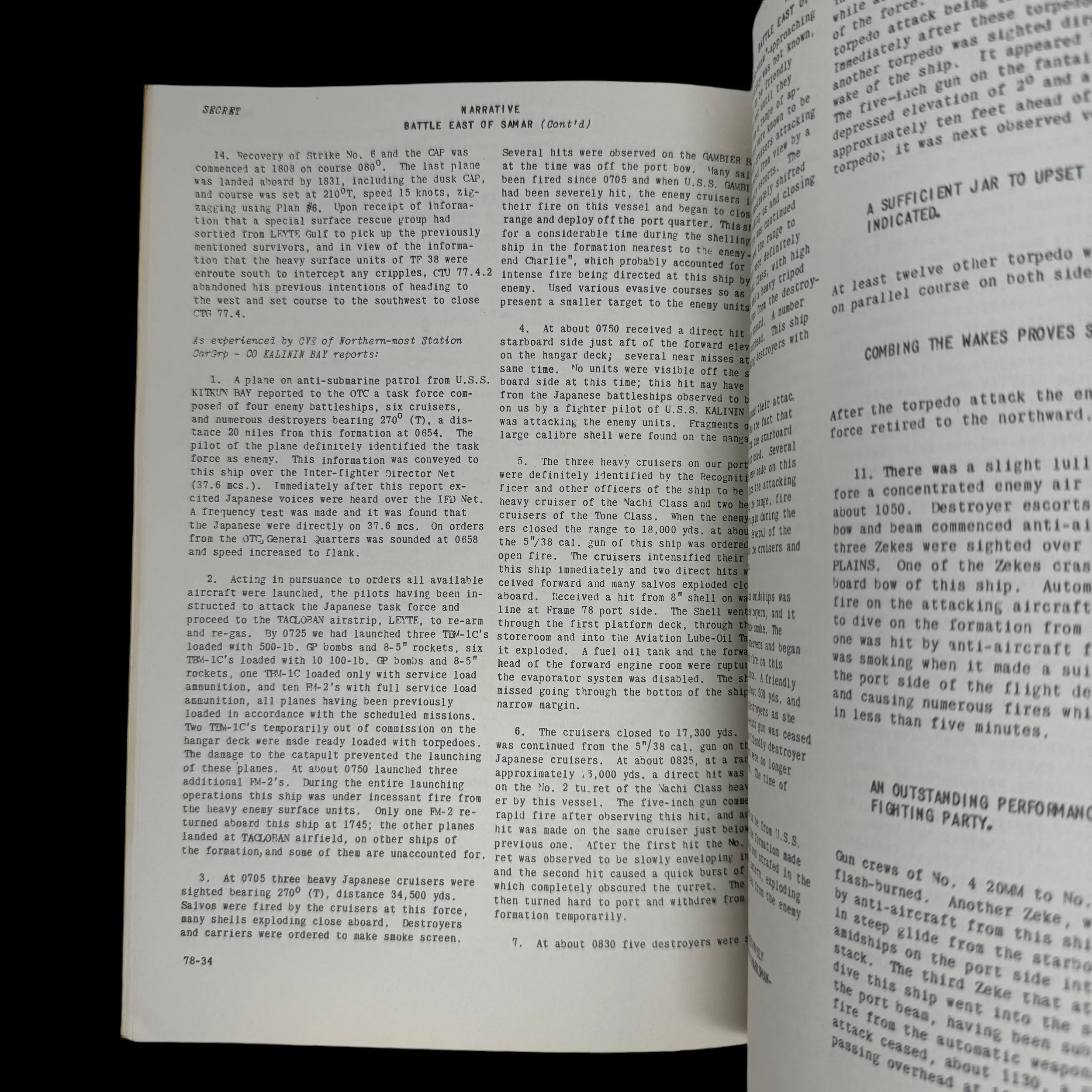
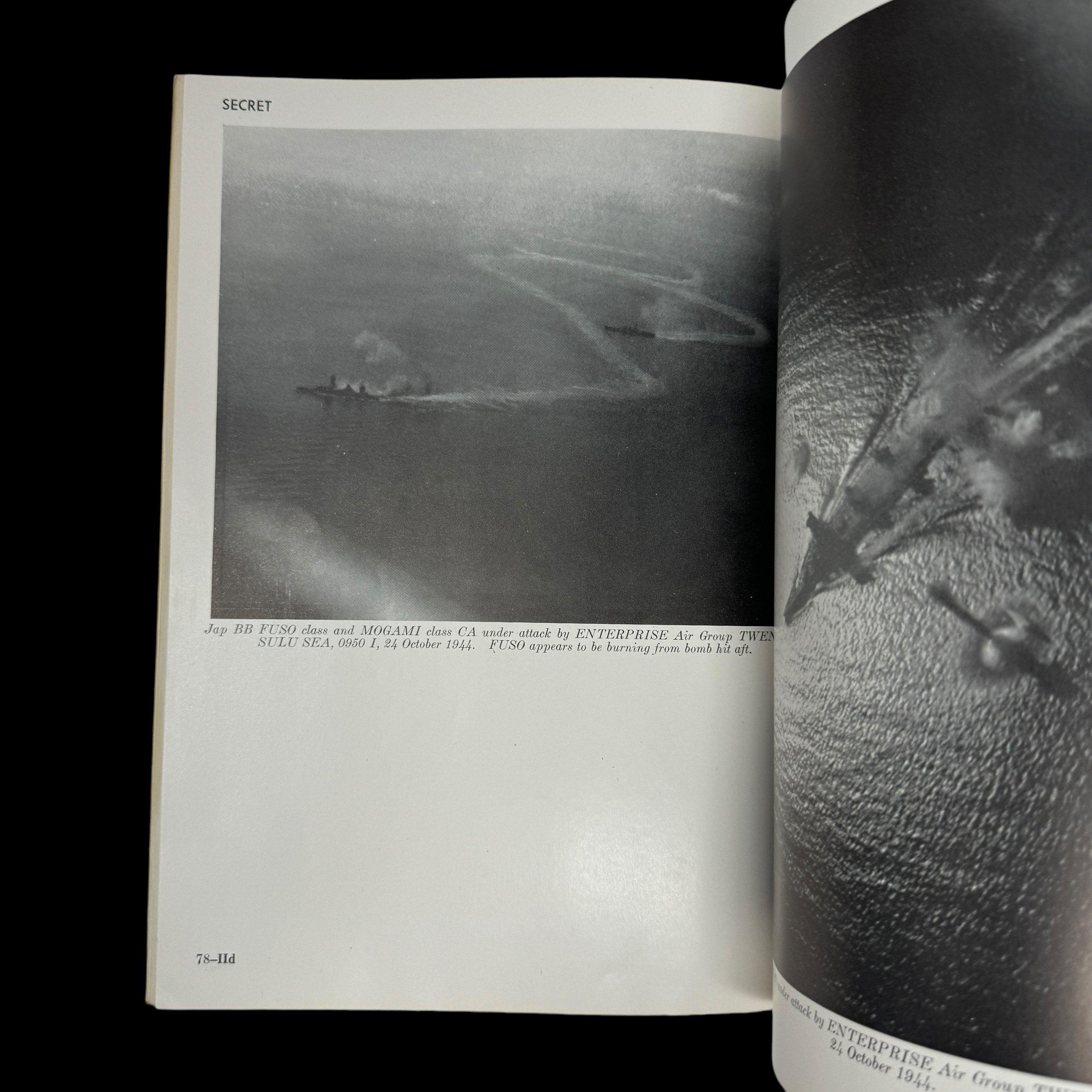

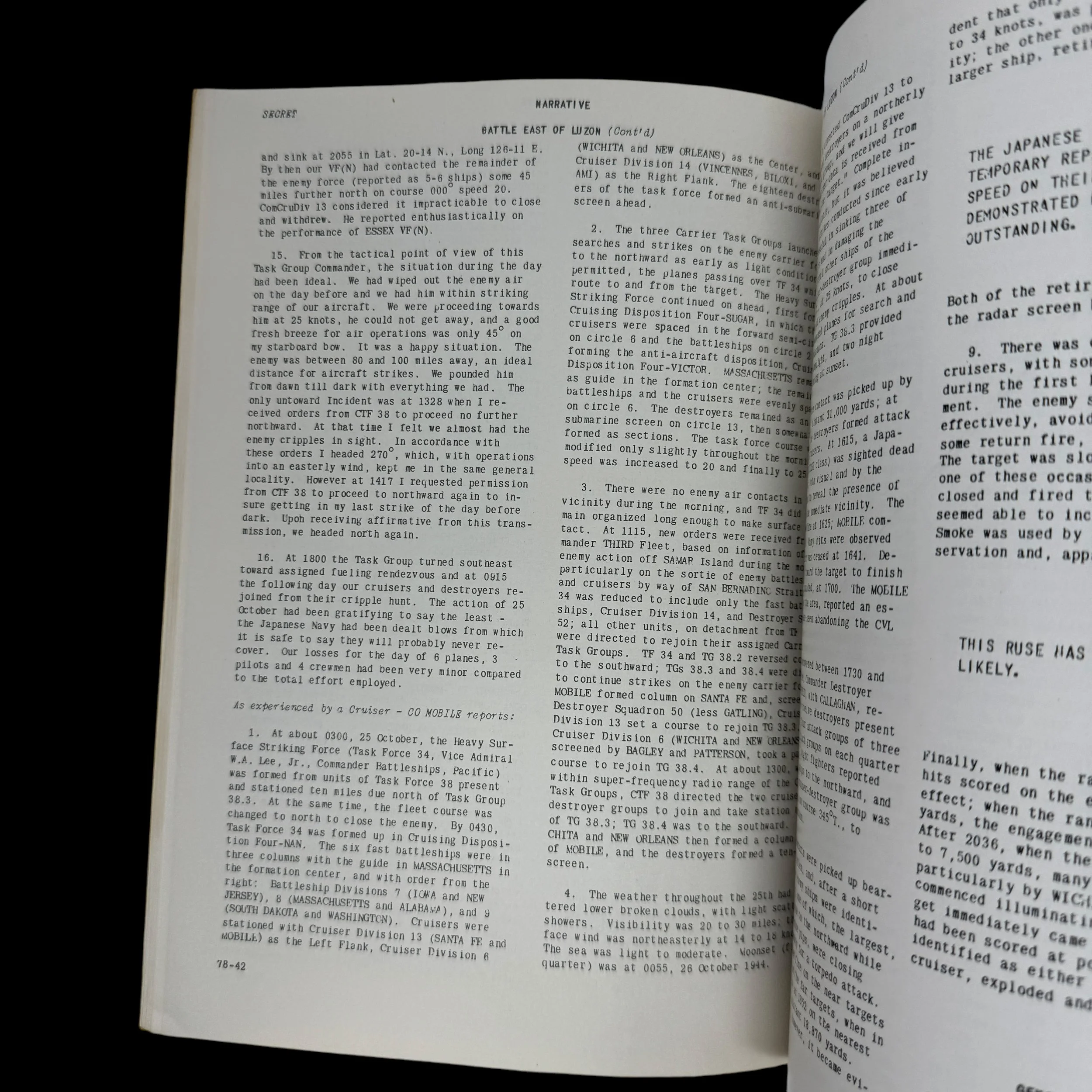
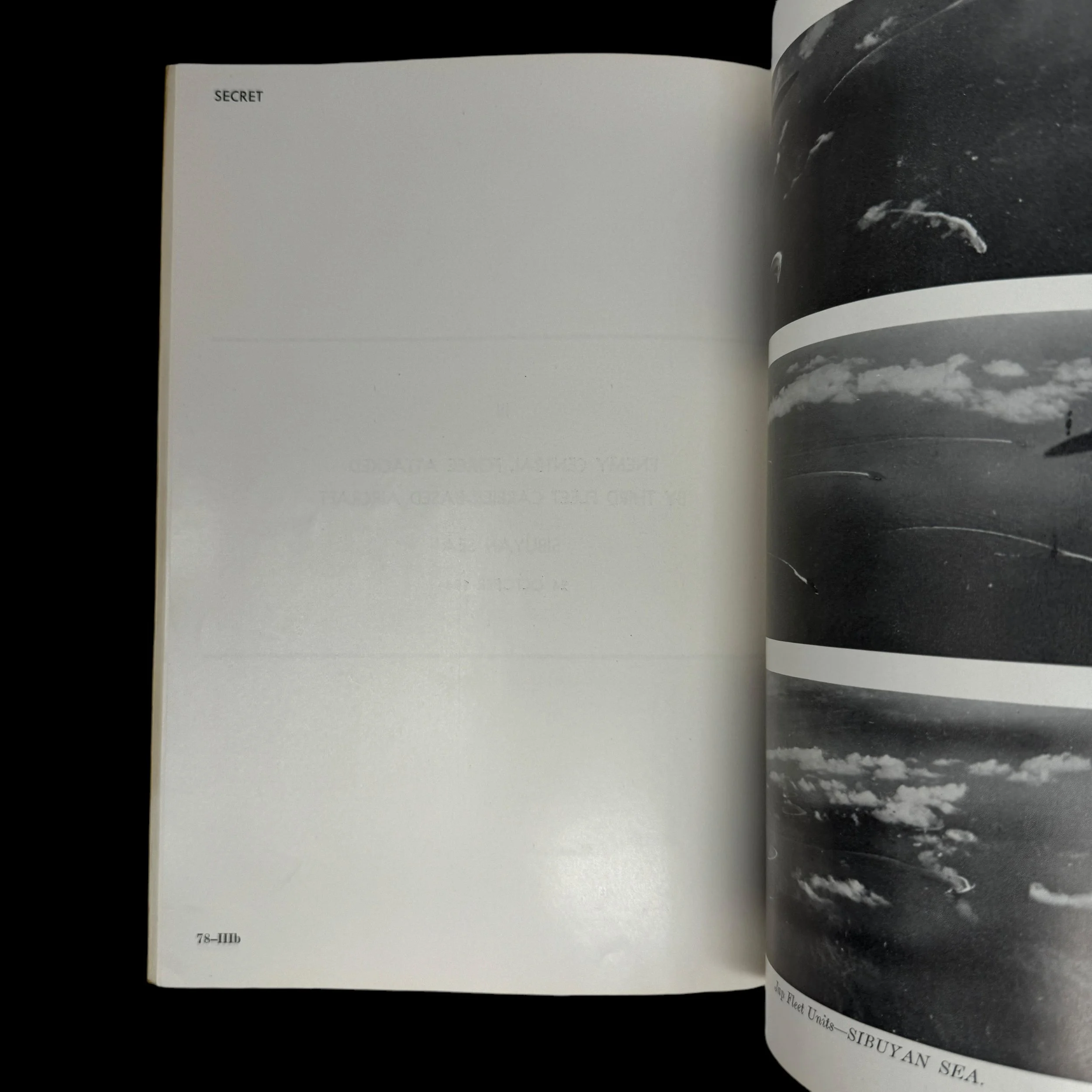
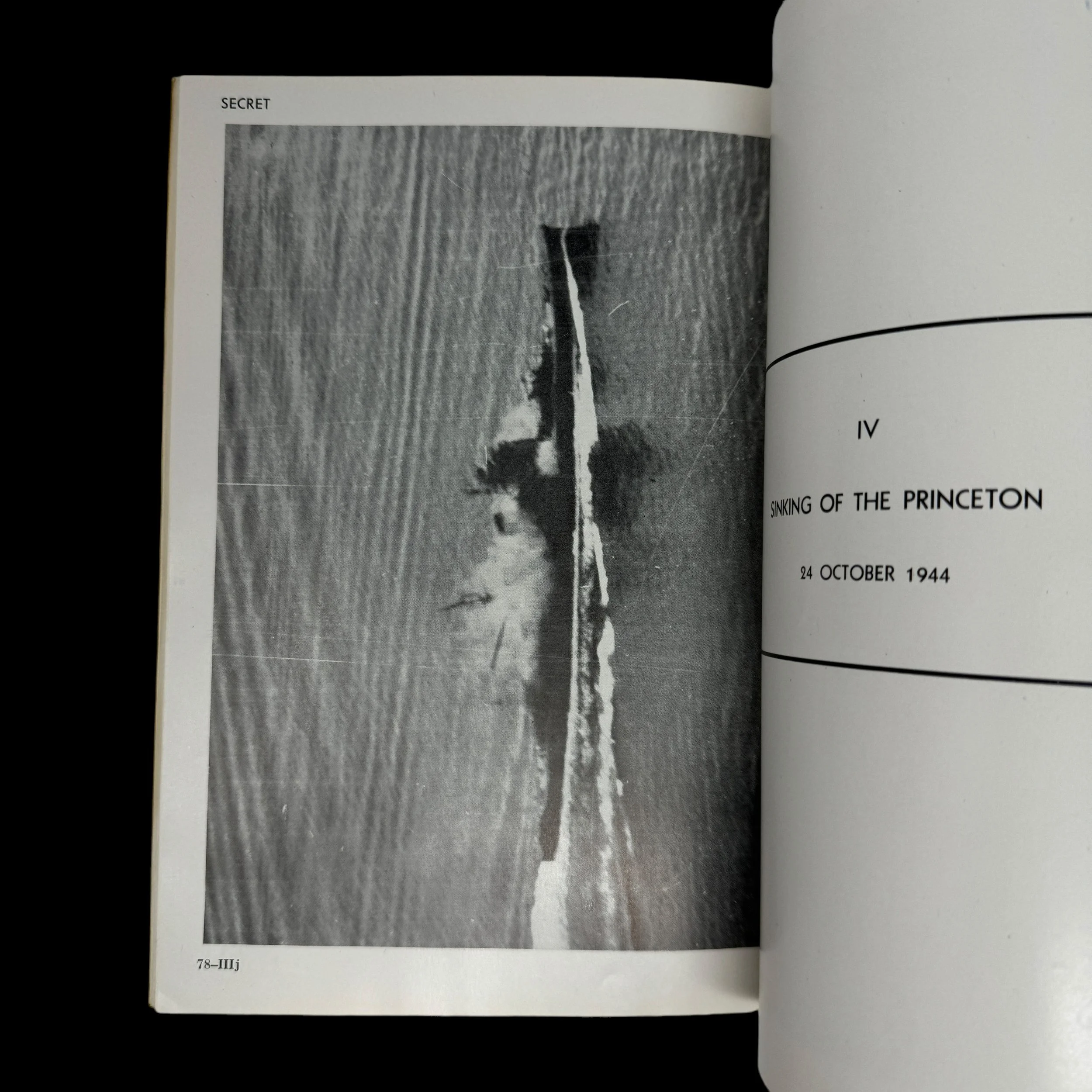
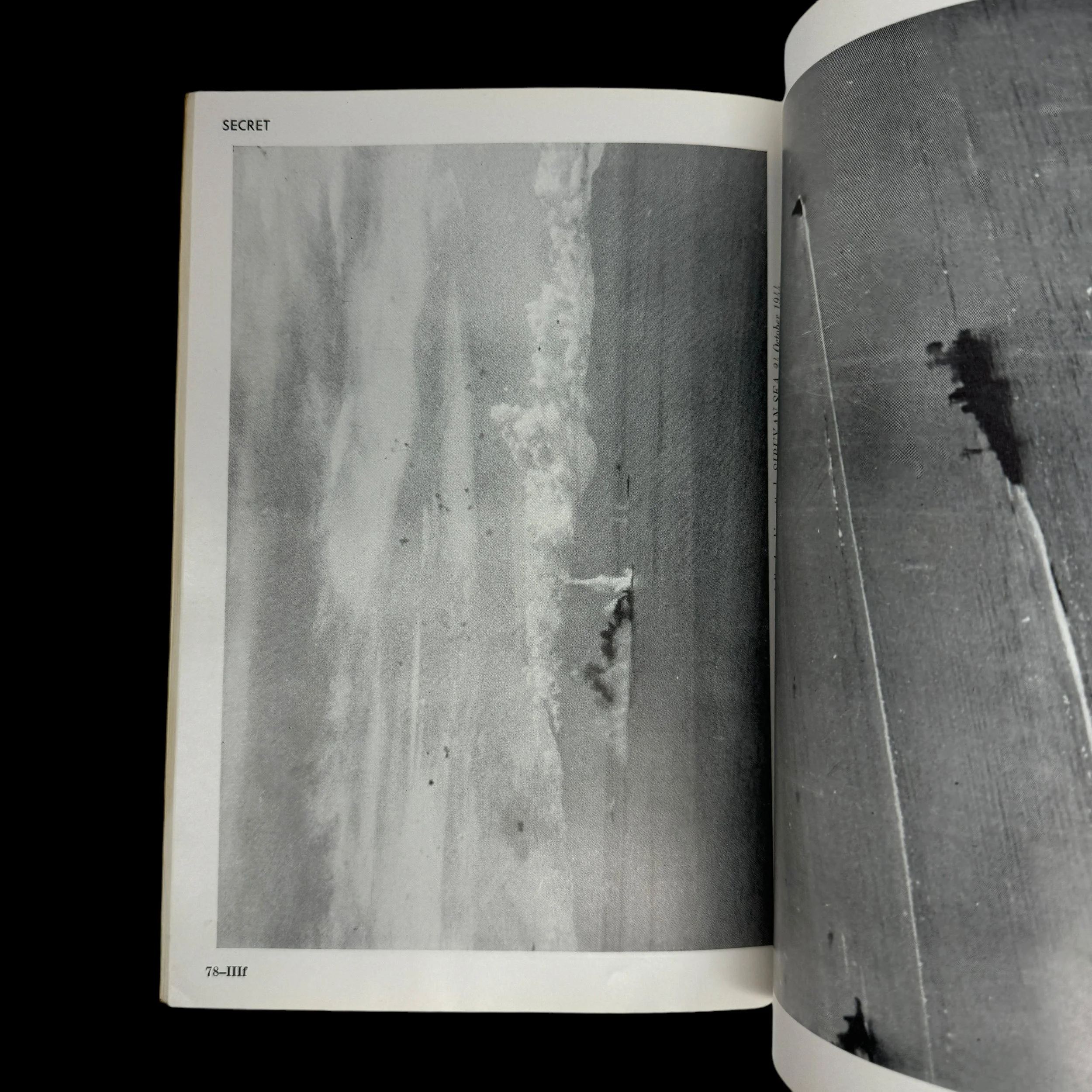
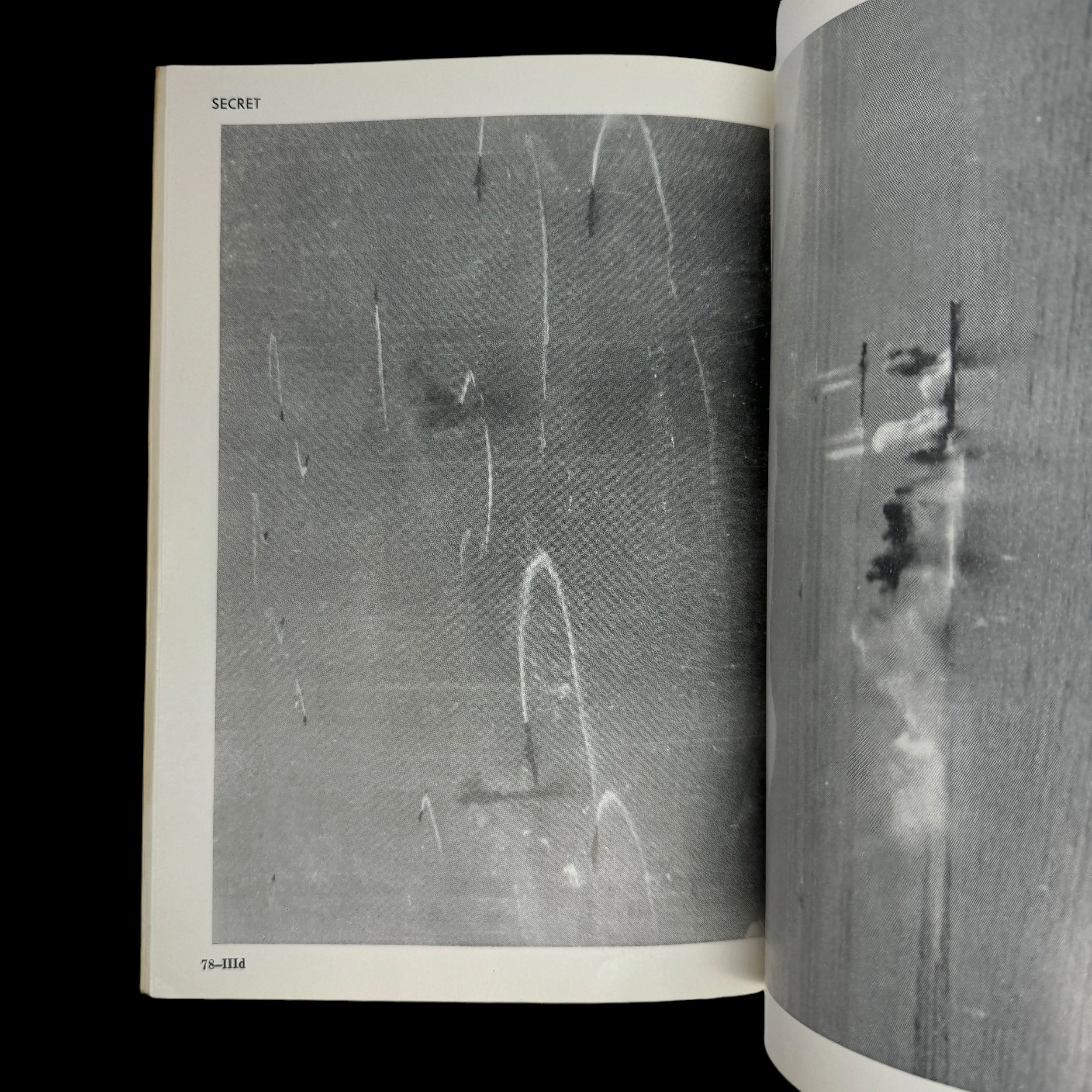

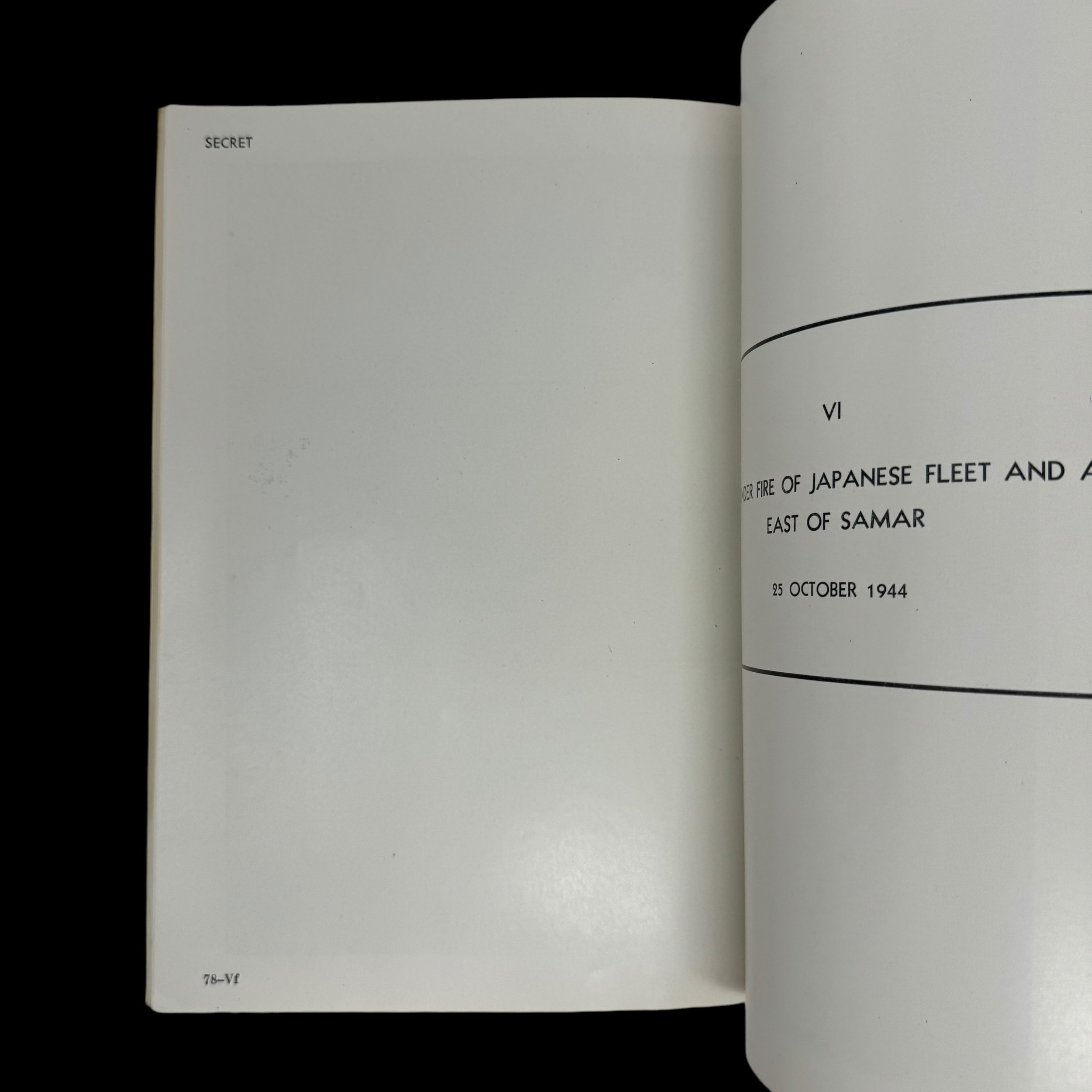
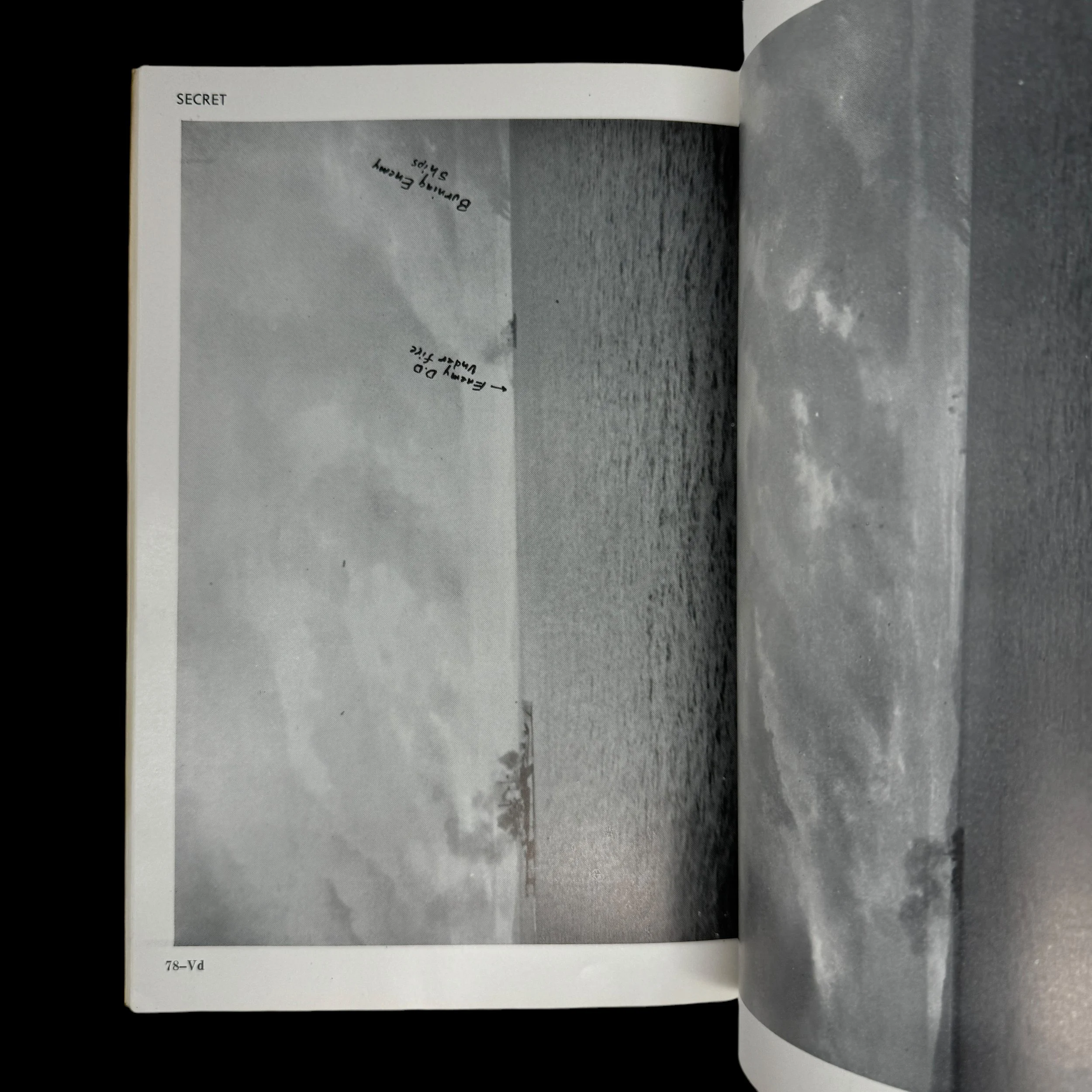
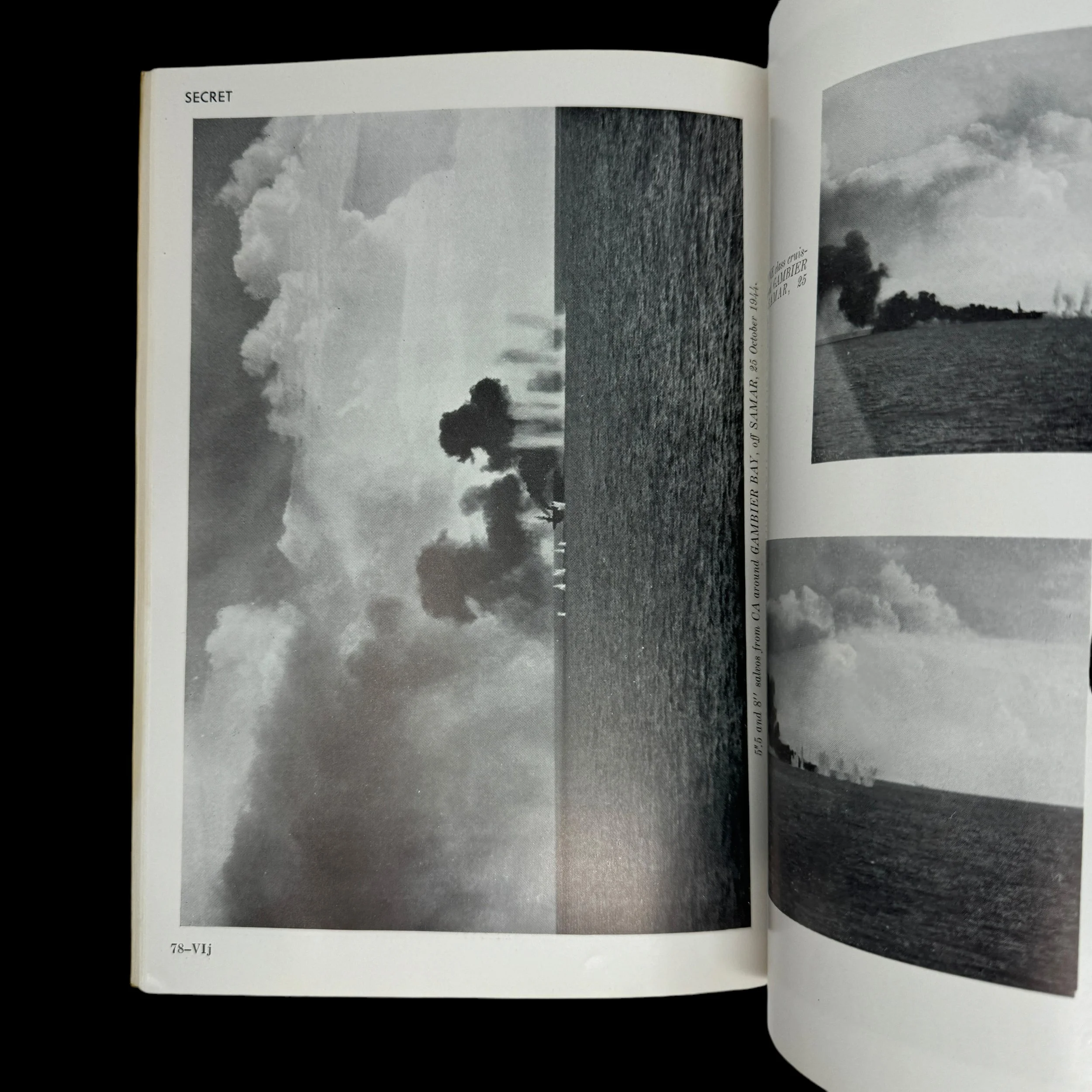
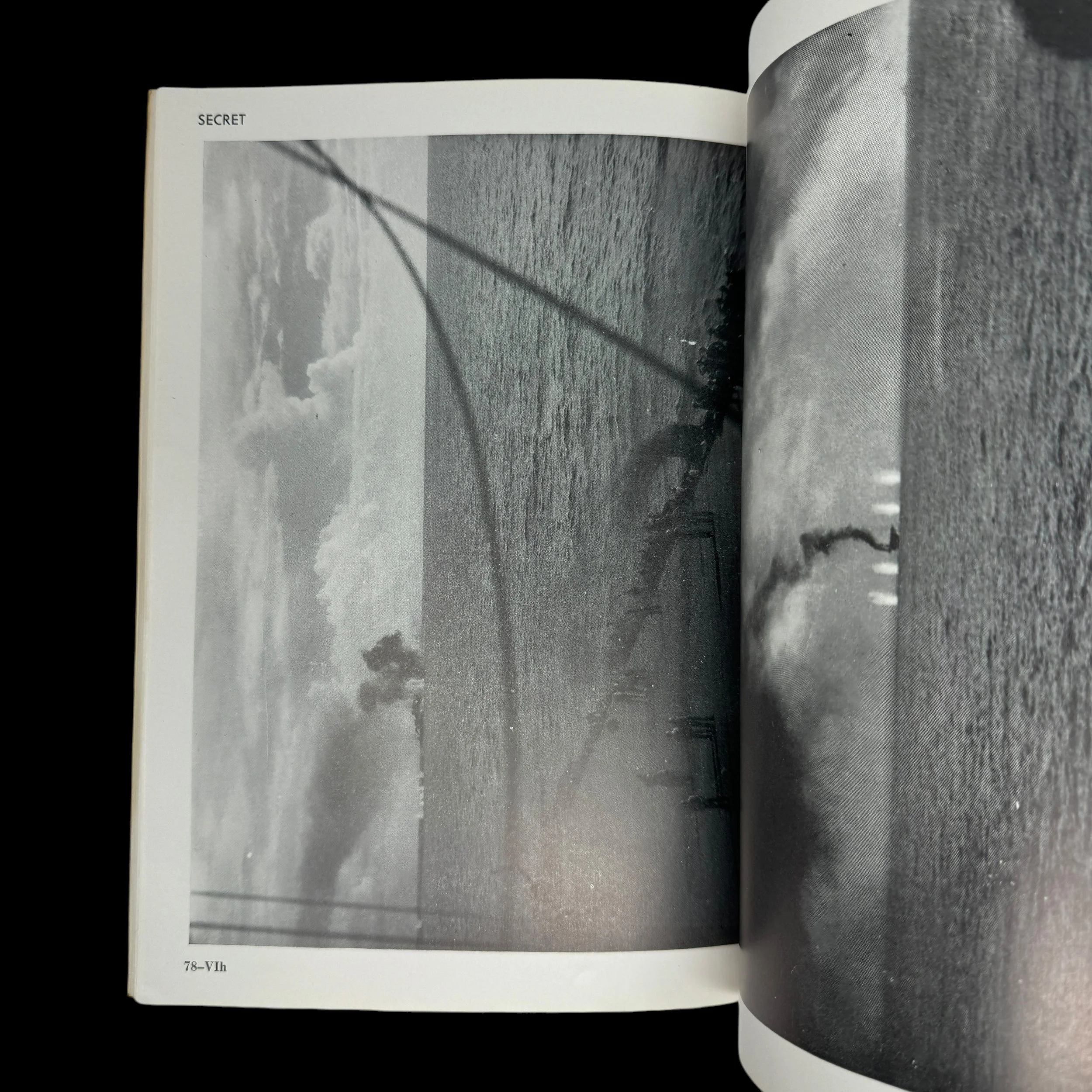


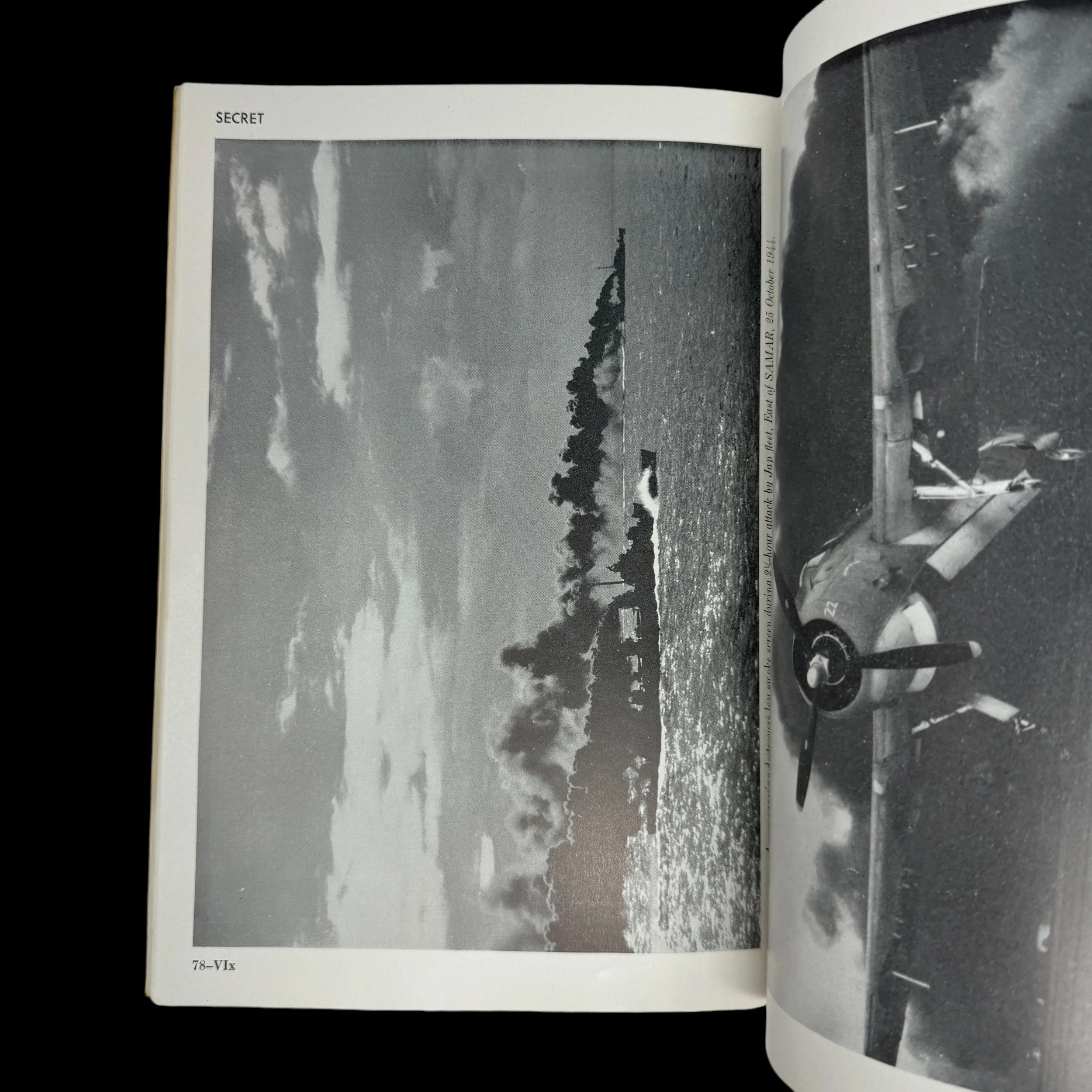

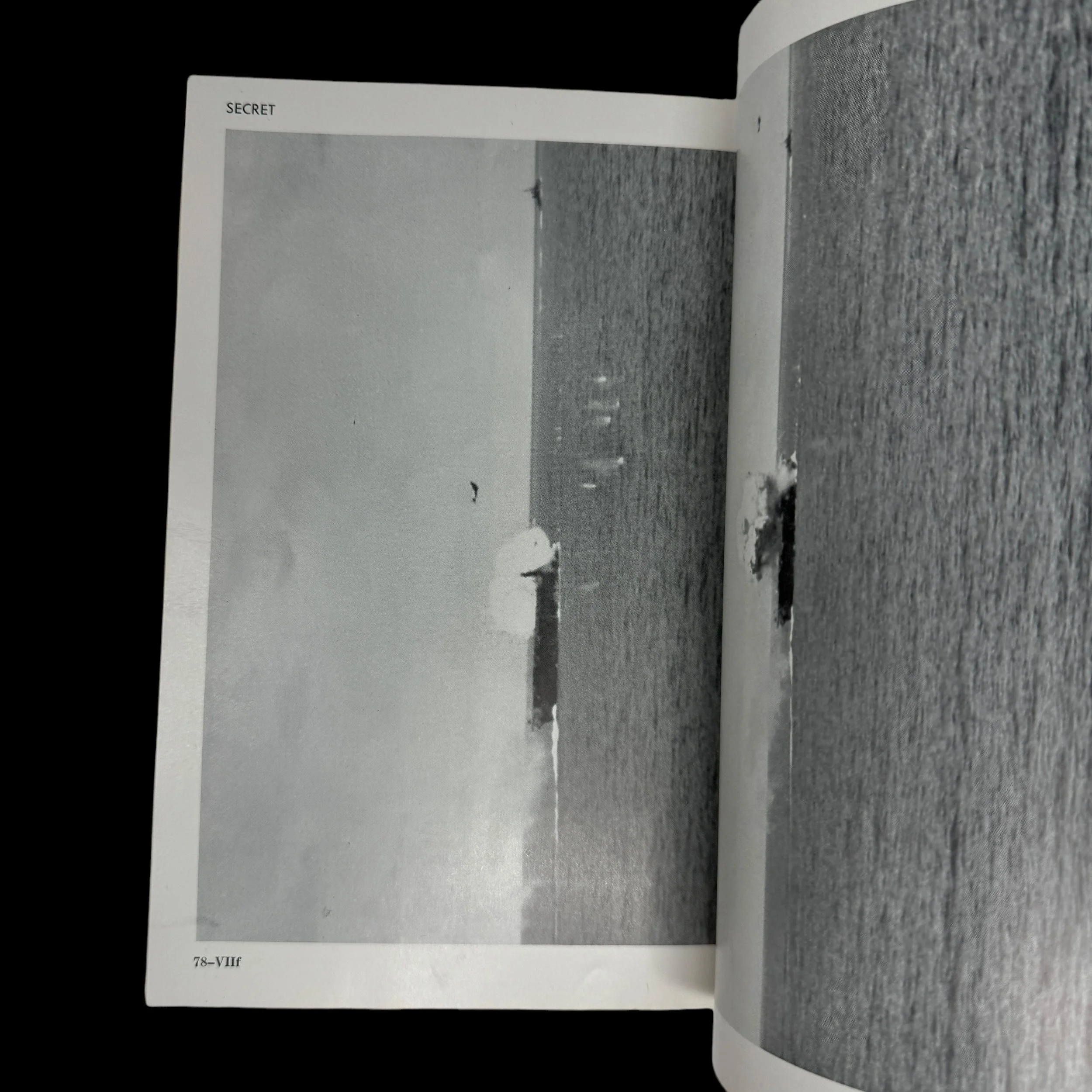

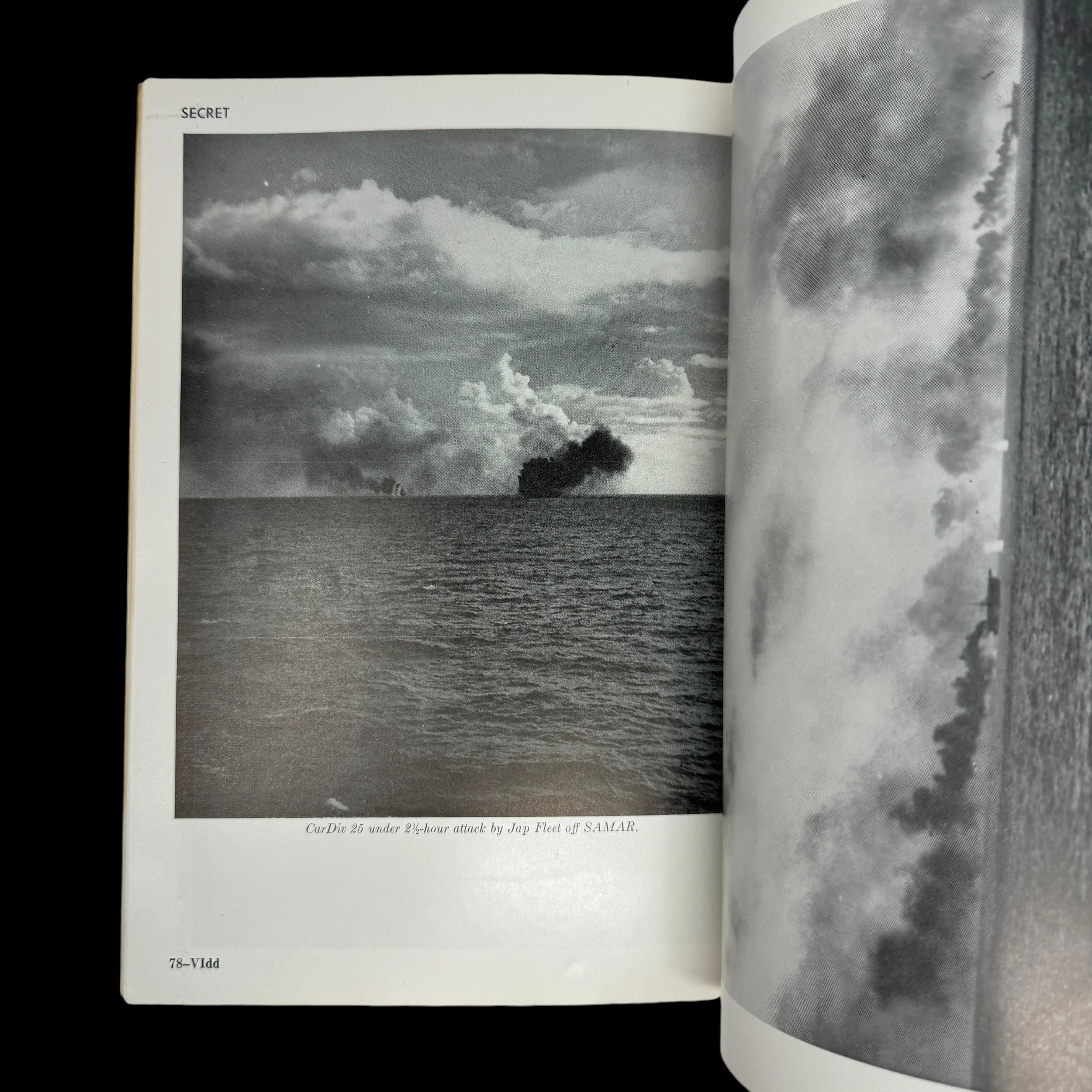
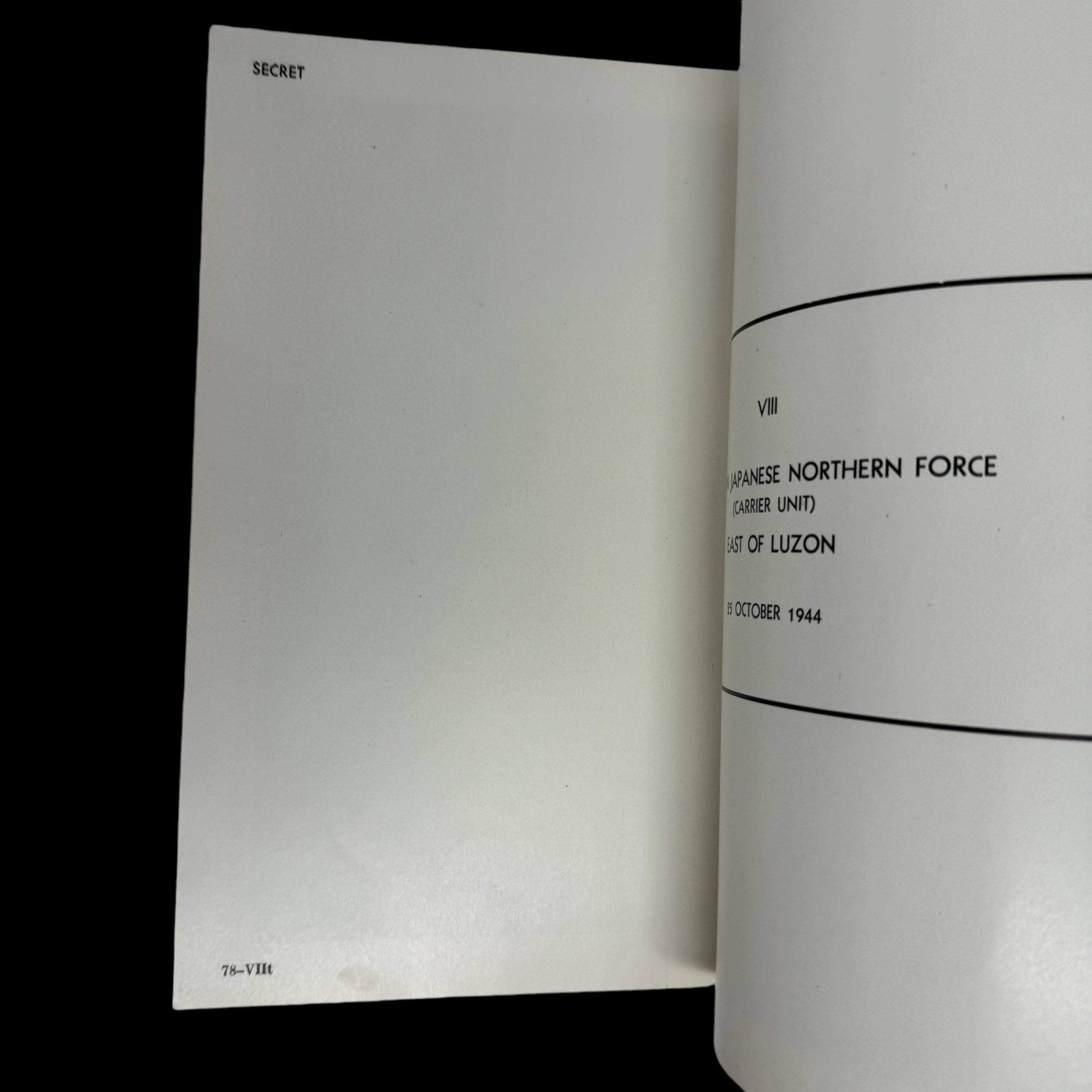
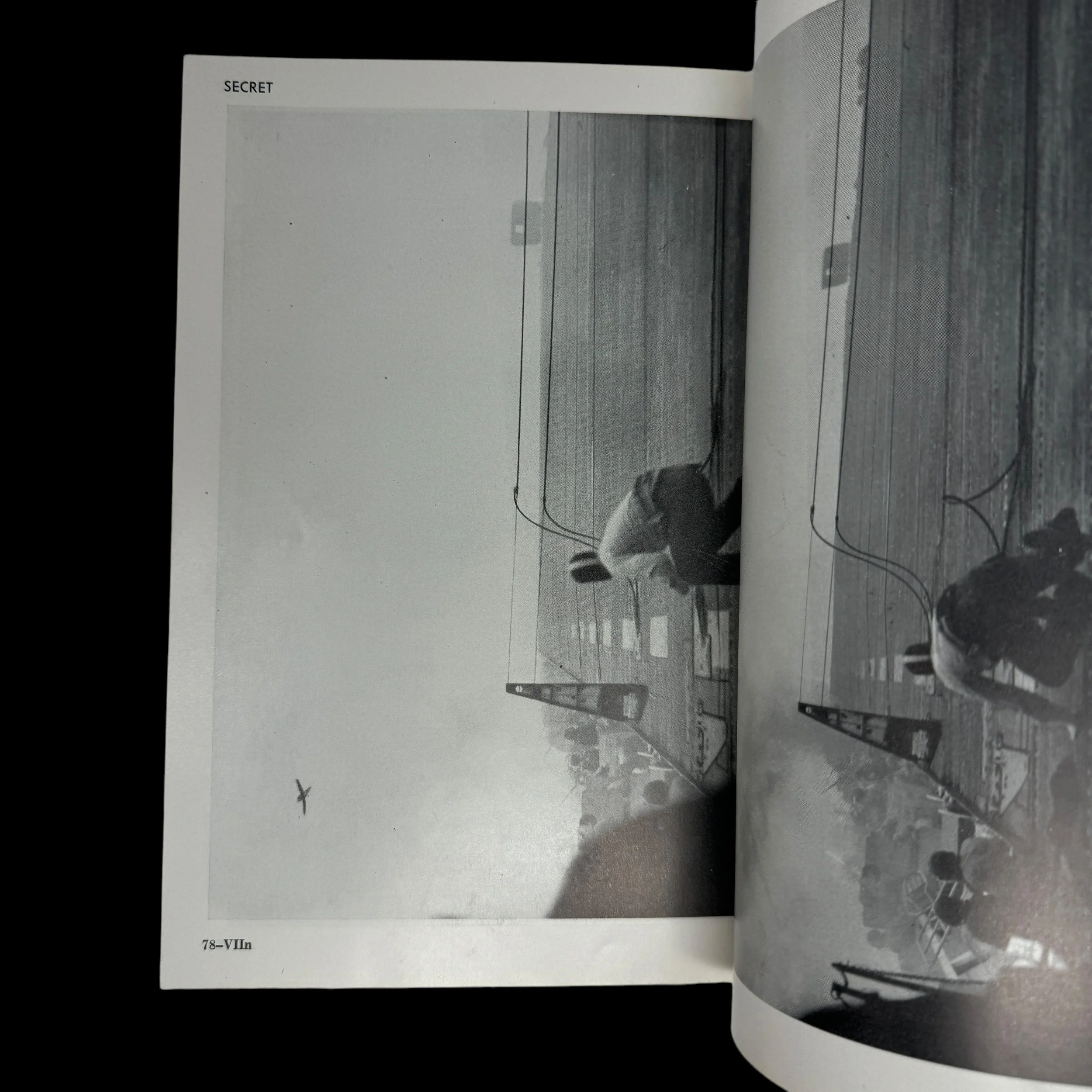
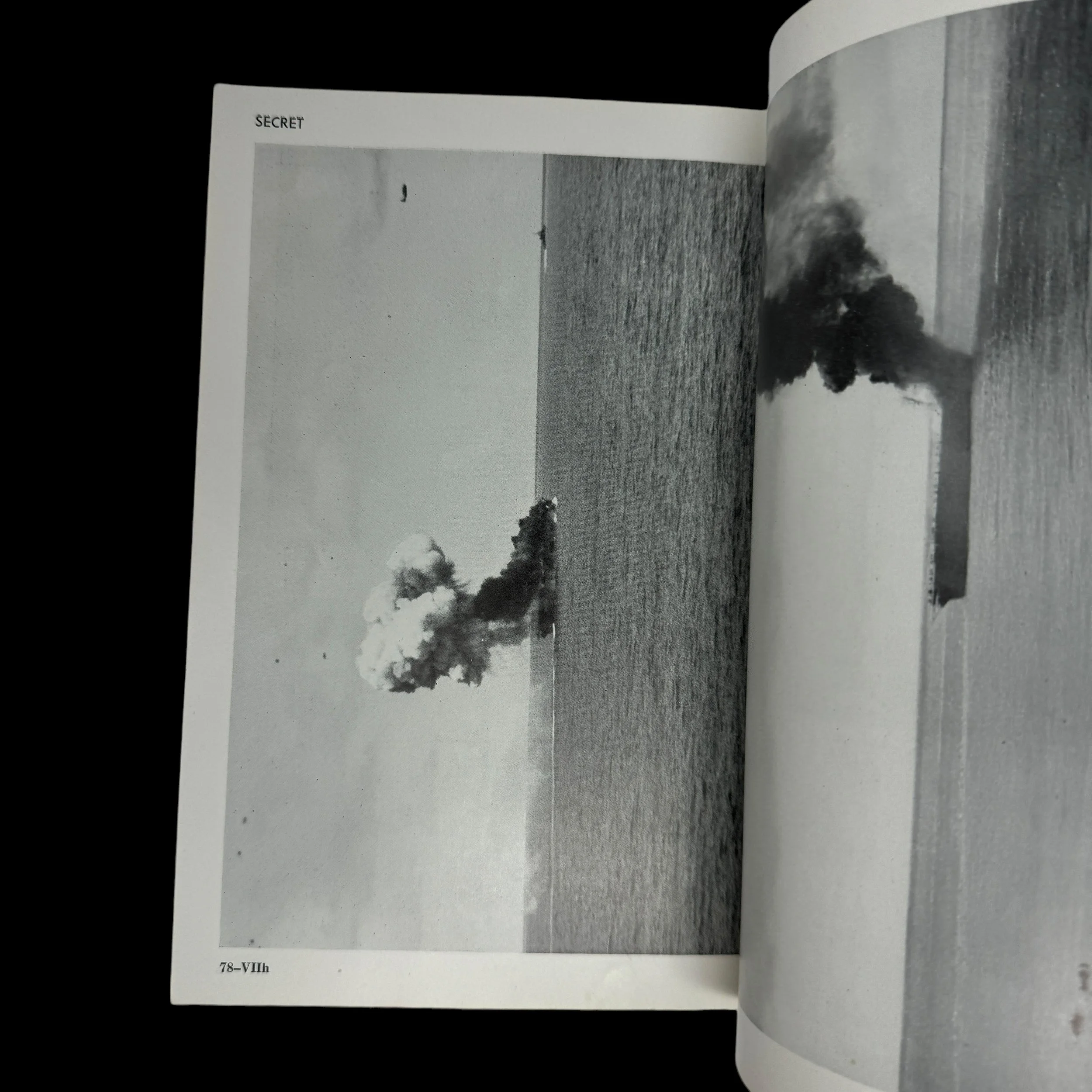
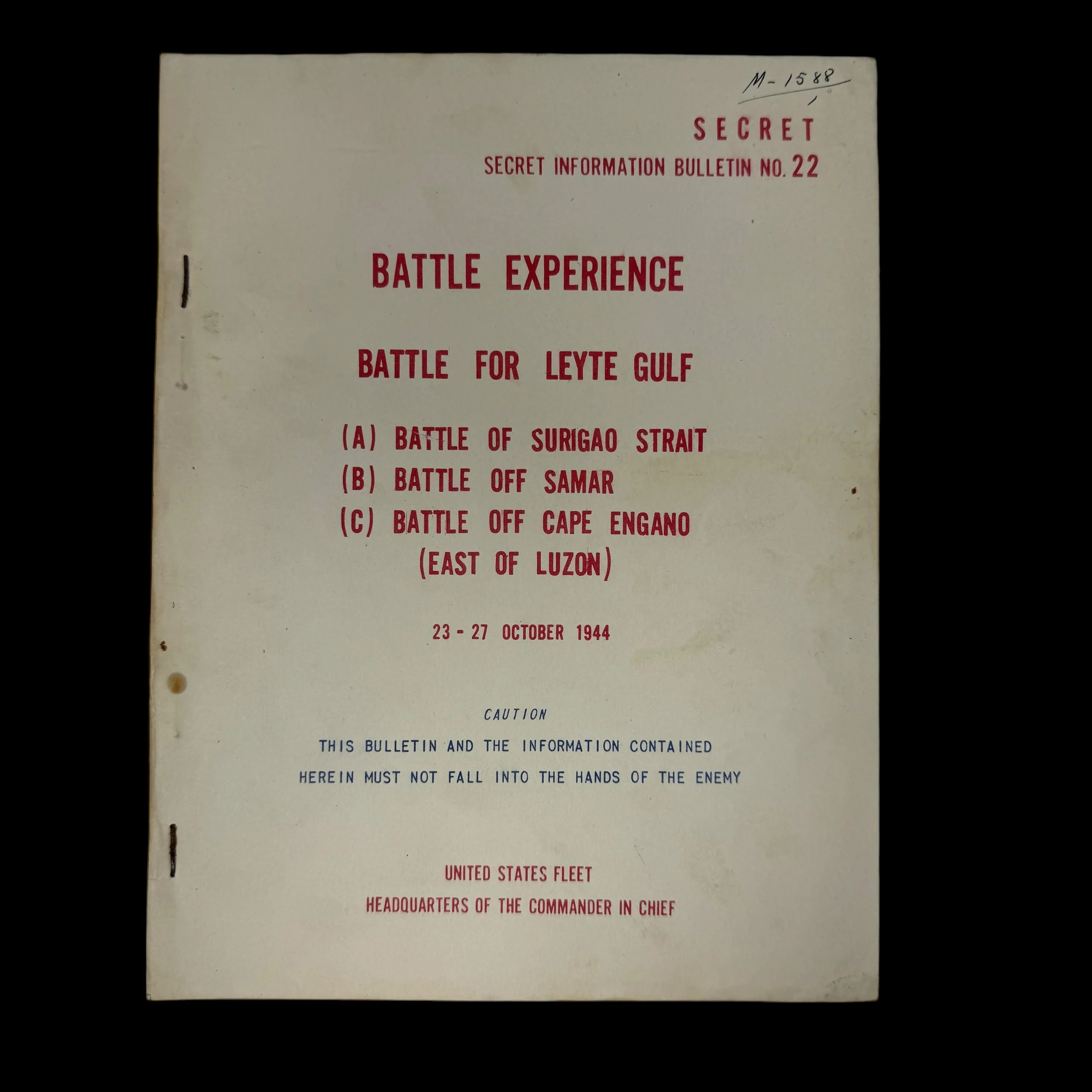
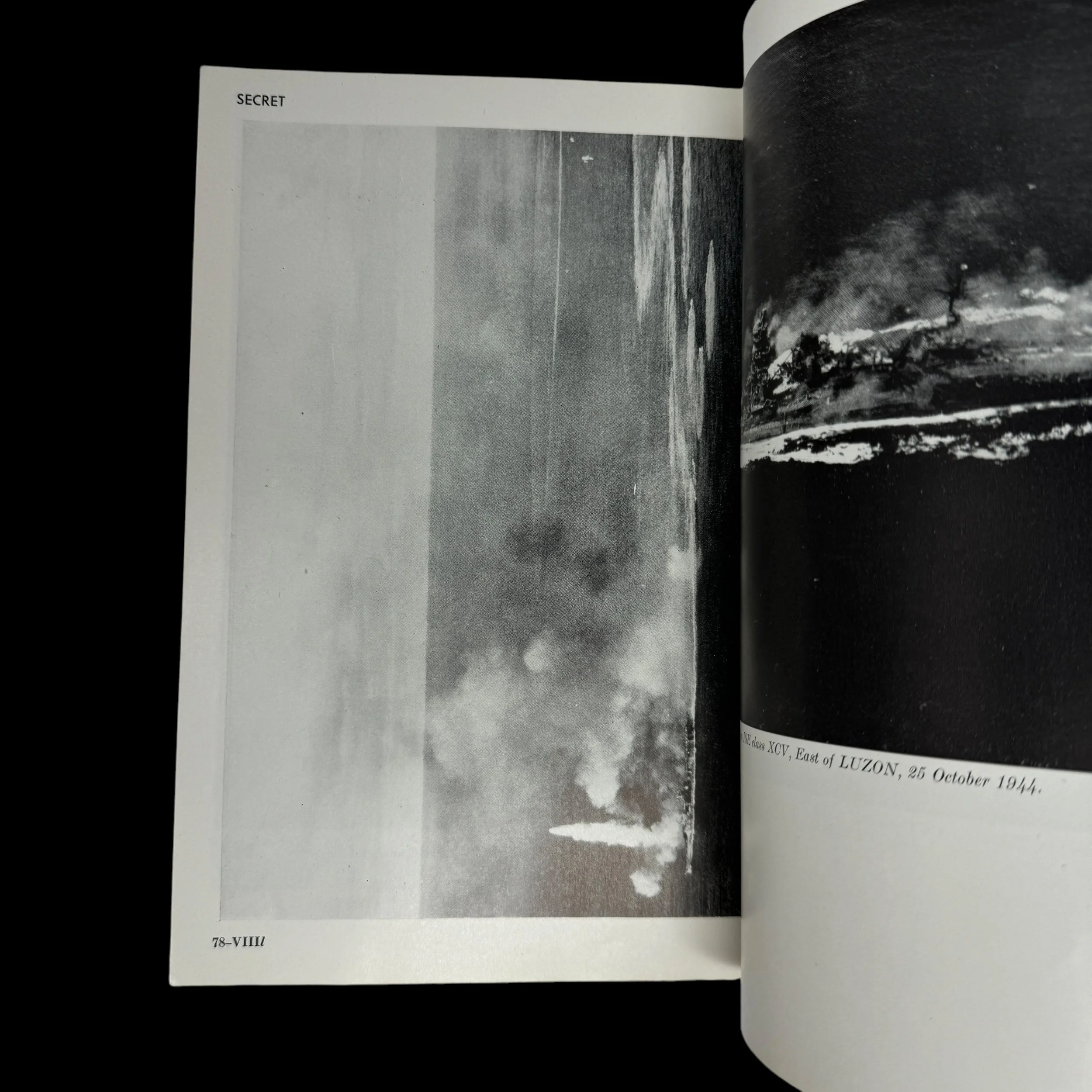

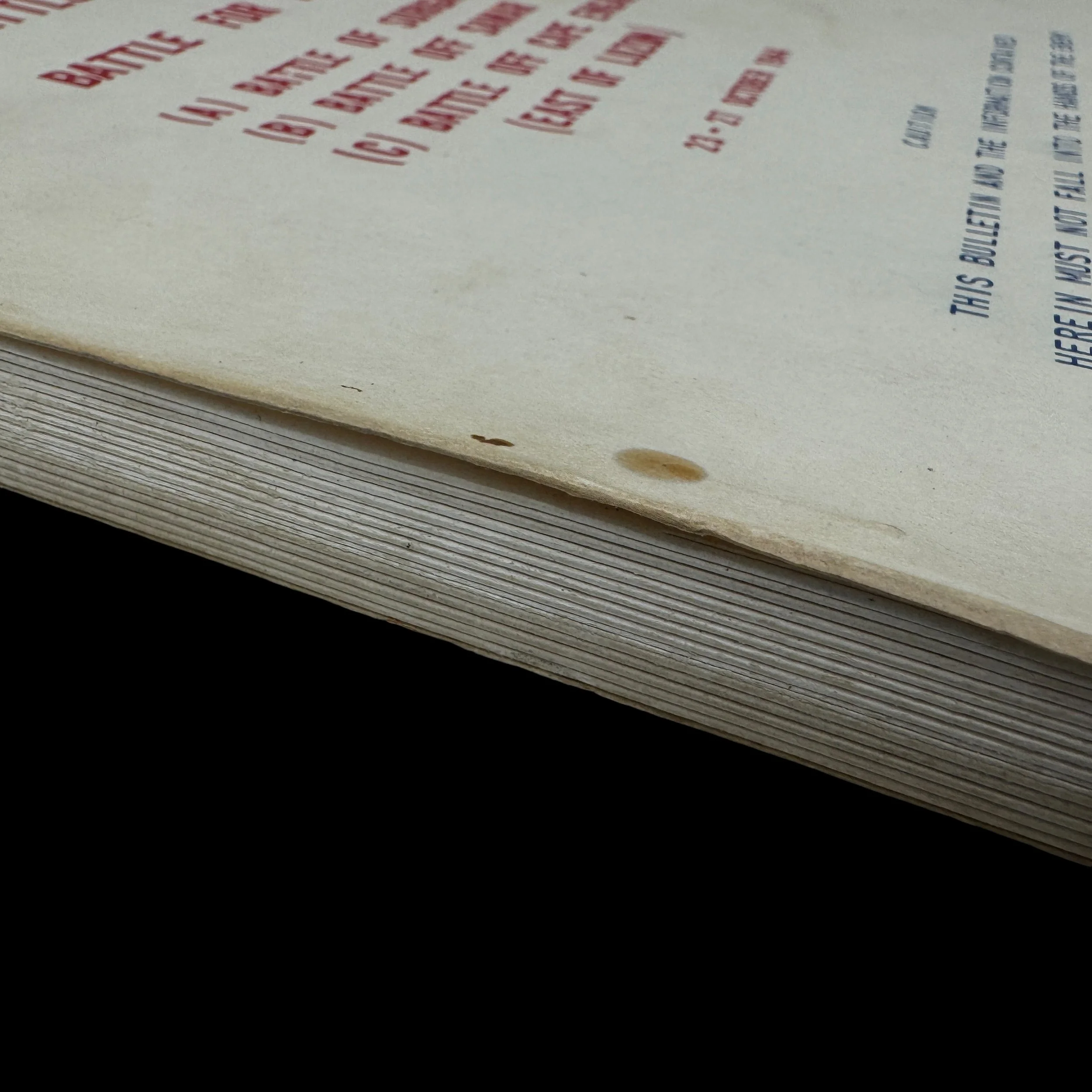
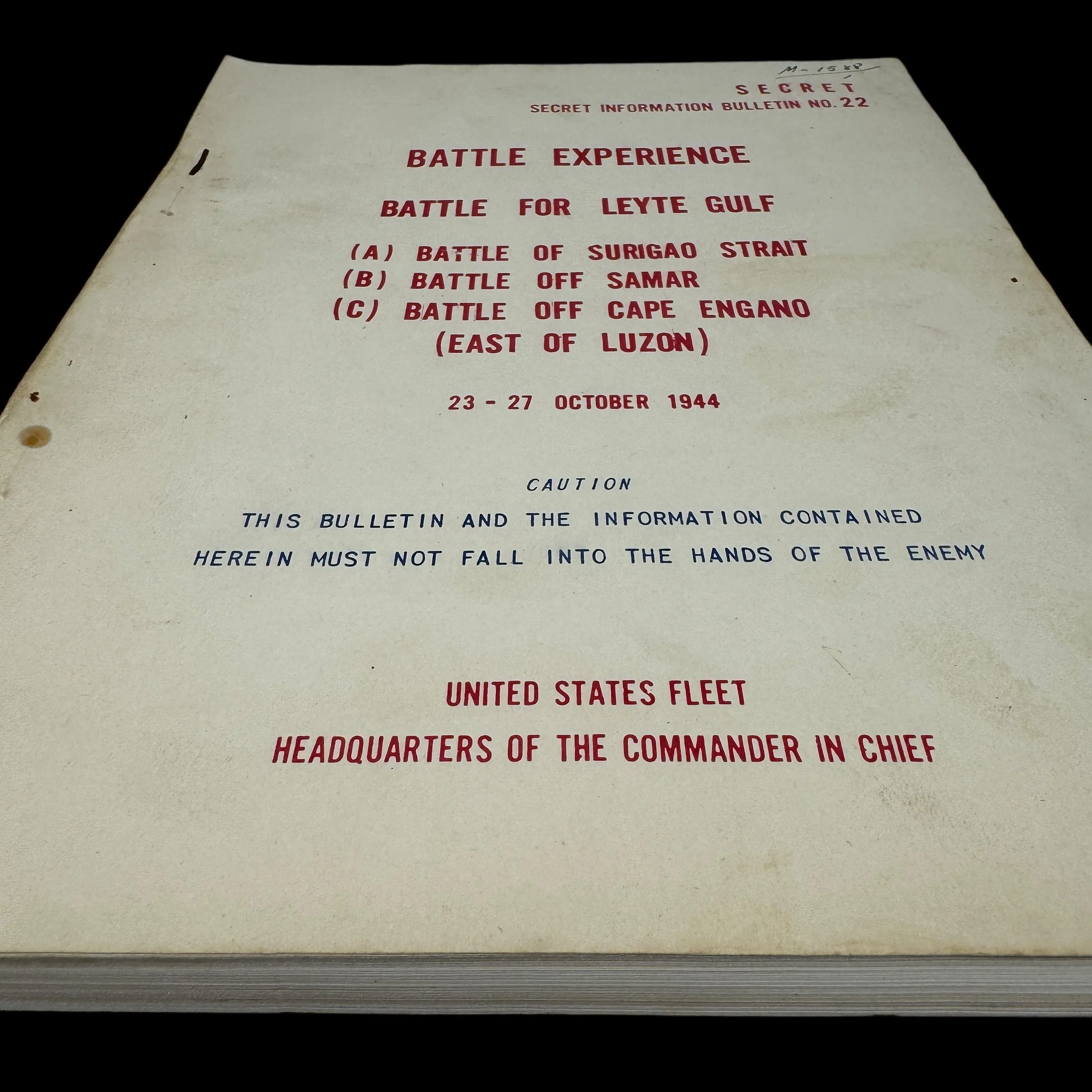
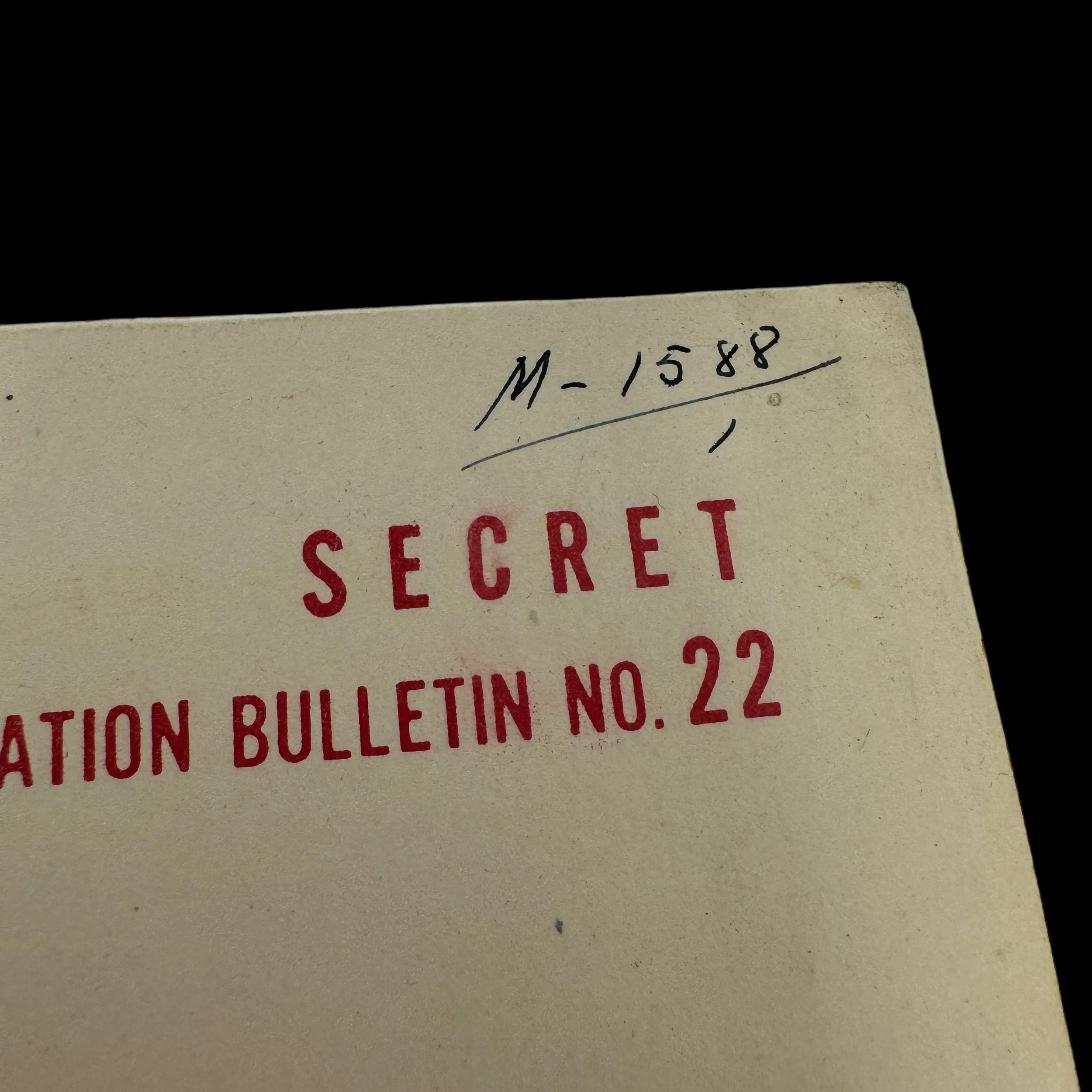
EXTREMELY RARE! WWII SECRET October 1944 Battle For Leyte Gulf Headquarters of the Commander in Chief Military Intelligence Report
Comes with a hand-signed C.O.A.
This extraordinarily rare, museum-grade World War II artifact is an original "SECRET" marked "Battle Experience - Informational Bulletin," meticulously produced by the United States Fleet under the Headquarters of the Commander in Chief. During WWII, the operations and strategic planning of the U.S. Navy were directed by two prominent commanders: Admiral Chester W. Nimitz, Commander in Chief of the United States Pacific Fleet (CINCPAC), and Admiral Ernest J. King, Commander in Chief of the United States Fleet (CINCUS). Their combined leadership played a pivotal role in the Allied victory.
This highly classified and intricately detailed bulletin, issued by the Headquarters of the Commander in Chief, contains secret military maps, intelligence reports, tactical movements, and a unique compilation of "battle experiences." These experiences were drawn from war diaries and battle reports submitted by various commanders and ships engaged in key operations. The bulletin was printed in extremely limited quantities, strictly for the eyes of high-ranking military officials, including Officers and Generals.
The rarity of this document is underscored by the directive on its first page, which states: "Information must not fall into enemy hands - when no longer required they shall be destroyed by burning. No report of destruction need be submitted." As a result, only a handful of these original "SECRET" "Battle Experience - Informational Bulletins" are believed to still exist.
This particular "SECRET INFORMATION BULLETIN NO. 22" is a remarkable example. Titled "Battle Experience—Battle For Leyte Gulf—Battle of Surigao Strait—Battle off Samar—Battle off Cape Engano (East of Luzon), - 23-27 October 1944" it offers an unparalleled glimpse into the strategic operations and experiences of the United States Navy during some of the most crucial campaigns of the Pacific Theater.
The Battle of Leyte Gulf, fought from October 23 to October 27, 1944, stands as one of the largest naval battles in history. It involved a massive and complex series of engagements across the waters surrounding the Philippine island of Leyte and marked the decisive confrontation between the United States Navy and the Imperial Japanese Navy. The battle was comprised of four major engagements: the Battle of the Sibuyan Sea, the Battle of Surigao Strait, the Battle off Samar, and the Battle of Cape Engaño. Each phase played a crucial role in determining the ultimate outcome of Leyte Gulf, and each represented a distinct tactical and strategic challenge for the participants. Here, we will explore three of the most significant components of this titanic struggle: the Battle of Surigao Strait, the Battle off Samar, and the Battle off Cape Engaño.
The Strategic Context: The Leyte Invasion
The strategic backdrop for the Battle of Leyte Gulf was the Allied effort to retake the Philippines from Japanese control. Leyte Island, in particular, was seen as a key foothold from which the Allies could launch further operations to liberate the rest of the Philippines. The Japanese viewed the loss of the Philippines as catastrophic because it would cut their empire off from critical resources in Southeast Asia, particularly oil from the Dutch East Indies (modern Indonesia). The Imperial Japanese Navy, although diminished in strength, resolved to mount an all-out counteroffensive to disrupt the Allied invasion of Leyte.
The Japanese devised a complex, multi-pronged strategy known as the "Sho-Go" (Victory) Plan. The plan called for a coordinated pincer movement involving several separate Japanese naval forces converging on Leyte Gulf. The Southern Force, under Vice Admiral Shoji Nishimura, was tasked with transiting through Surigao Strait to attack the Allied fleet from the south. The Center Force, commanded by Vice Admiral Takeo Kurita, was to move through the Sibuyan Sea and strike the Allied invasion force directly. Meanwhile, the Northern Force, a decoy fleet commanded by Vice Admiral Jisaburō Ozawa, was to lure the main American fleet away from Leyte by drawing them northward with the appearance of a major carrier battle. However, due to faulty coordination, heavy losses, and poor communication, the Japanese strategy would unravel over the next several days in what would be the last major naval battle between battleships in history.
The Battle of Surigao Strait (October 24-25, 1944)
The Battle of Surigao Strait was one of the most critical engagements of Leyte Gulf and marked the last battleship-on-battleship confrontation in naval history. The Japanese Southern Force, under the command of Vice Admiral Nishimura, sought to navigate the narrow waters of Surigao Strait to catch the Allied fleet in Leyte Gulf by surprise. The U.S. Navy, however, was well-prepared for this eventuality.
On the night of October 24-25, 1944, Admiral Jesse Oldendorf, commanding the U.S. 7th Fleet Support Force, deployed a powerful battle line of six battleships, supported by cruisers and destroyers, to block Nishimura's advance through Surigao Strait. Using a tactic that harks back to the classic naval "crossing the T," Oldendorf arranged his battleships in a perpendicular formation across the strait. This allowed the American ships to bring all their guns to bear on the advancing Japanese force, while the Japanese ships could only fire from their forward batteries.
Nishimura's force, composed of the battleships Yamashiro and Fuso, the heavy cruiser Mogami, and several destroyers, began advancing up the strait, unaware that they were heading into a well-prepared ambush. U.S. destroyers, stationed ahead of the main American battle line, launched a series of torpedo attacks, striking both Fuso and Yamashiro. Fuso was hit and eventually broke apart, sinking in the narrow waters of the strait. The remnants of Nishimura's force, including Yamashiro, pressed forward but were met by the full weight of Oldendorf's battleship line. The American ships, including USS West Virginia, USS California, and USS Tennessee, opened fire with devastating effect. Yamashiro was reduced to a burning wreck before finally sinking, along with the remaining Japanese ships. Nishimura himself perished in the engagement.
The battle was a decisive American victory. Oldendorf's forces had executed a textbook ambush, and the Japanese Southern Force was effectively annihilated. This engagement was notable for being the last time in history that battleships engaged each other in direct combat. While it was a clear tactical victory for the U.S., it was only one part of the broader Battle of Leyte Gulf, and the conflict was far from over.
The Battle off Samar (October 25, 1944)
If the Battle of Surigao Strait represented a crushing defeat for the Japanese Southern Force, the Battle off Samar was a near-disaster for the U.S. Navy's smaller escort carriers and destroyers that held the line against overwhelming odds. On the morning of October 25, 1944, Vice Admiral Kurita's Center Force, which had earlier been driven back by aerial attacks in the Sibuyan Sea, unexpectedly reappeared off the coast of Samar. Kurita's force included four battleships, six heavy cruisers, two light cruisers, and eleven destroyers, representing a significant portion of Japan's remaining naval strength.
Opposing Kurita were the lightly armed ships of U.S. Task Unit 77.4.3, also known as "Taffy 3." Commanded by Rear Admiral Clifton Sprague, Taffy 3 consisted of six escort carriers, three destroyers, and four destroyer escorts. These ships were tasked with providing air support for the invasion of Leyte but were not equipped for a direct confrontation with Kurita's powerful fleet.
When Kurita's force appeared on the horizon, Sprague and his men were caught off guard. The Japanese ships, particularly the battleship Yamato, began shelling the outgunned American ships. Despite the overwhelming odds, the U.S. ships fought valiantly. The American destroyers and destroyer escorts launched torpedo attacks, charging the much larger Japanese ships with suicidal bravery. The USS Johnston, commanded by Commander Ernest E. Evans, led the charge and scored several hits on the Japanese cruisers before being overwhelmed and sunk. The destroyers Heermann and Hoel followed, attacking Kurita's heavy ships while drawing fire away from the vulnerable escort carriers.
Meanwhile, the escort carriers themselves launched continuous air attacks against the Japanese fleet. Despite being equipped with relatively light aircraft—mostly armed with anti-submarine ordnance—the American pilots made aggressive attacks, dive-bombing and strafing Kurita's ships. The intensity and ferocity of the American defense, coupled with confusion among Kurita's forces, caused the Japanese admiral to hesitate. Believing he was facing a much larger American fleet, Kurita ordered a withdrawal.
The Battle off Samar was one of the most remarkable engagements of the Pacific War. The outgunned and outnumbered American force had managed to fend off a vastly superior Japanese fleet, saving the American invasion force at Leyte. The heroism of the American sailors and airmen, especially those aboard the destroyers and destroyer escorts, became legendary. Commander Ernest Evans was posthumously awarded the Medal of Honor for his actions aboard the Johnston.
The Battle off Cape Engaño (October 25-26, 1944)
While the Battle off Samar raged in the central Philippines, a separate engagement was unfolding to the north. The Japanese Northern Force, commanded by Vice Admiral Ozawa, served as a decoy intended to lure the main American fleet away from Leyte Gulf. Ozawa's force consisted of four aircraft carriers, two battleships (equipped with flight decks), and several cruisers and destroyers. However, these carriers were largely bereft of aircraft and pilots, as Japan's air power had been decimated earlier in the war.
The U.S. 3rd Fleet, commanded by Admiral William "Bull" Halsey, took the bait and steamed north to engage Ozawa's carriers. On October 25, 1944, American carrier aircraft launched waves of attacks on Ozawa's force in what became known as the Battle off Cape Engaño. The American pilots, operating from powerful carriers such as USS Essex and USS Lexington, overwhelmed the Japanese carriers. The Zuikaku, Japan's last remaining fleet carrier that had participated in the attack on Pearl Harbor, was hit repeatedly and sank. The light carriers Zuihō and Chiyoda were also sunk, as were several other ships in Ozawa's force.
Despite the destruction of the Japanese carriers, Halsey's decision to pursue the decoy force left the invasion fleet at Leyte temporarily vulnerable, leading to the crisis at Samar. However, the destruction of Ozawa's carriers marked the end of Japan's carrier fleet as an effective fighting force. From this point onward, the Imperial Japanese Navy would be unable to mount any meaningful offensive operations.
Conclusion: The Decisive Battle
The Battle of Leyte Gulf, including the engagements at Surigao Strait, Samar, and Cape Engaño, was a decisive American victory. The Imperial Japanese Navy was effectively broken, and Japan's ability to defend its empire crumbled. The courage and tenacity displayed by the American forces, particularly in the face of overwhelming odds at Samar, cemented Leyte Gulf's place as one of the most significant naval battles in history.
The battle opened the door for the liberation of the Philippines and accelerated the defeat of Japan in the Pacific War. The destruction